-
Posts
6,061 -
Joined
-
Last visited
Content Type
Profiles
Forums
Gallery
Events
Posts posted by James H
-
-
Wonderful stuff, and I like the breeze effect on those sails 👍
- AJohnson, Bowline and chris watton
-
 3
3
-
Just a quick, interim update before completion in the next days.
Saucy Jack is probably one of the easiest boats to rig, even with the shrouds and rats. Very little timber work on mast/spars too. Here are a couple of the parts I made for this, ready for rigging blocks.
The bowsprit is now added.
The sails are first dyed in liquid RIT dye (Tan) and left in for a little longer than normal. I wanted these fairly light to suit the white hull underside and pear wood colours. Too much contrast would've hurt my eyes.
Jack is finally masted and her full size is now clear. Yes, she's quite dinky!
Proper rigging starts with the shroud lines wrapped around the masthead.
And then tied off via 3mm deadeyes.
I told you it was only a small update!
More very soon when she's fully complete.
- ccoyle, Ryland Craze, BenD and 9 others
-
 12
12
-
On 3/16/2022 at 10:18 PM, BenD said:
I've increased it to 200kb
Some sites I'm a member of only allow 10k for a pic (!!!!) and max size of about 50px x 50px 🤪
-
Welcome to a fellow northerner. I love Manchester. Lower Turks at Shudehill is one of my favourites, and the Vine on Kennedy Street. 🍺
- Keith Black, mtaylor, Tomasz B and 1 other
-
 4
4
-
7 minutes ago, Blue Ensign said:
A sweet build James, very nicely done, love the finish you've achieved on the Windlass.
B.E.
Cheers. It's been a lovely build too.
I think I added another update just after that, while you were posting. Hull final pic shown.
Here's the wood grain technique from the instructions I did for the VM ship's boats.
-
And onto today's second part of my update. I do it this way now so there aren't 30 - 40 pics in one post.
The companionway is a nice, simple assembly. Nothing difficult to fathom here.
The rudder can now be permanently fitted, and the tiller shaped and glued into place.
PE rudder hinge straps are now painted and glued into place with CA gel.
The channels on Jack are very narrow, and engraved lines on them indicate where you need to drill through and insert shortened brass pins for some extra strength. I also deepen the engraved holes on the upper rails, going into the bulwarks about a millimetre or so. The channels are then glued into place. Notice the area on rail left unpainted, where the engraved position was given. That was masked while painting the rails, so there's a good, clean gluing connection.
Jack's stern frieze is now painted white and glued into the green panel.
Jack's bowsprit is roughly parallel to the bottom of the keel/waterline. As the bowsprit is from 4mm dowel, I used a 3mm piece, wrapped in some sandpaper, and used the bowsprit post as a guide for sanding down the gunwale and bulwark to accommodate it. A simple task that took no more than a couple of minutes.
Other ironwork is now fitted, such as the bulwark cleats, eyelets and belaying pins.
3mm deadeyes are now fitted to the chainplates and secured to hull. The brass pins will then be painted over (not shown on these pics).
Saucy Jack's completed hull!
Next up will be masting and rigging.
-
Another update..
This time, it's finally fitting out the hull before masting. This is where things, for me at least, come together quickly as I've already made the deck fittings, during the early stages of this build. That's the sort of stuff I do between gluing frames and planks. Here you see the fishing hatches from the previous update, now fitted.
Then the belaying rack, mast base and eyelets in situ.
Then the forward hatch is built and fitted.
The windlass on Jack is supplied as a 3D printed part and looks very nice. The windlass side posts are designed to trap the 3D part, allowing a little freedom for things to move so you can properly and evenly mount the assembly to the deck. The drum would've been wood, so this was painted with Tamiya Desert Yellow, then oil paint dragged with Raw Umber and Raw Sienna, creating a grain effect.
With the windlass mounted, the bowsprit post knee and base are added. The windlass pawl is also fitted to the bowsprit post, made from PE.
The capstan on Jack is quite small compared with the other fishers. Please ignore the last picture where it's popped apart slightly at the top.
-
So pleased to have Artesania Latina with us on MSW.
They really are the company who started me in this hobby, and by that token, responsible for MSW today.
- Katsumoto, mtaylor, Ryland Craze and 3 others
-
 6
6
-
A quick update!
Work progressed on the lower hull. Sanding, filling, priming....repeat!
Once the hull was unmasked, it was masked again for the upper bulwarks. I used Tamiya Flat Green for this, applied with an airbrush. This stuff applies real nice and seems like the sort of shade that working boats would've used.
...then the engraved wales. The align with the lowest etched line on bulwark, and is designed to nicely had the transition from bulwark to planking (plus any resulting pin holes!)
...then the upper rails. Again these fit in the narrow band just under the painted bulwarks.
....then lastly the gunwales. These are applied and then the rear gunwale is fitted separately.
Belaying racks are now fitted.
A small break from hull work now as the fish hatches and grating is assembled.
Ok, more in a few days when hull will be fitted and totally complete.
- KentM, ccoyle, realworkingsailor and 10 others
-
 13
13
-
-
35 minutes ago, Blue Ensign said:
I think you may have the bulkhead screens the wrong way around Glenn.
The hinges should be on the aft side which puts the Mizen mast in the Coach rather than the Bedspace.
B.E.
You are 100% correct.
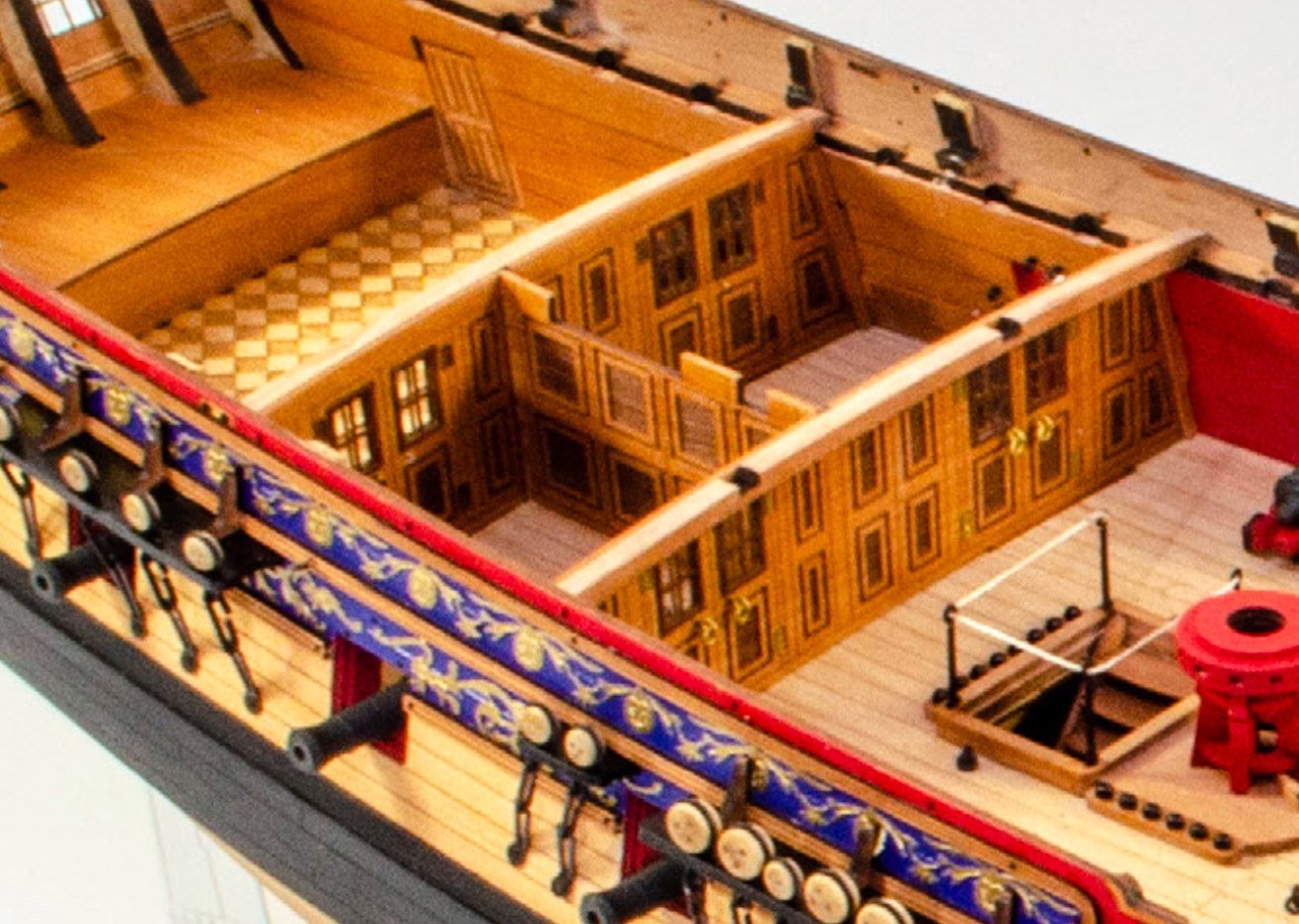
- Theodosius, yvesvidal, Matt D and 4 others
-
 7
7
-
-
With the null now planked, the MDF bulkhead ears can be removed. These are twisted and snapped off with pliers before any remnants are sanded flush with the deck.
I found the maple deck to fit perfectly with no adjustment needed. This is gently bend before being glued into place. LOTS (!!) of clamps were used to hold it down around the edges so nothing decided to lift while the glue set.
The inside waterway and timberhead parts were now added. The position for these two parts is engraved on the inner bulwark. There are no individual timberheads to bother you on this kit.
A sanding stick is now drawn over the bulwark top edges, levelling and evening the surfaces.
A waterline is now referenced from the drawings, and applied to the hull. Everything above this is now masked off and below, it's filled with dilute acrylic filler.
More soon!
- BenD, GrandpaPhil, Ryland Craze and 13 others
-
 16
16
-
For the first planking, you could, if you wish, split the planks into halves to make it easier. You'll also need to start tapering very early on in this process.
As is now the norm, the keels are faced with pear, creating a rebate into which the second layer planks will sit. This demarcation takes a lot of guesswork out of this process. Second layer planking is also in pear.
Before planking, the outer, lower counter is added. This is first soaked and allowed to dry while clamped/taped to the hull. When thoroughly dry, it's then glued into place.
The stern board is now fitted. The 'windows' will be removed later in the build.
The outer planking starts with the addition of the upper bulwarks. These are glued and pinned into place. The position of the pins (shown), means the holes will eventually be covered by the wales.
Second layer of planks now complete. These are added with CA gel and tapered/edge-bevelled so they fit as closely as possible to each other. I have added some as halves, but only in the lower area as this will be painted over.
Before sanding, the engraved portion of the bulwarks is masked off, protecting that detail.
She's most definitely looking the part now.
-
Time for an update.
Fairing Saucy Jack is a breeze and seemed to take me less time that Fifie, Eyrcina, Nisha and Zulu. Dead simple. Just use something similar to a sanding stick and allow the material to curve over the bulkheads as you sand. Check a plank at intervals, to make sure you have maximum surface contact area to the bulkheads.
A few of close-ups of the faired hull.
The lower, inner counter on this fisher, is cut from a thin, maple veneer. This allows it to band around the curves very easily. This was now glued and taped/clamped while it set.
The keel is a 3-part construction, with the prow and lower keel being fitted first. The rudder post will be left until after planking, so the tail end of the planks can be properly shaped to the MDF end.
The sides of the maple counter are now sanded flush with the hull sides so there are no protrusions.
Jack's bulwarks are single-piece items, with the lower engraved line being the one you need to align with the top of the ply deck. Get that right, and you'll have no problems here. Each bulwark was glued and pinned into place until dry. No glue was used above the deck though, as those MDF ears will eventually be removed.
-
7 hours ago, Grey said:
Definitely making way…
I am struggling a bit on the 2nd layer of planking. I just haven’t found a method that works real well for me yet. Little too much guess work for my tastes-and I fumble around with the CA a bit. Need to find a better way to apply.
Still enjoying the process, even if I need to remind myself that frustration is part of learning. 🥲Thanks for stopping in!
Cheers,Grey
I use Gorilla CA gel, straight from the bottle. The tip is fine enough to apply nice, small dots along the planks with some consistency.
- Thukydides, Grey and chris watton
-
 2
2
-
 1
1
-
That really is just gorgeous. I think you populated the deck perfectly.
- AJohnson, chris watton and BobG
-
 2
2
-
 1
1
-
When you paste something into the text box, a message will pop up in the bottom left corner of the window, like this:

Just click that 'Paste as plain text instead' link, and the text will match MSW's regular system font.
- mtaylor, bruce d and Ryland Craze
-
 3
3
-
3 hours ago, Rcboater Bill said:
I know that the Gallery is only for photos, and limits the types of files that can be uploaded.
Is there a way to link to an external site for a video? I have a short video (30 -60 seconds long) of my model underway. It is hosted on my (publicly viewable) Smugmug page. I tried to add a link in the description of the album, but it won’t let me- I get an error “There is no image at that URL”.
The gallery is only for completed models anyway, so a model 'underway', wouldn't be a suitable addition.
-
It was all sorted via contact form.
- Keith Black, Jack12477 and mtaylor
-
 3
3
-
-
Ok, time for an update.
I'm sure by now you'll know my format and that these photos will be a part of the instruction manual...starting with the best way to remove parts from the sheets.
There's only five bulkheads on this model which need bevelling, and I always opt to use a Dremel as tackling those inside curves is a doddle. Bevelling lines are engraved on this kit, and of course, these are only a starting point as more will be removed during fairing.
As is convention with my VM builds, most initial building is done 'dry' and glue applied later. This is simply to do with making sure we have a completely aligned set of frames before any glue sees the model. Anything mis-set early on could impact the build later.
Parts are now slid into position at bow and stern, providing a base for the ends of the planks to fit against. All parts fit like a glove. These are also pinned into place using pegs which ensure alignment.
The lower deck is now fitted. This provides a nice solid platform which creates some rigidity in the assembly. A centre section is now glued into position which provides mid-deck support for the main deck, and coincides with the fish hatches and water well in what will be a fat-bellied little boat.
A familiar assembly feature in a lot of VM kits is the construction of the stern area using the shaped set of 'timbers' which are then slotted across the rearmost bulkheads.
Another VM feature are the longitudinal deck beams which conform to the sheer of the deck and 'lock' all the bulkheads into position.....not that they need any real locking as they all fit perfectly with little to no play in them.
With everything in place and happy that all construction is correct, slightly dilute Titebond is now brushed into the various joints and left to dry.
I know some must be apprehensive of bending the sub deck so it locks into position across the hull, but it really is just fine, and the deck sits 100% on all the bulkheads with no pinning needed whatsoever.
Lastly, the lower stern shaping blocks and fillers are added.
Next job is fairing, bulwarks and planking. Laterz!
-
-
The gunwales look like you didn't struggle too much. They look just perfect.
Just a quick note to check this topic out for when your pictures are upside down:
- paul carruthers, Gregory, robdurant and 1 other
-
 4
4

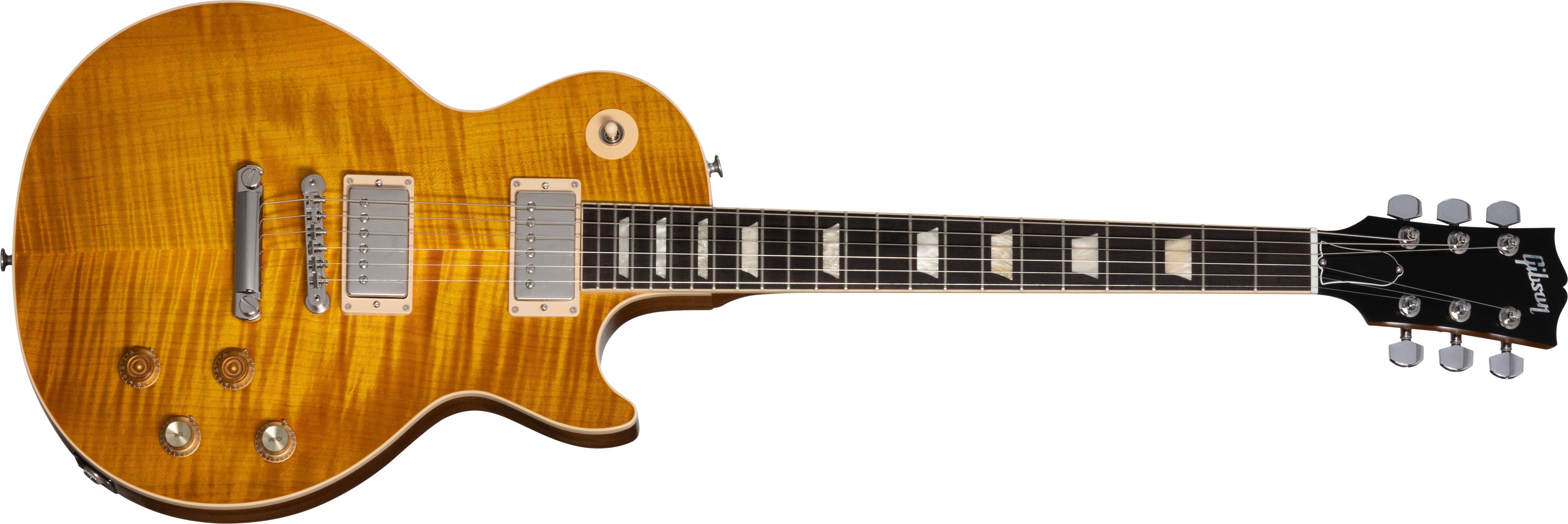
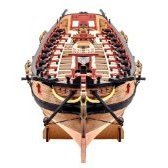
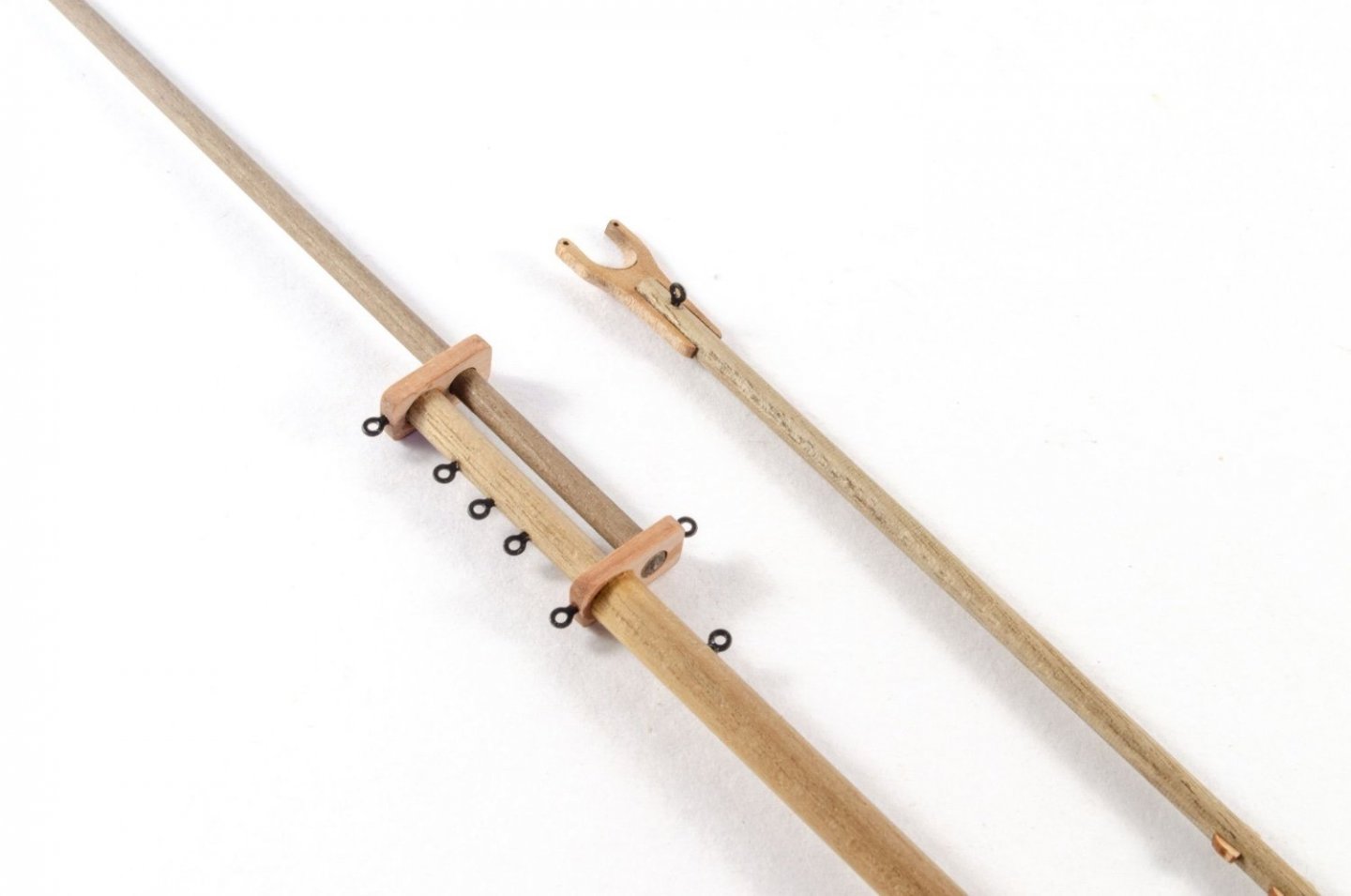
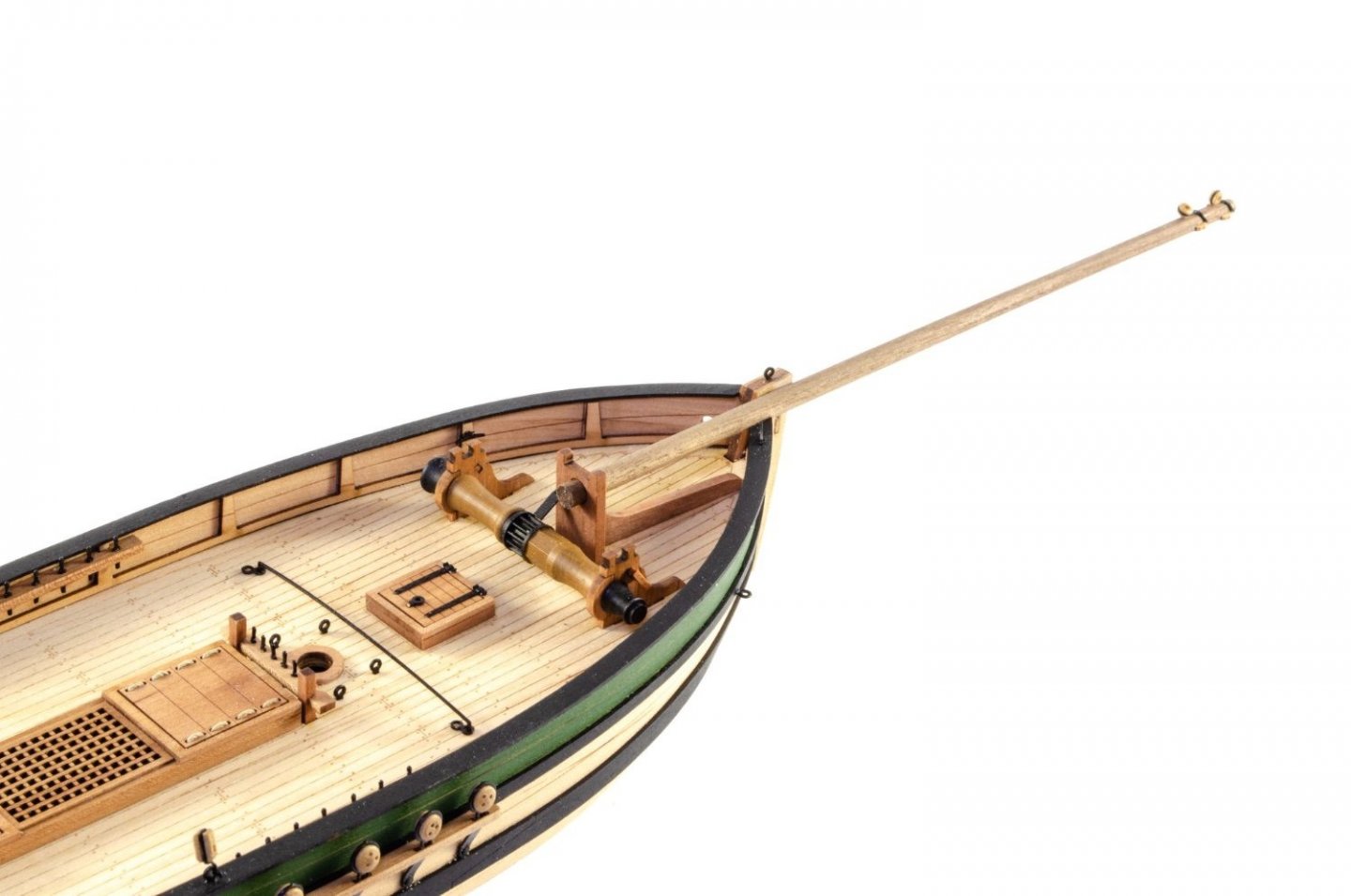
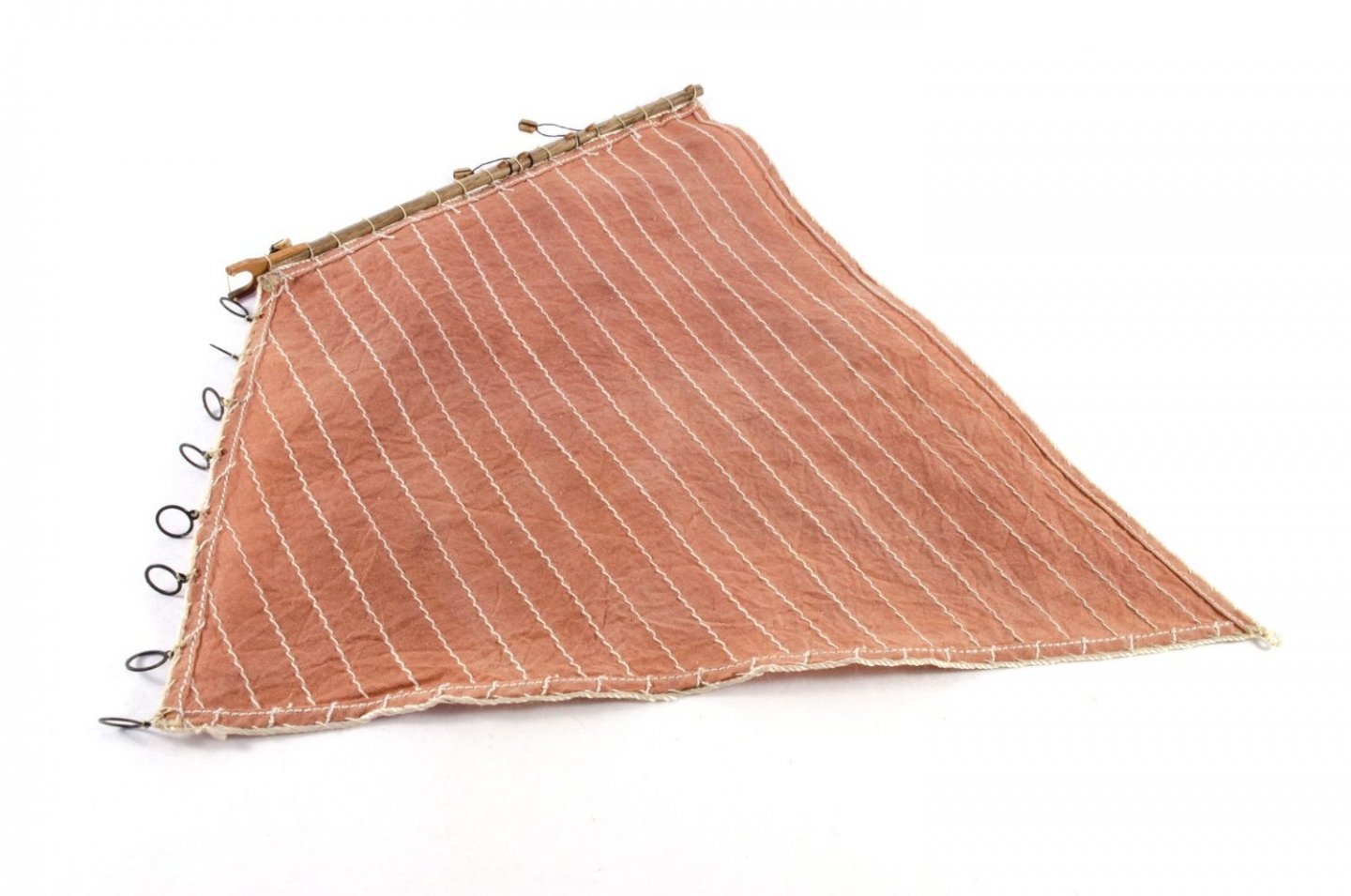
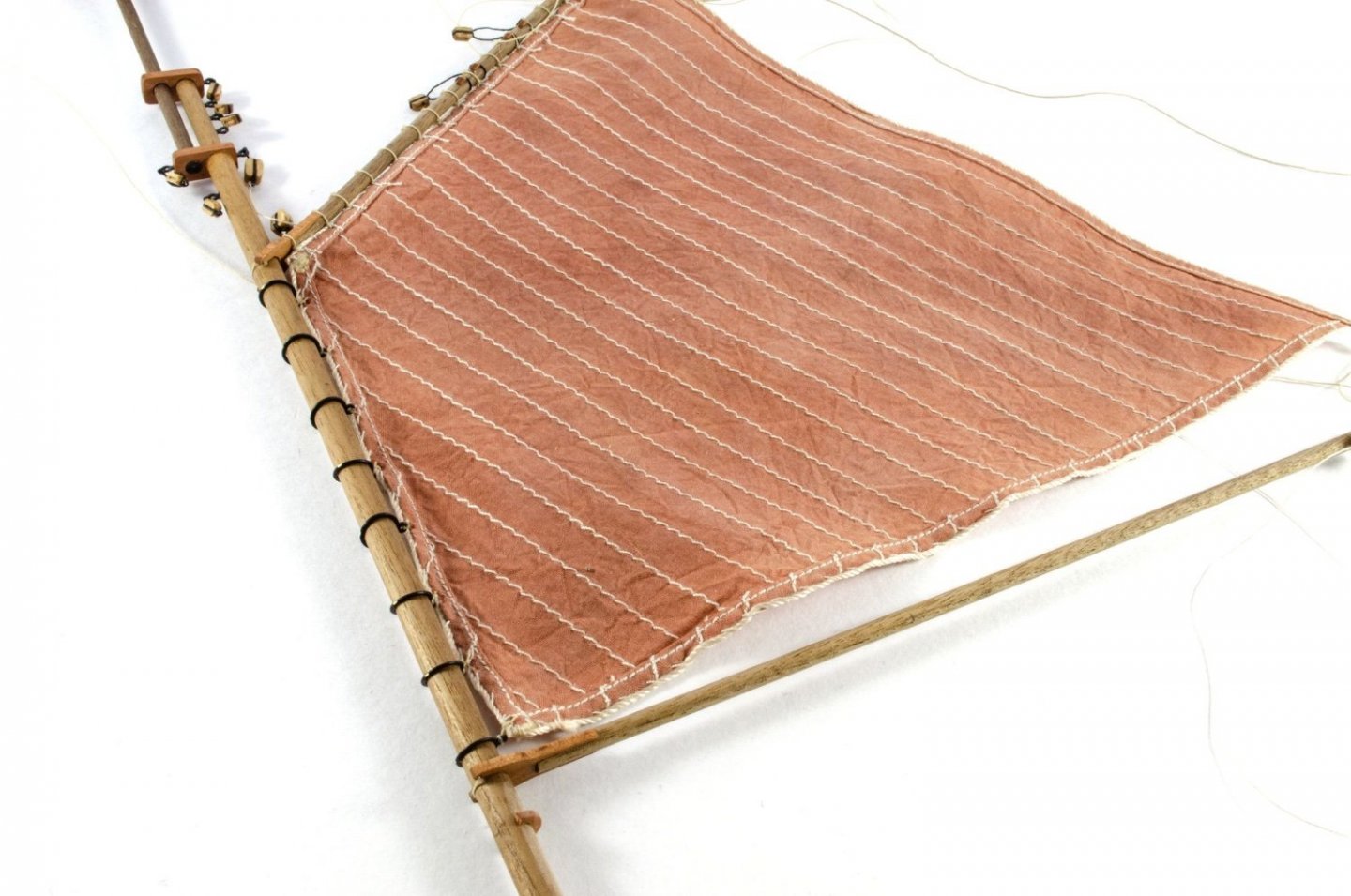
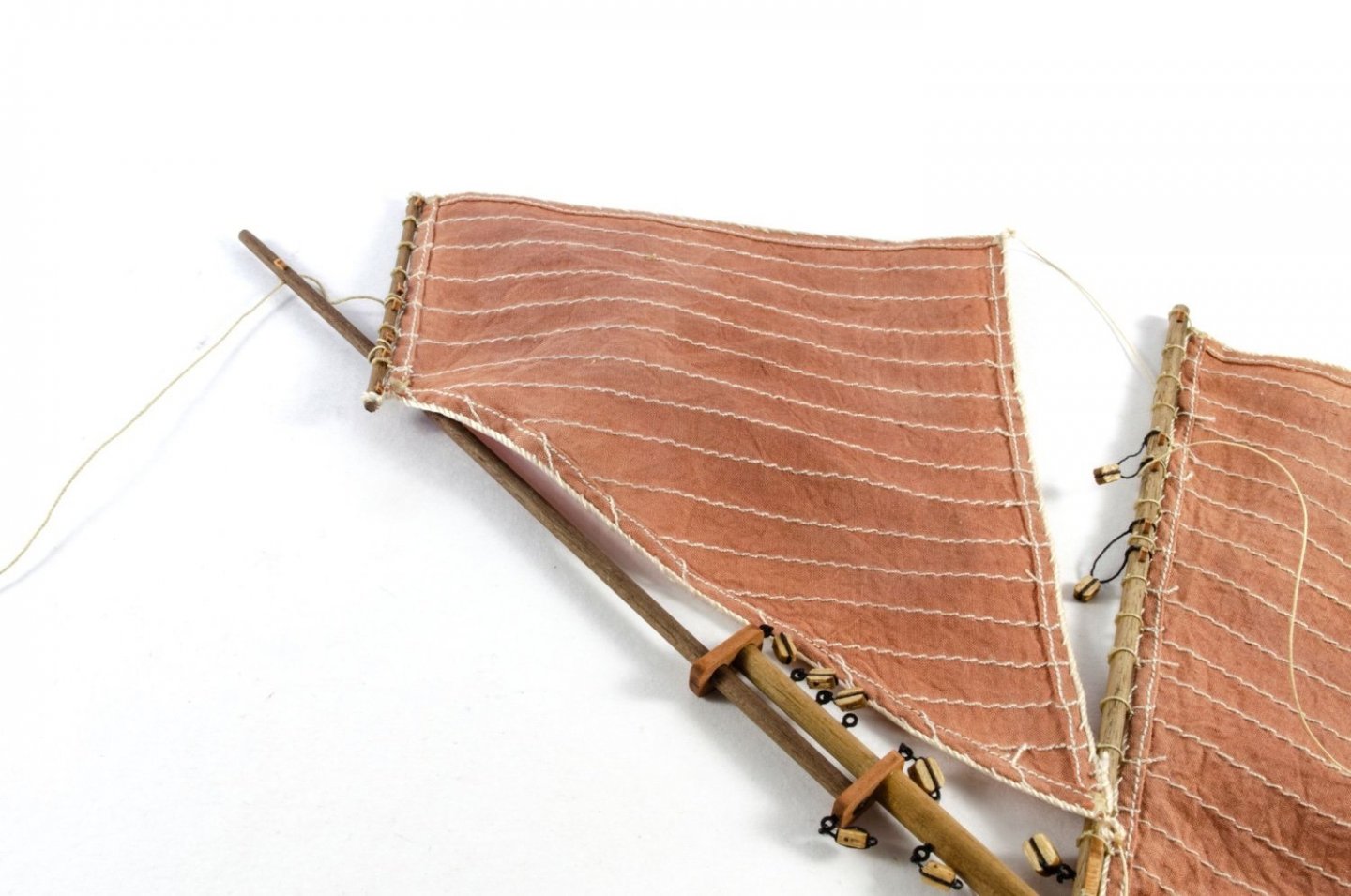

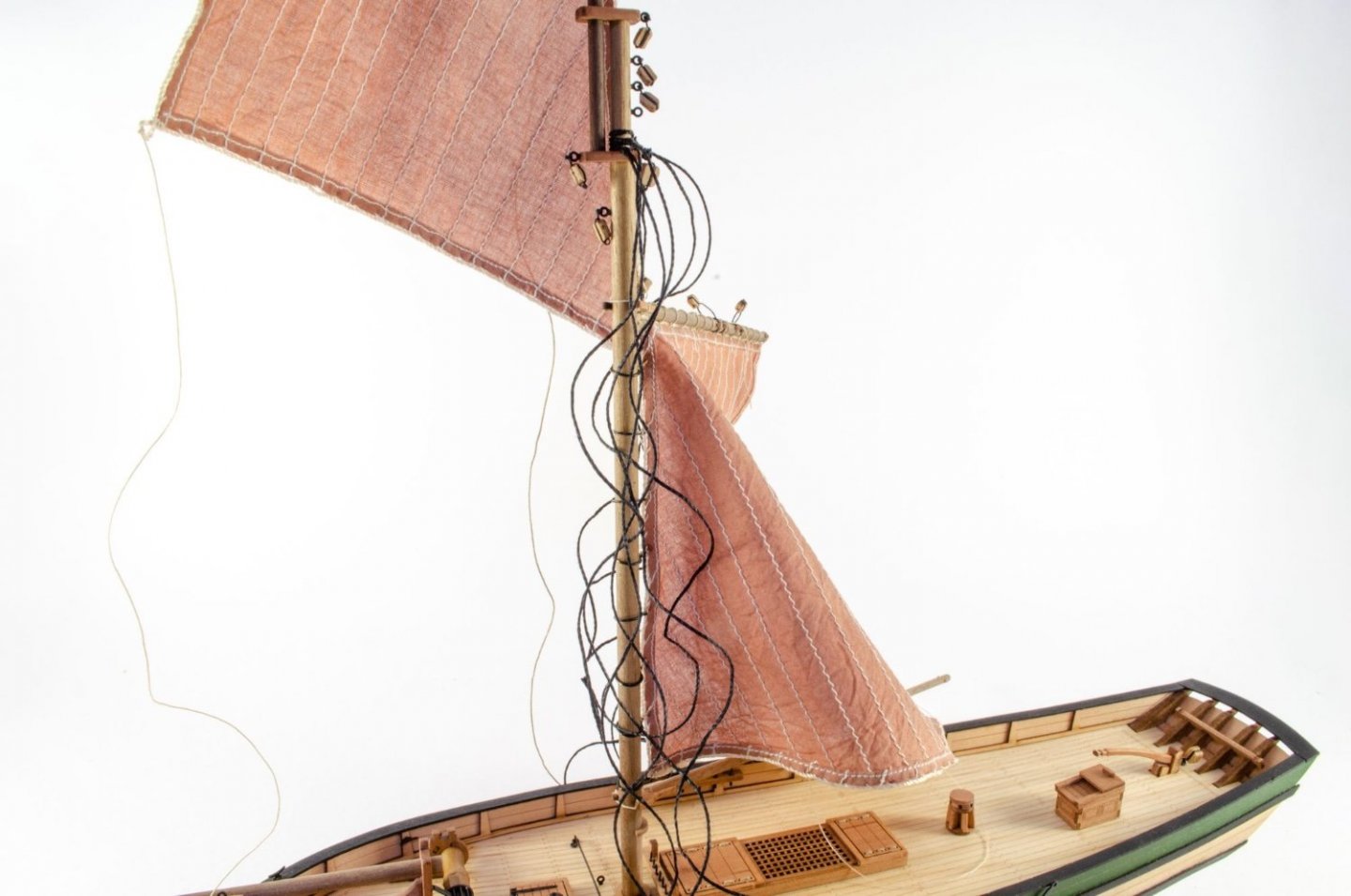
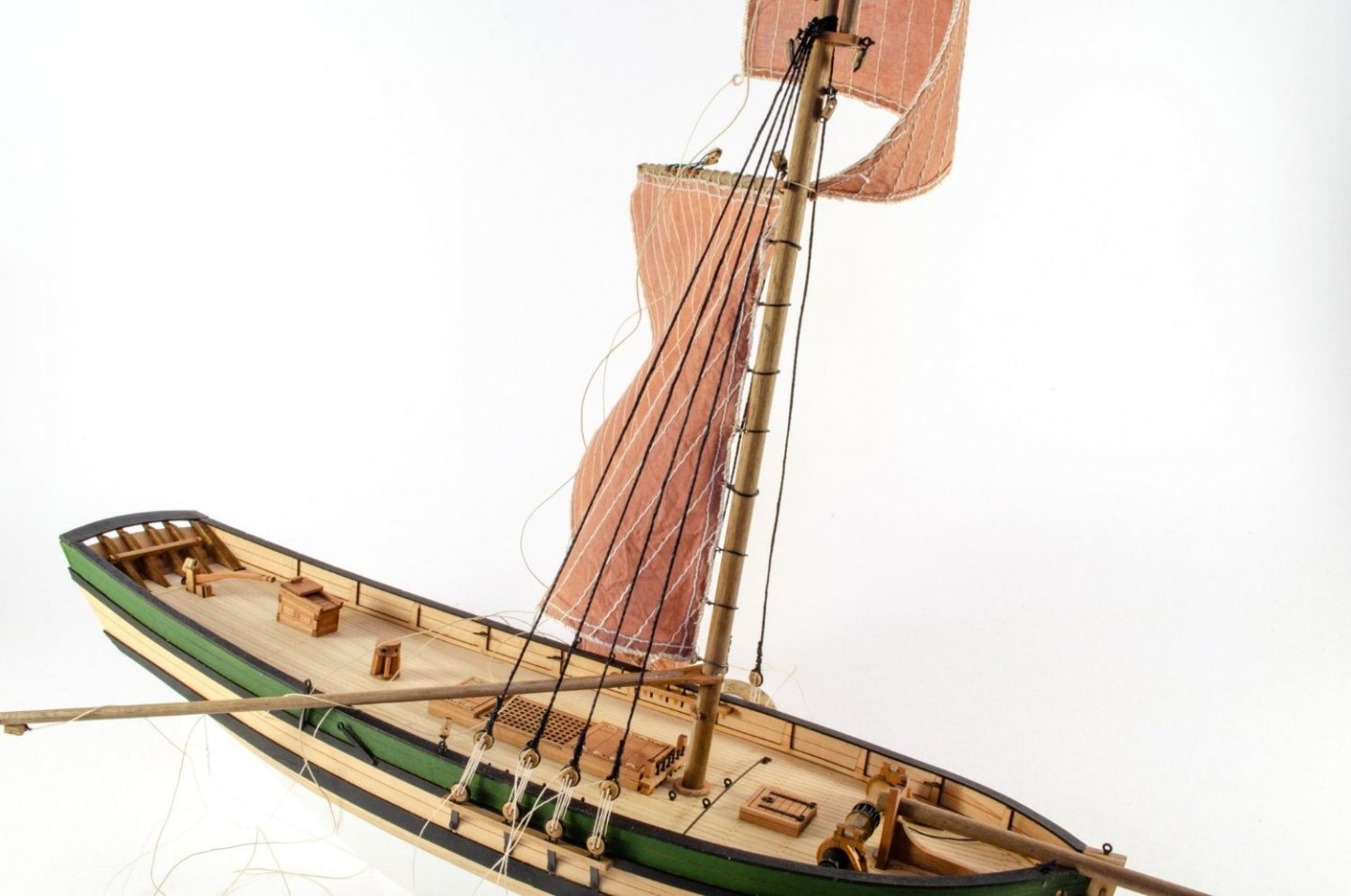


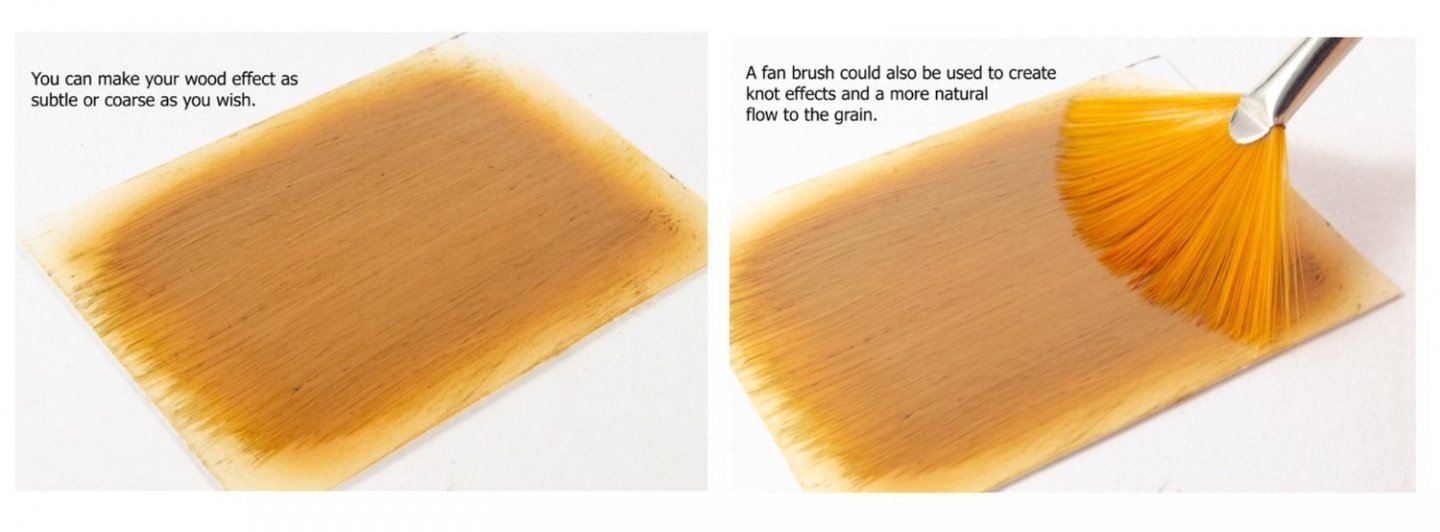
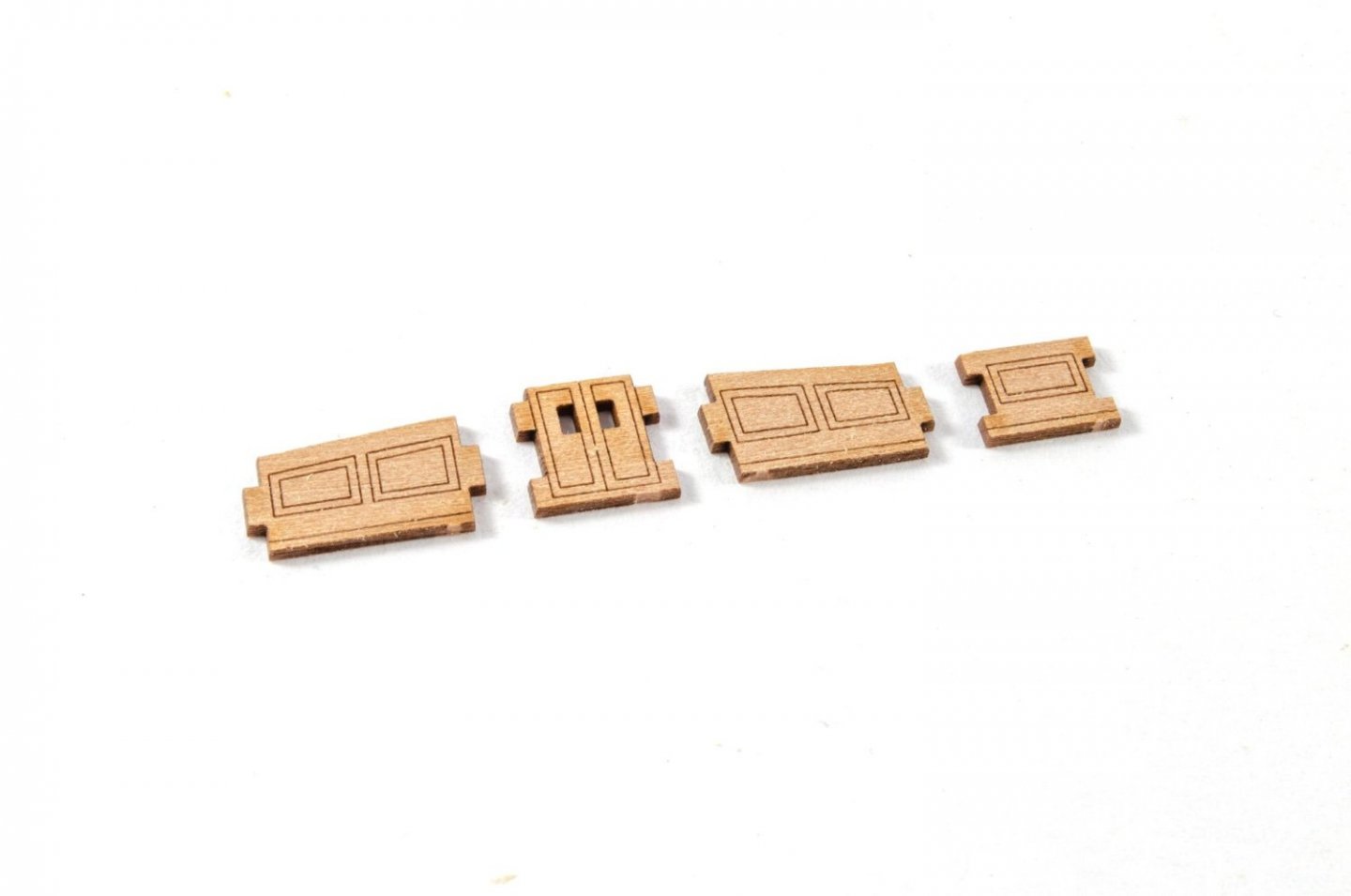
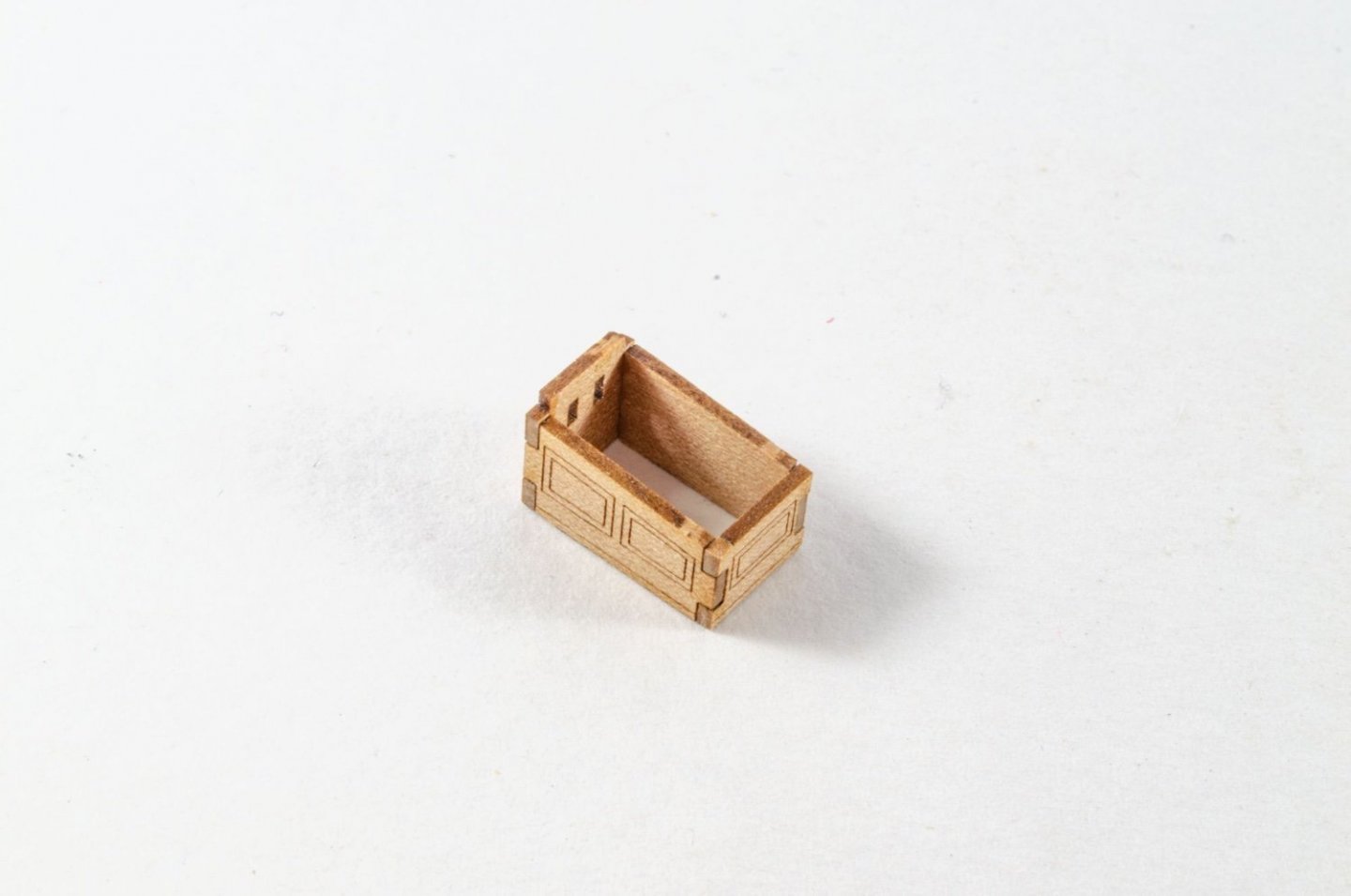
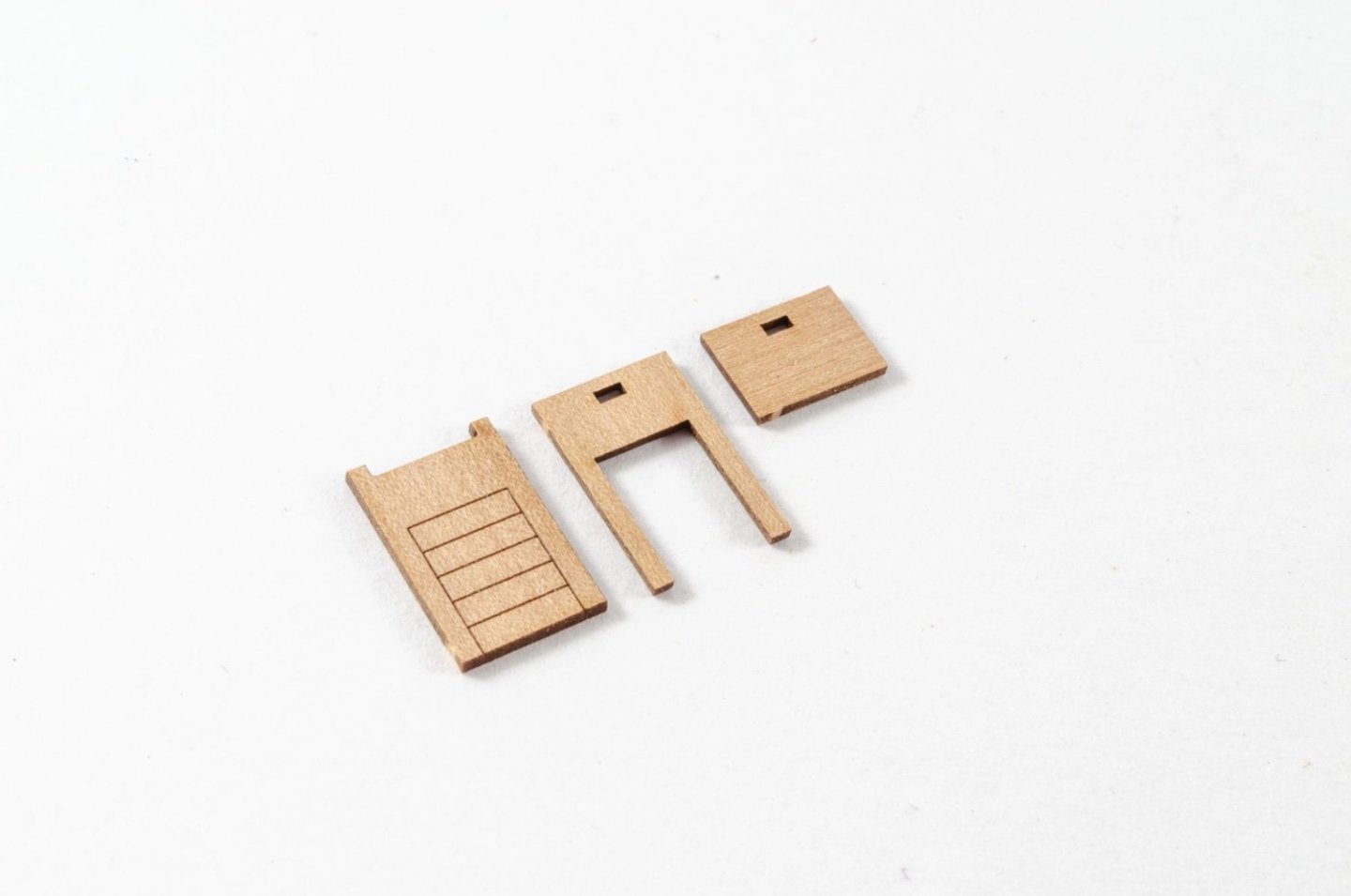
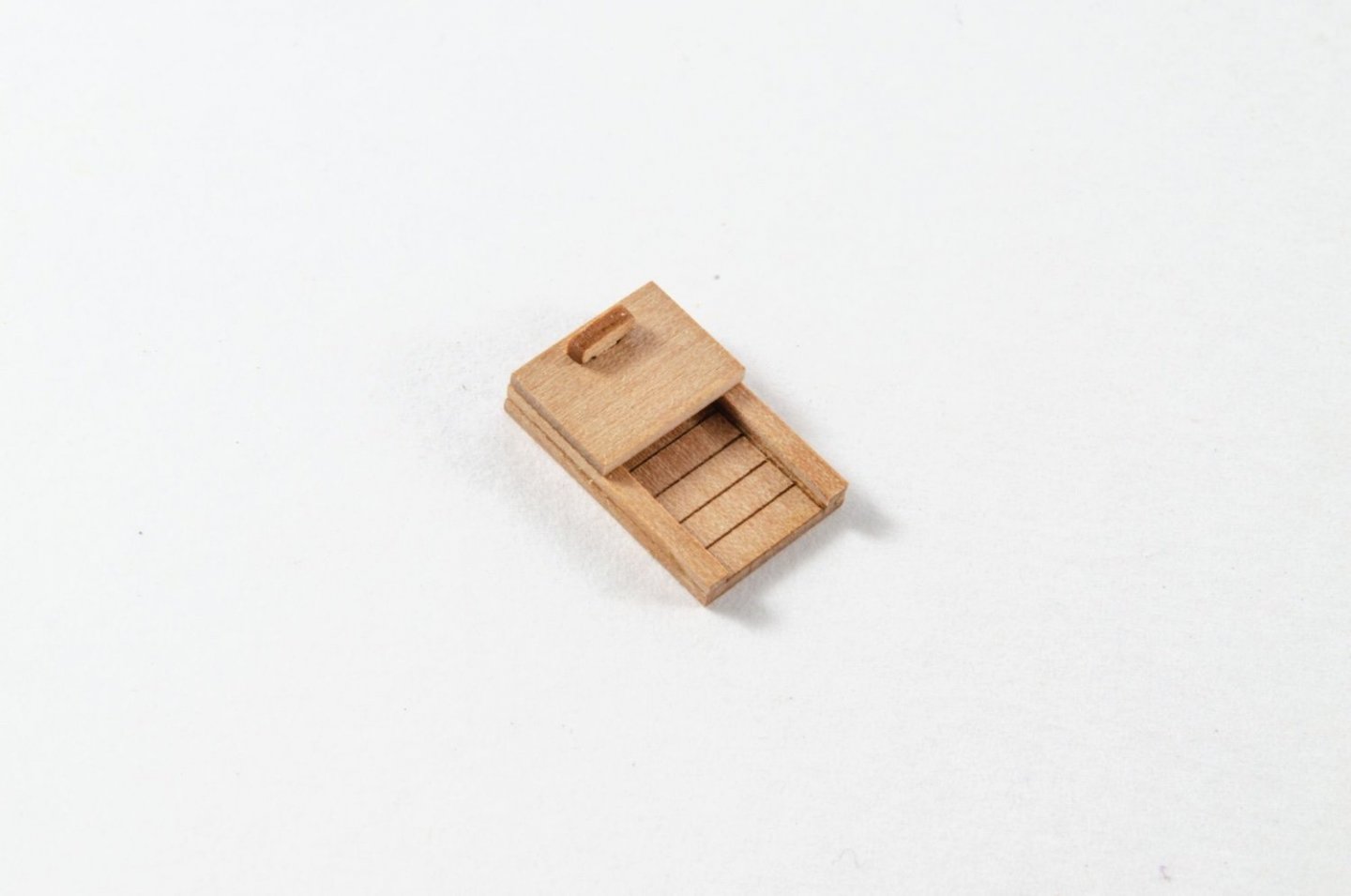
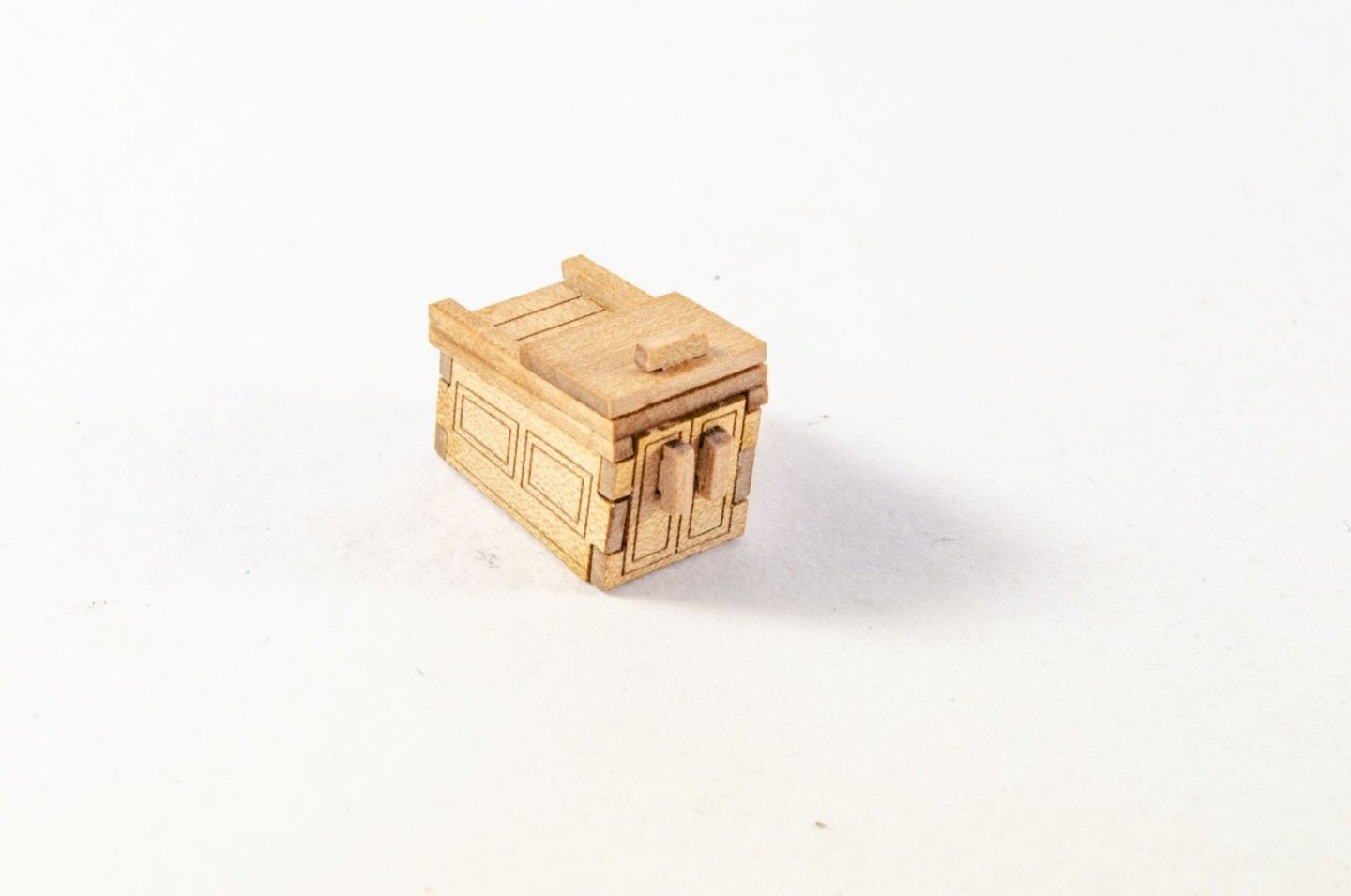
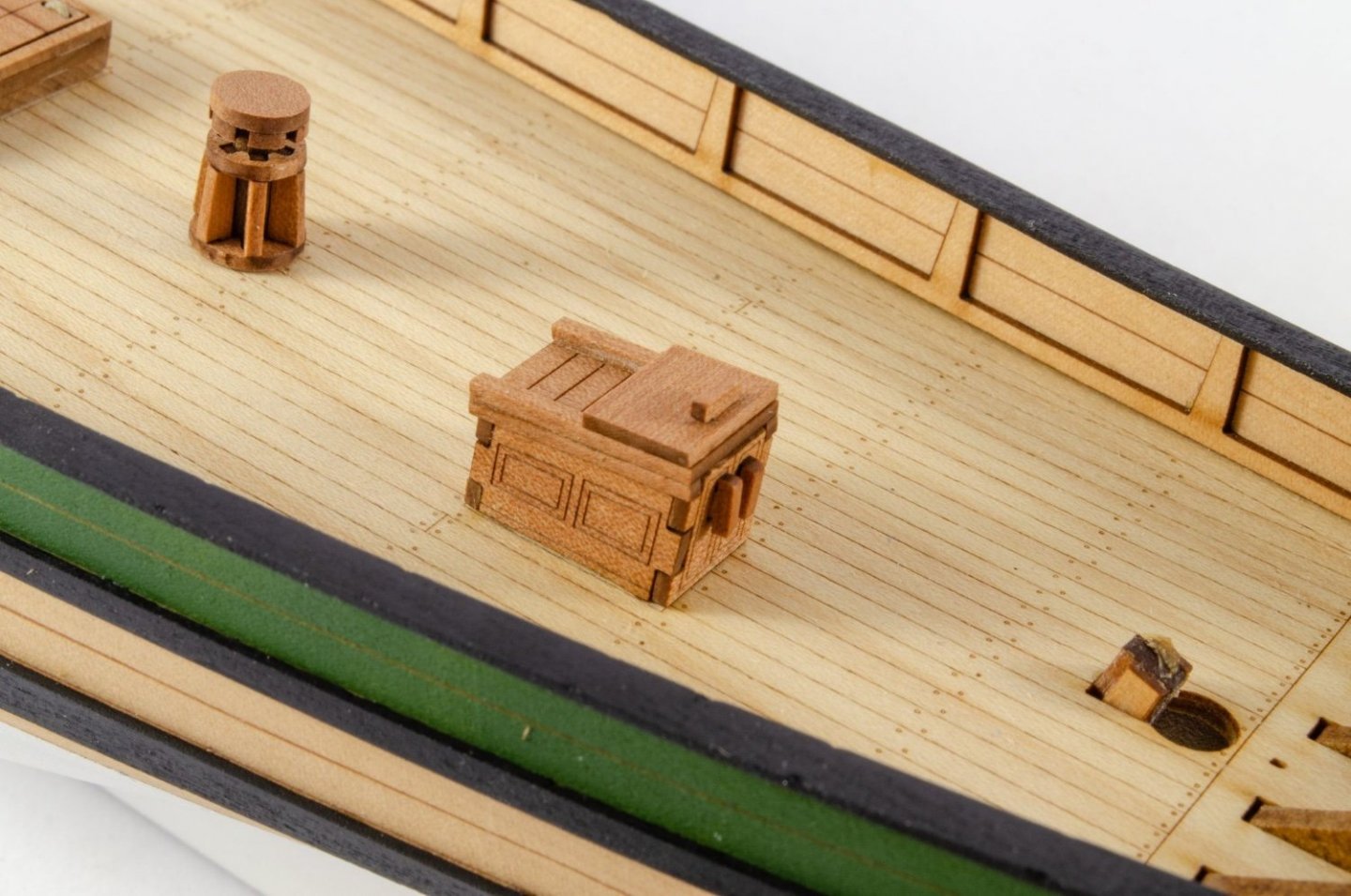
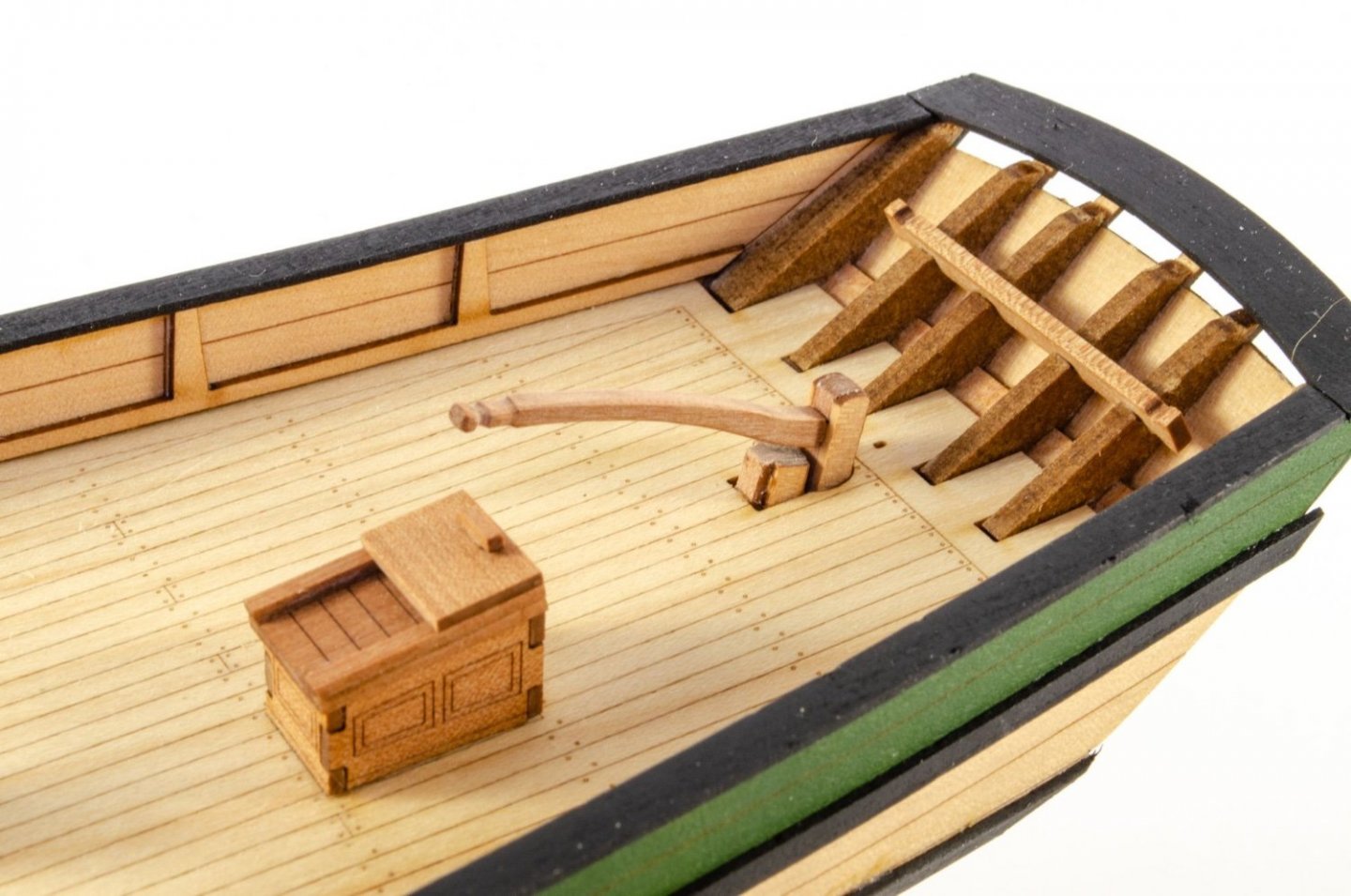
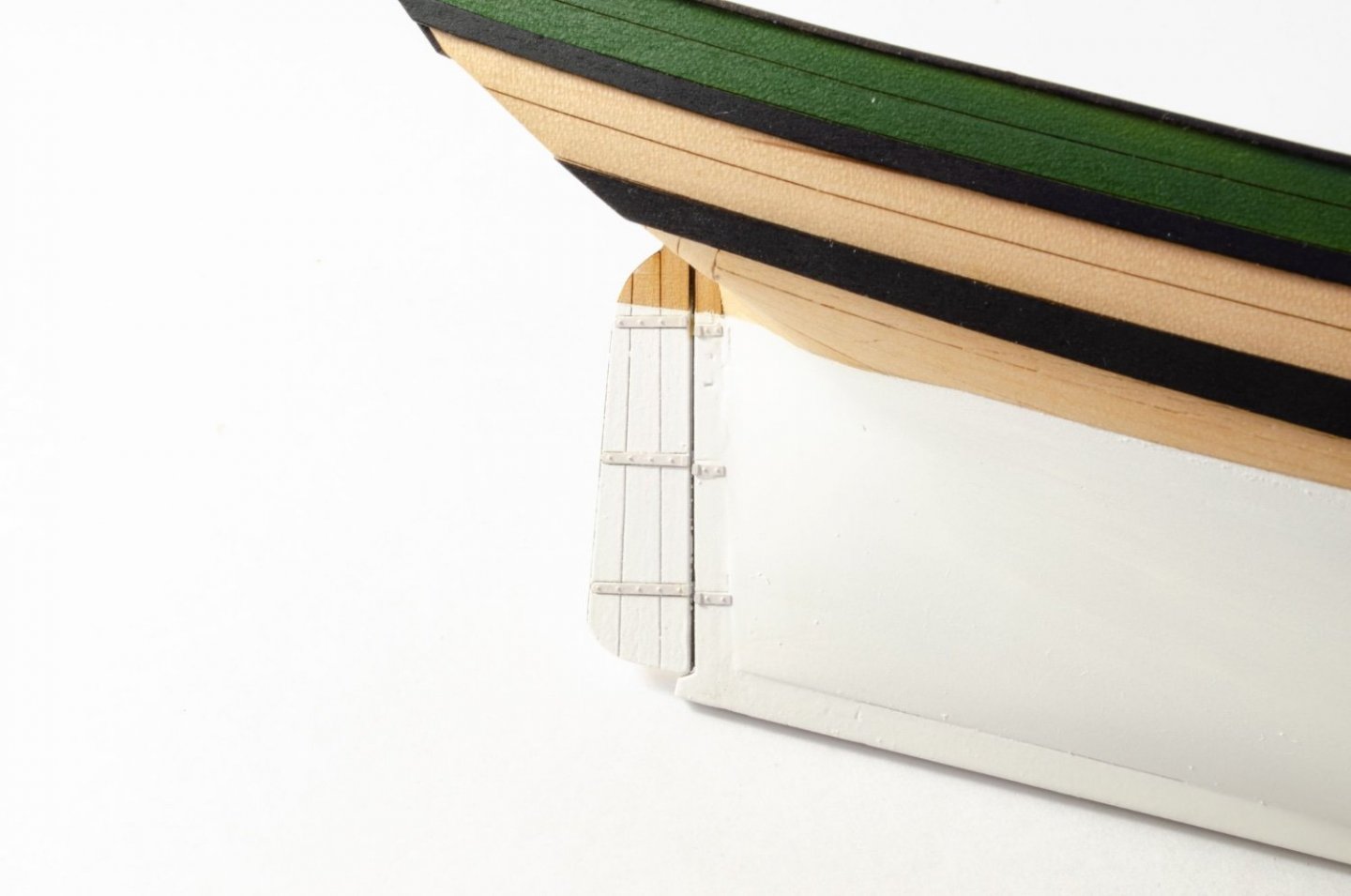
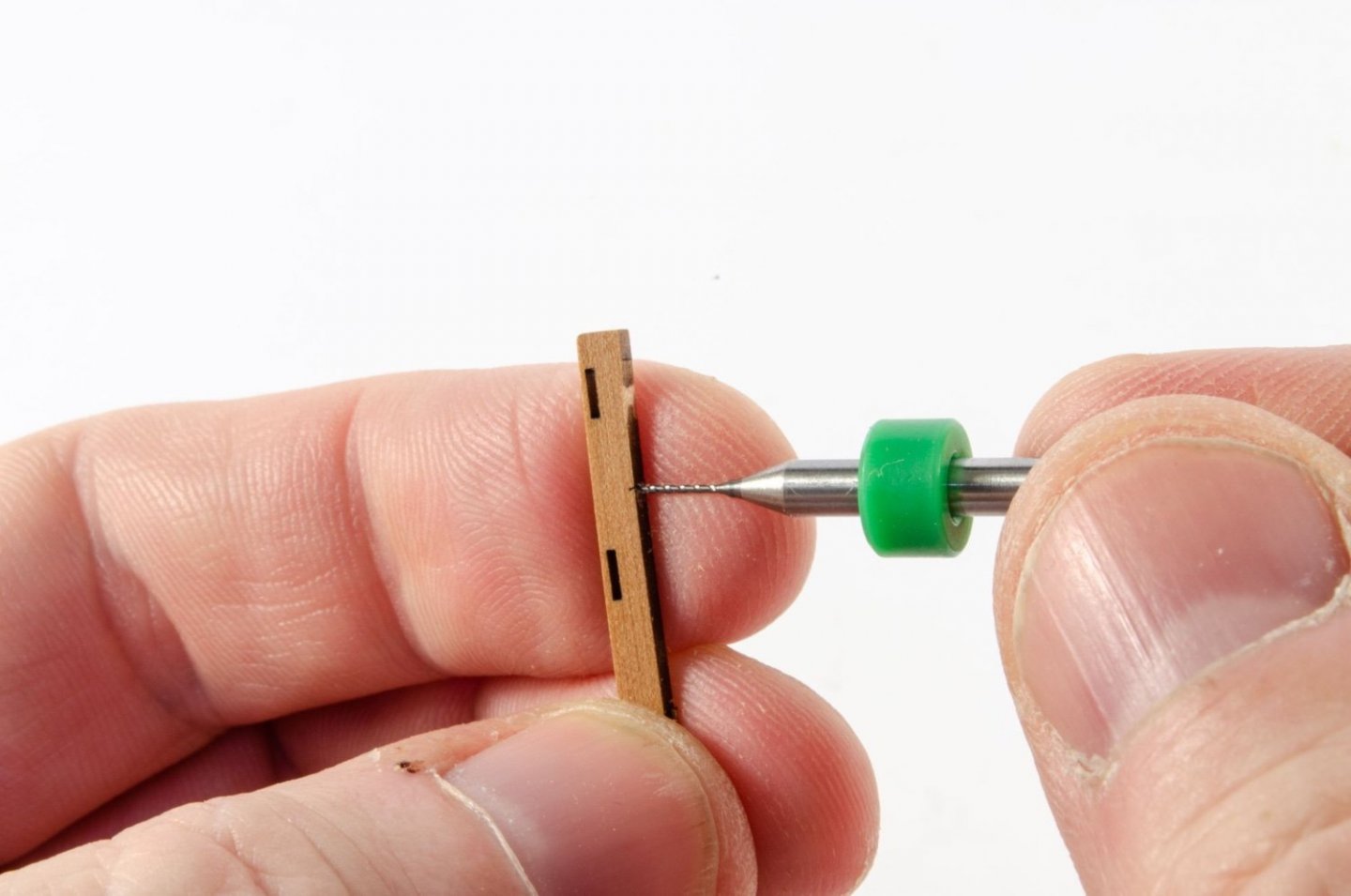
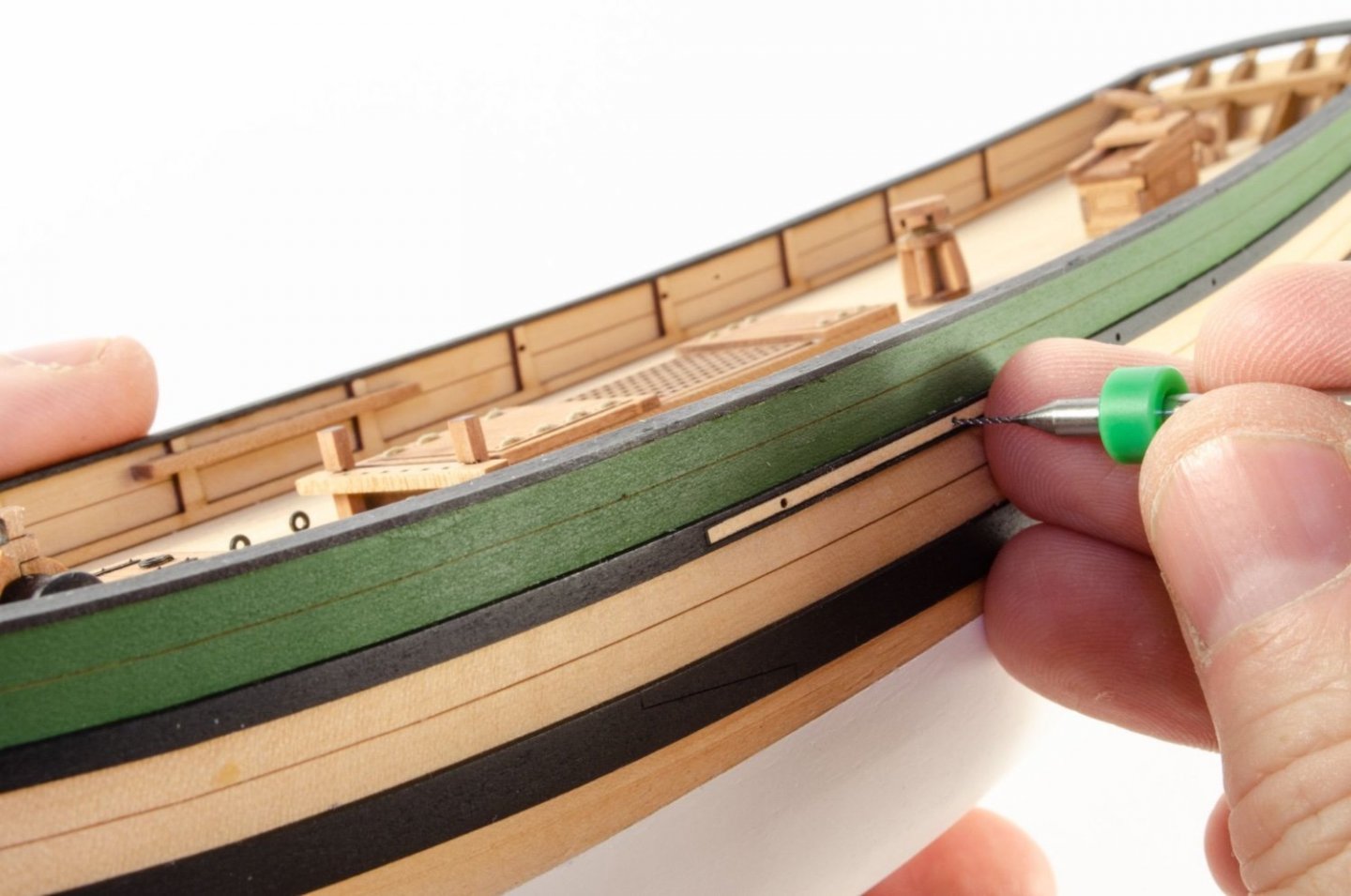
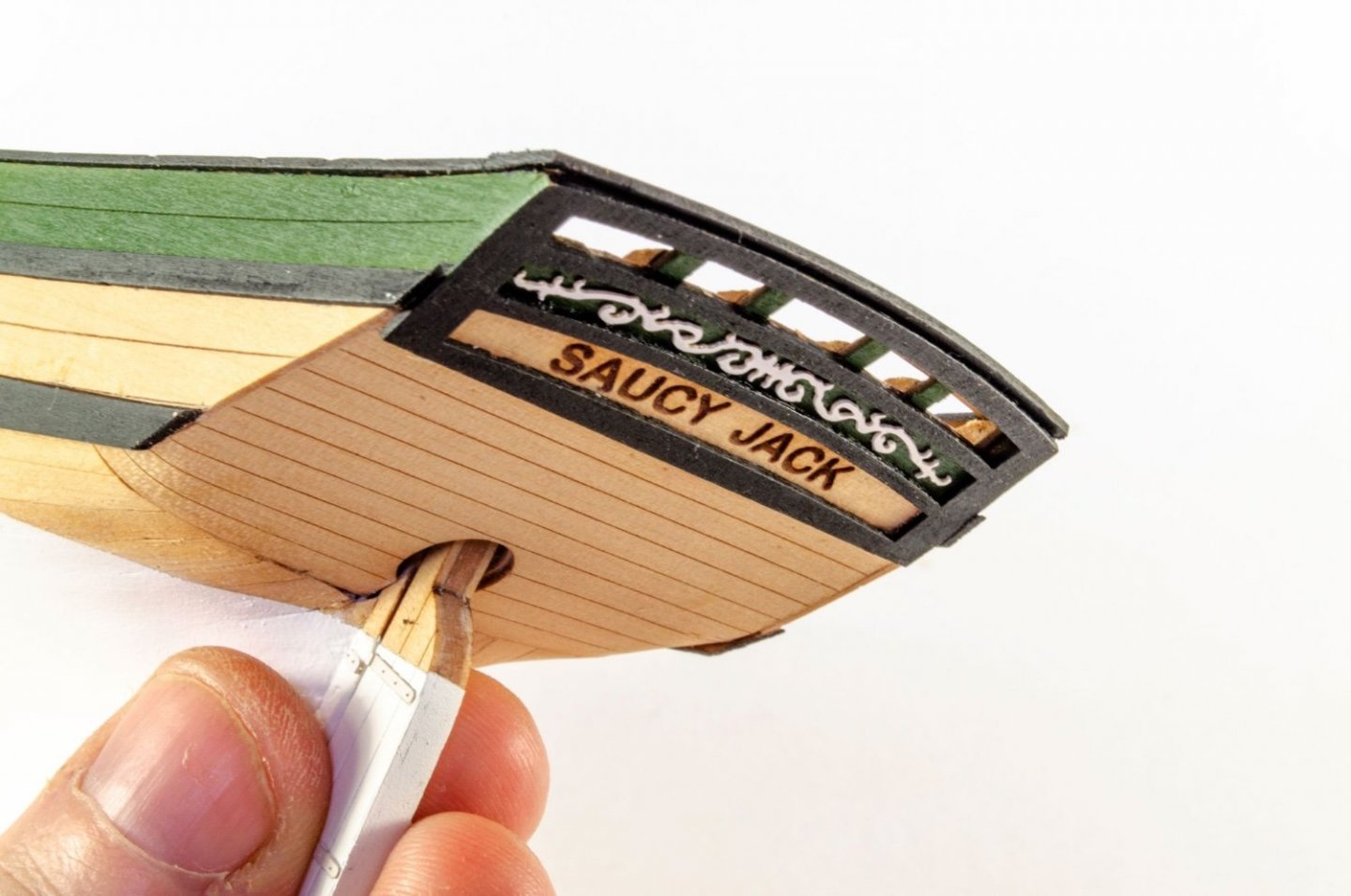
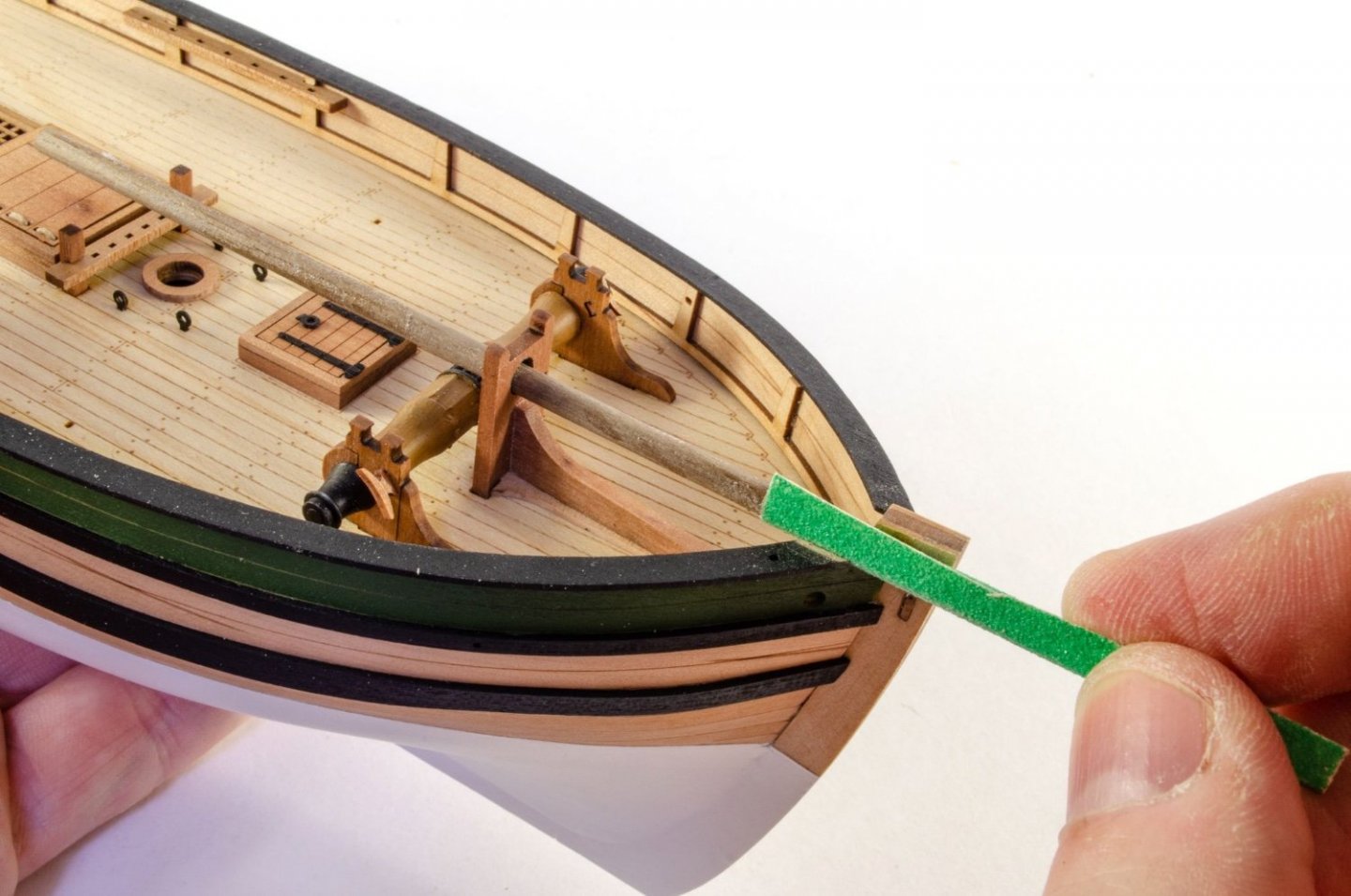
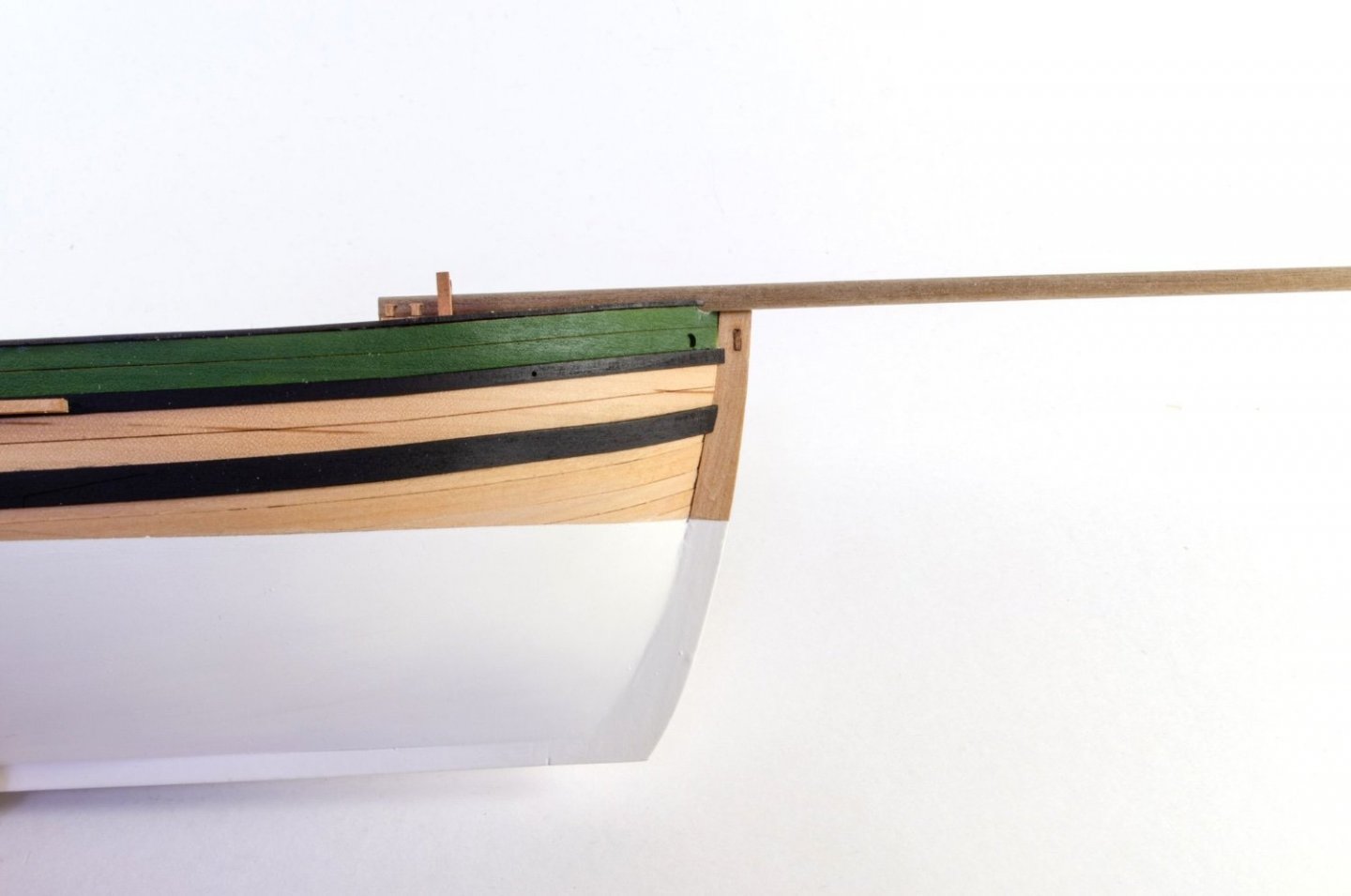
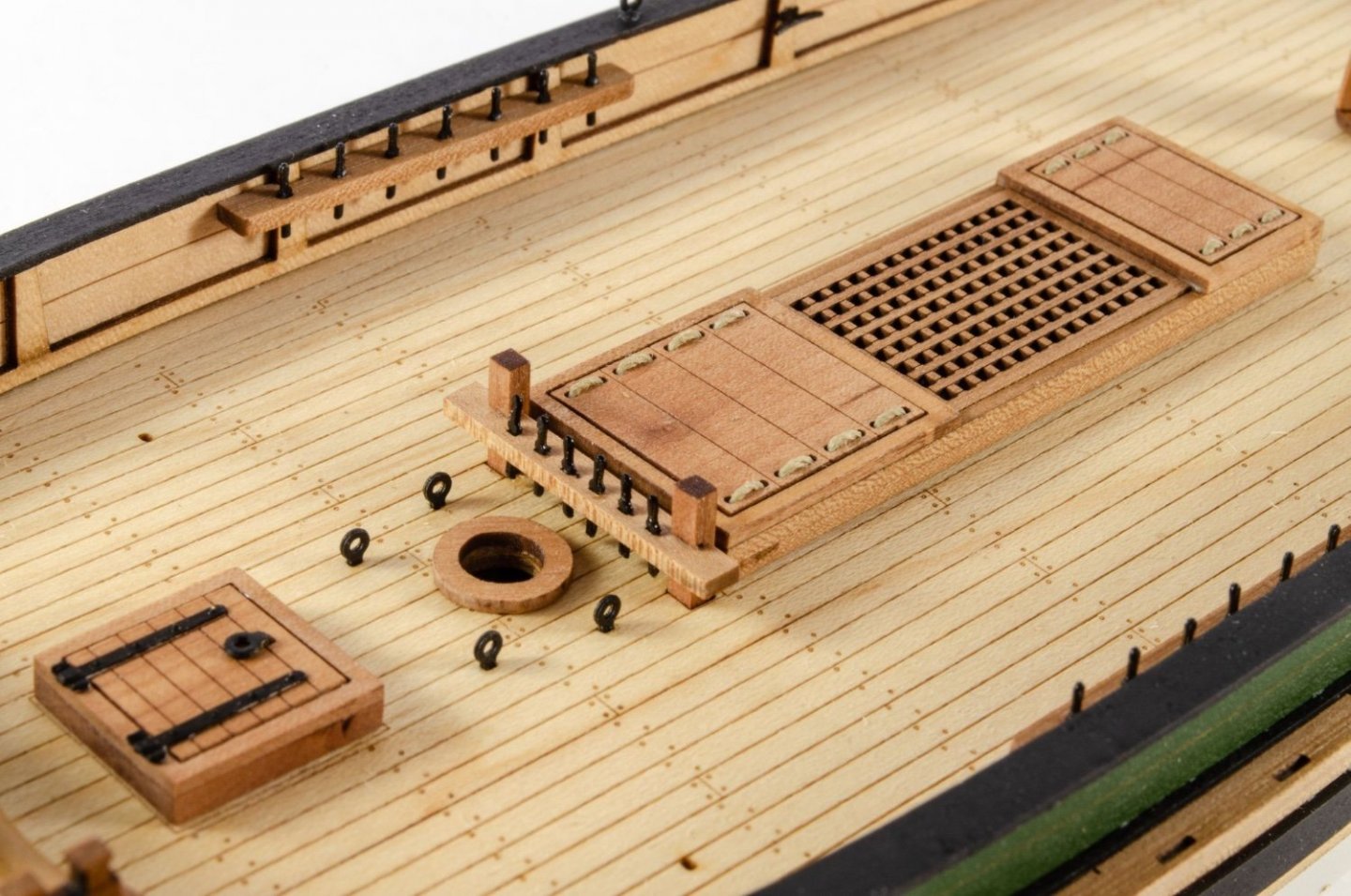

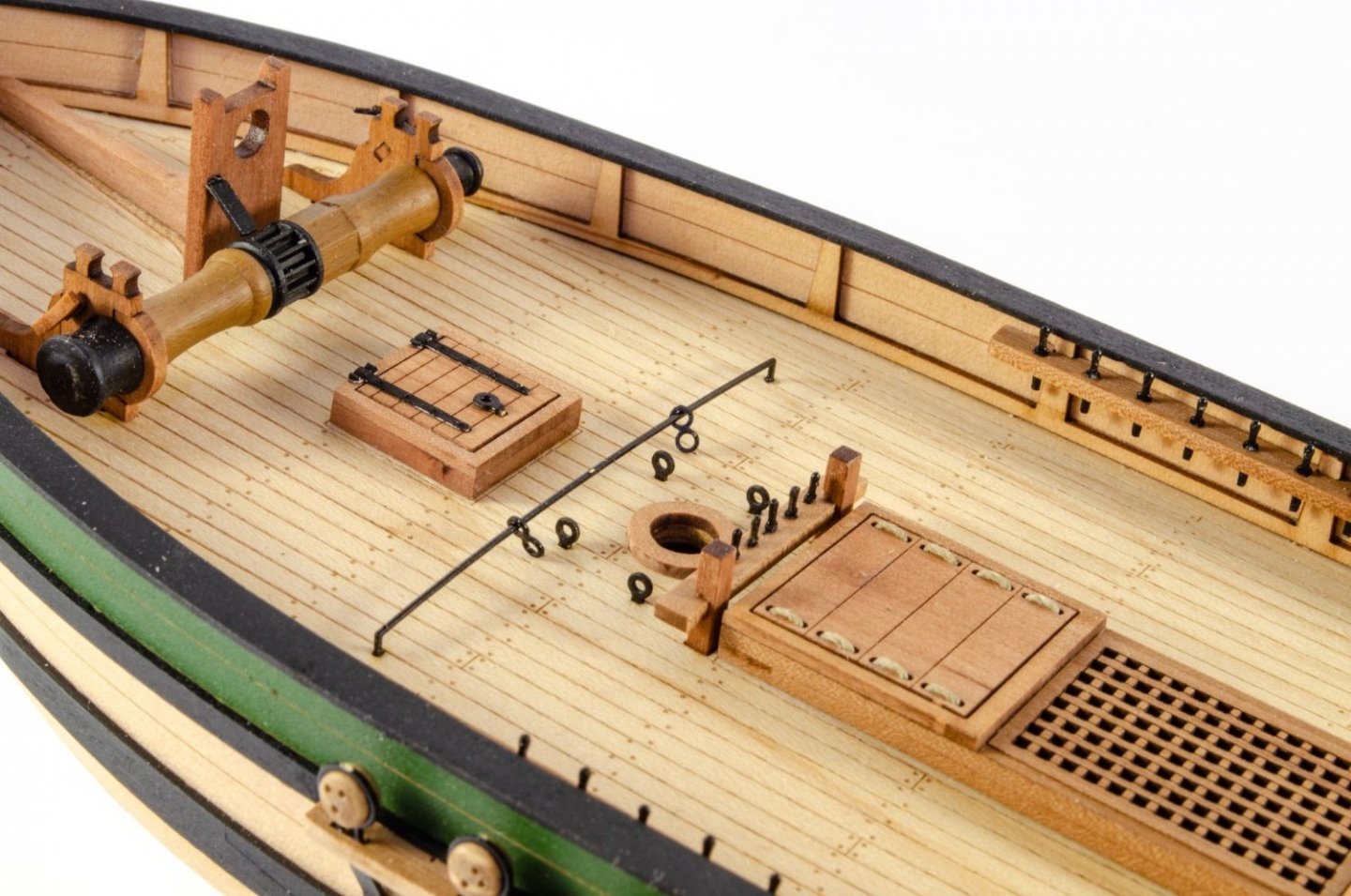

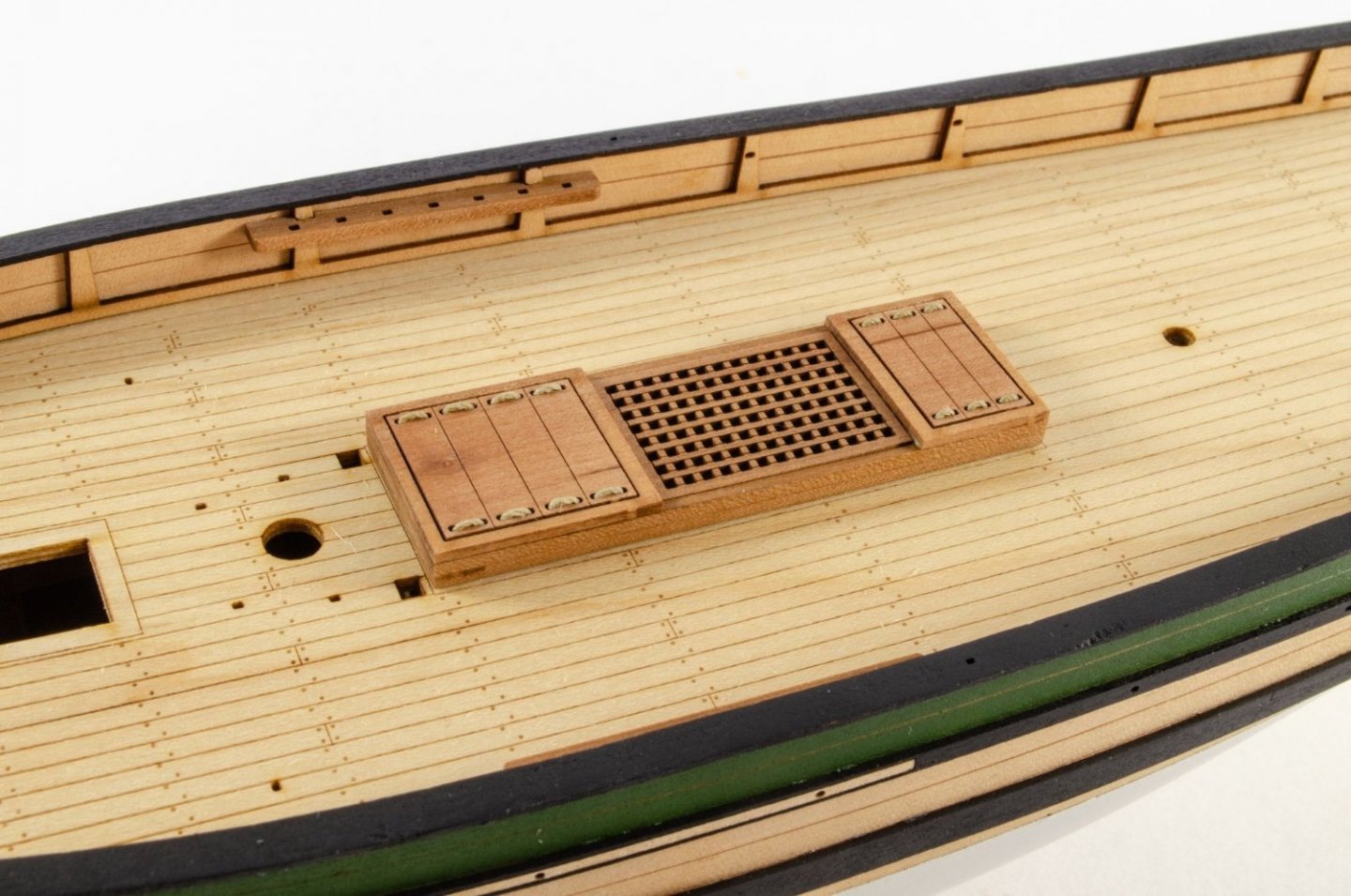
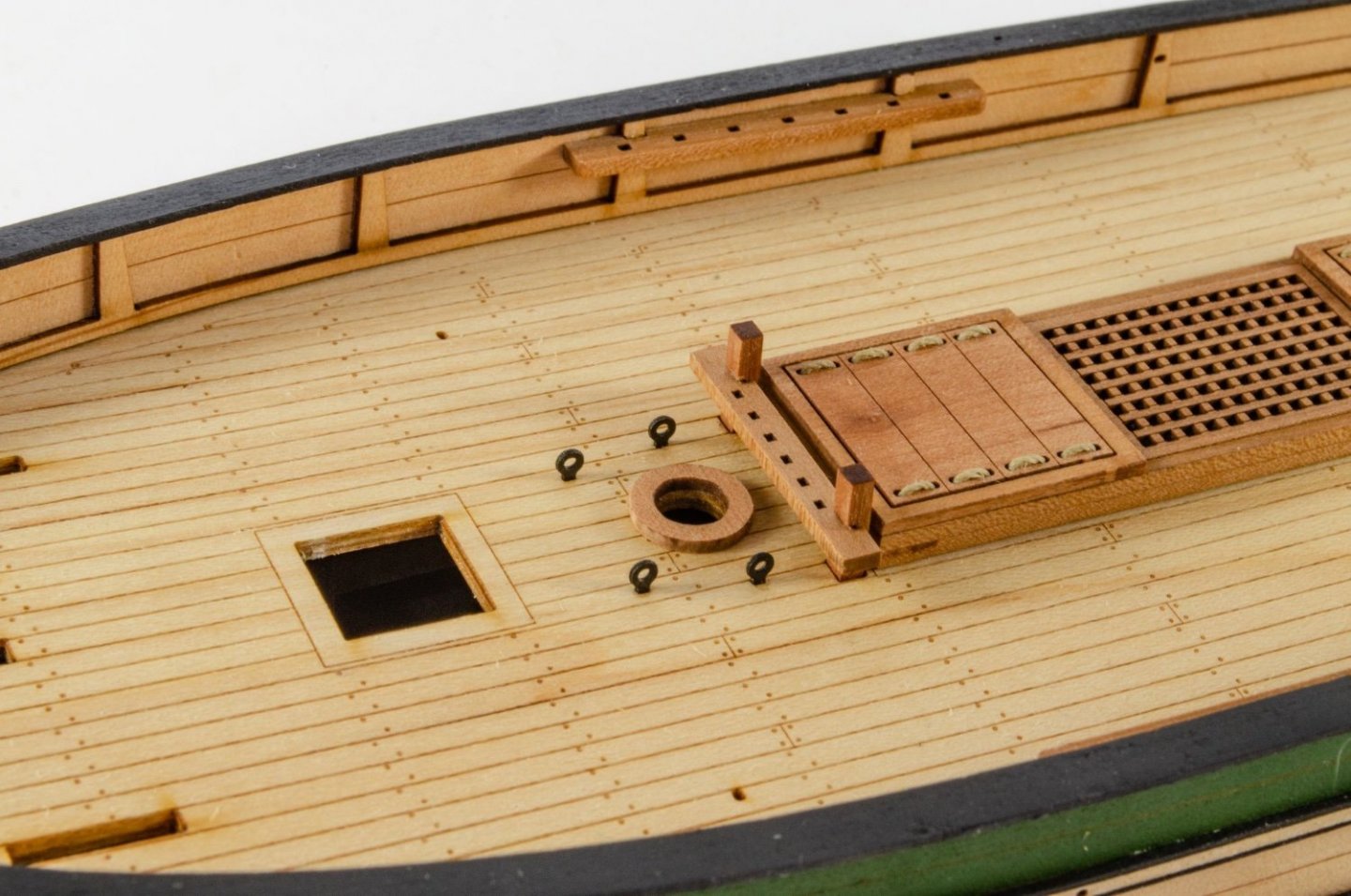
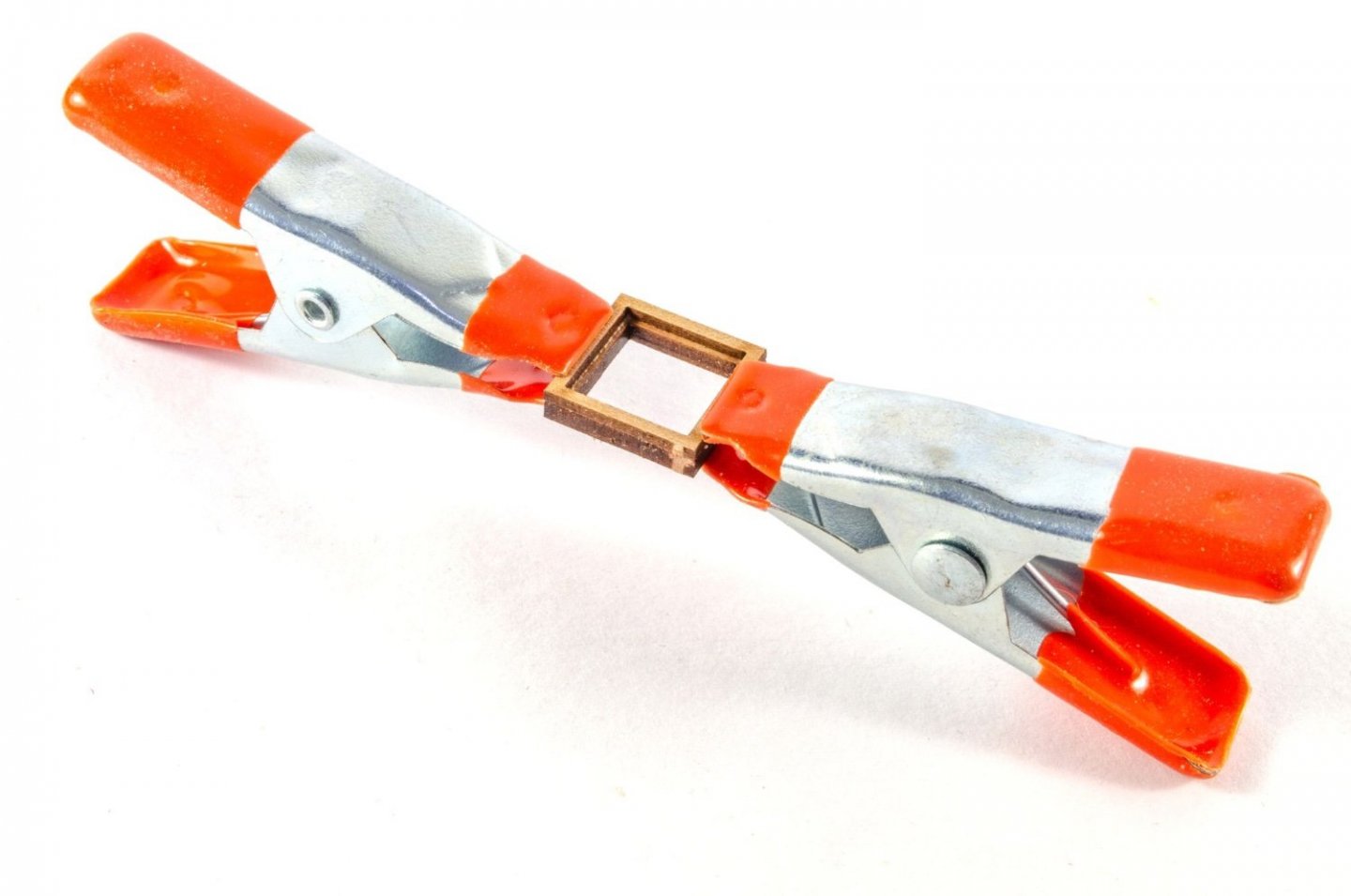
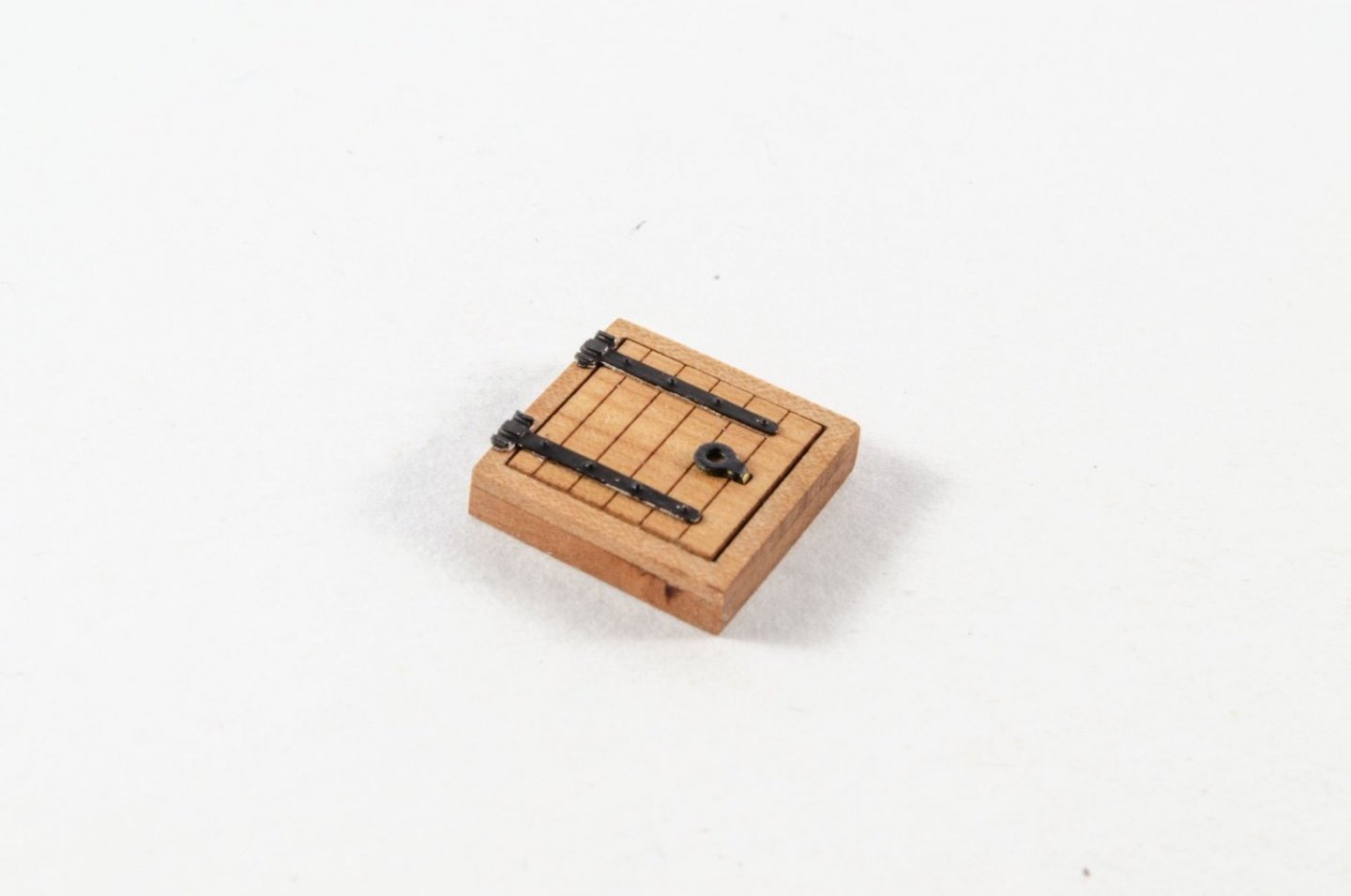
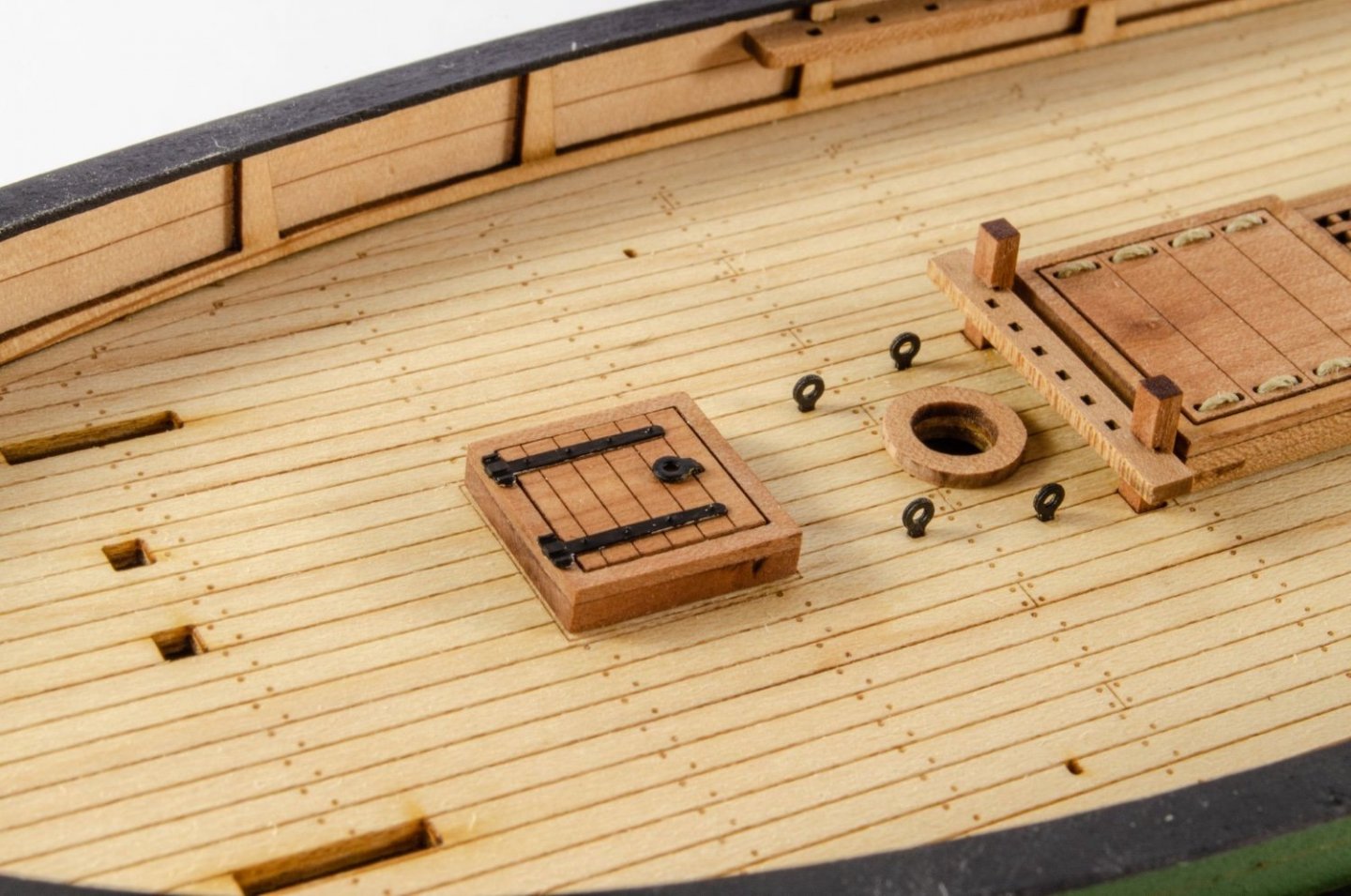
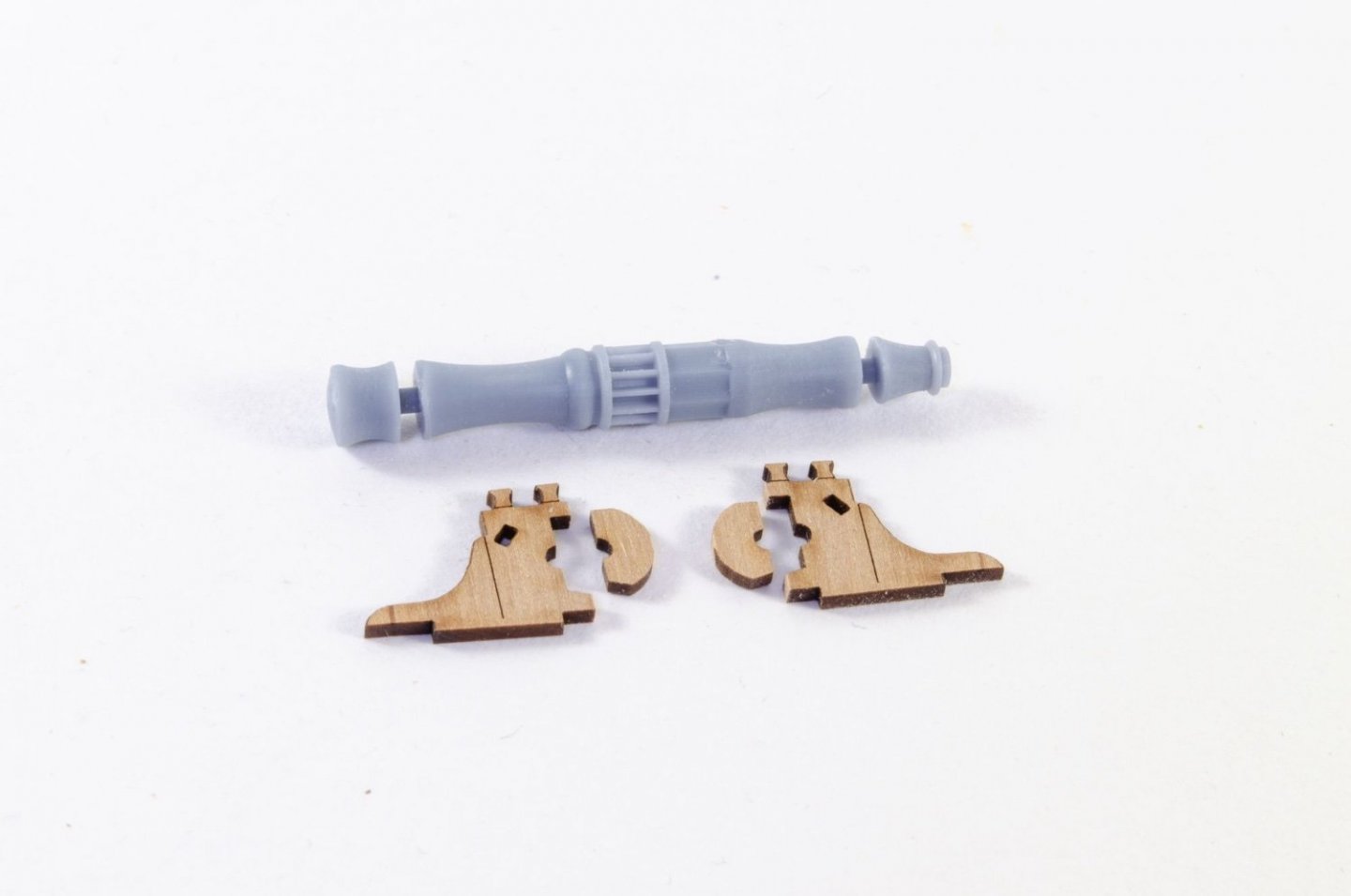
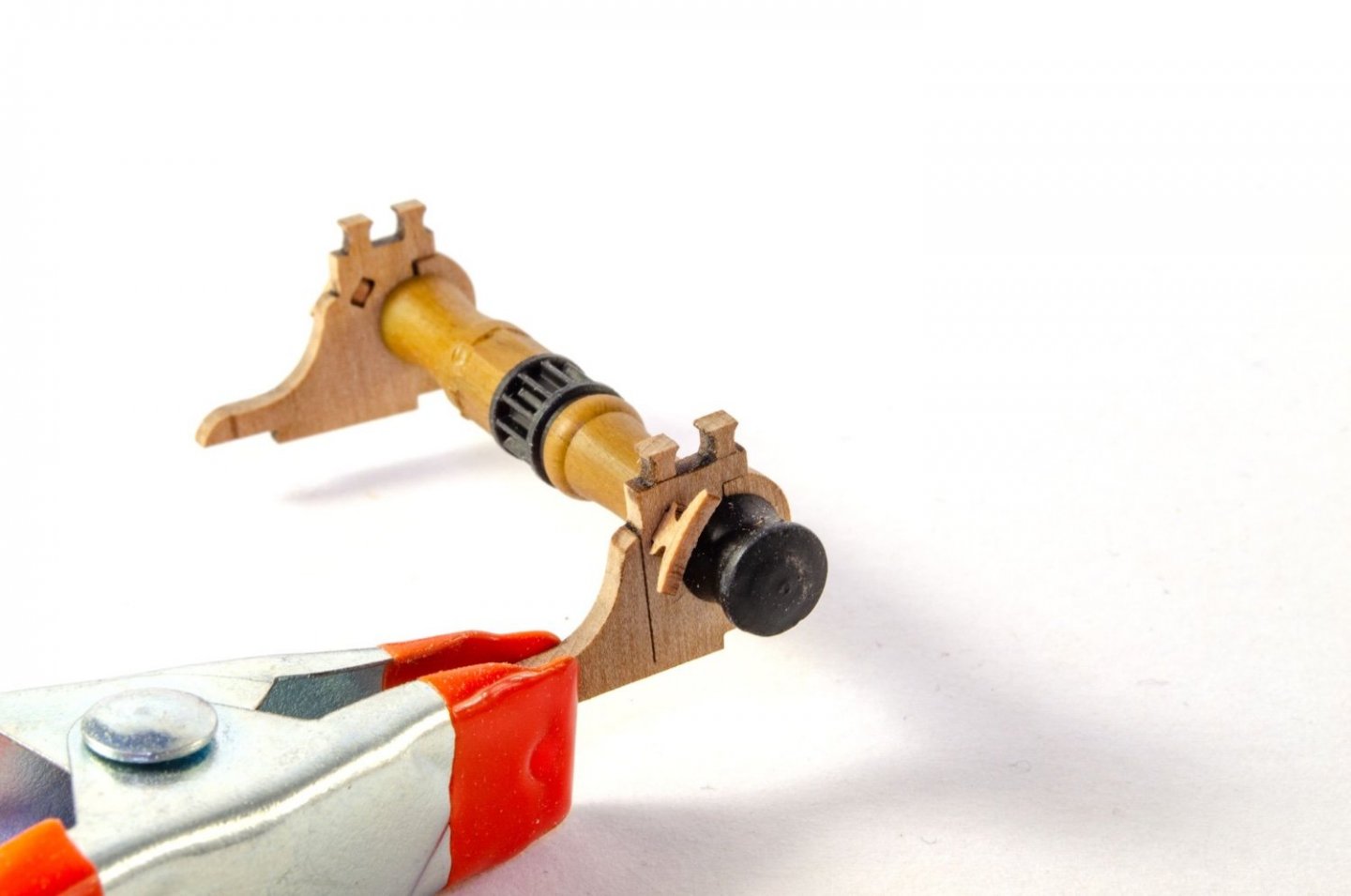
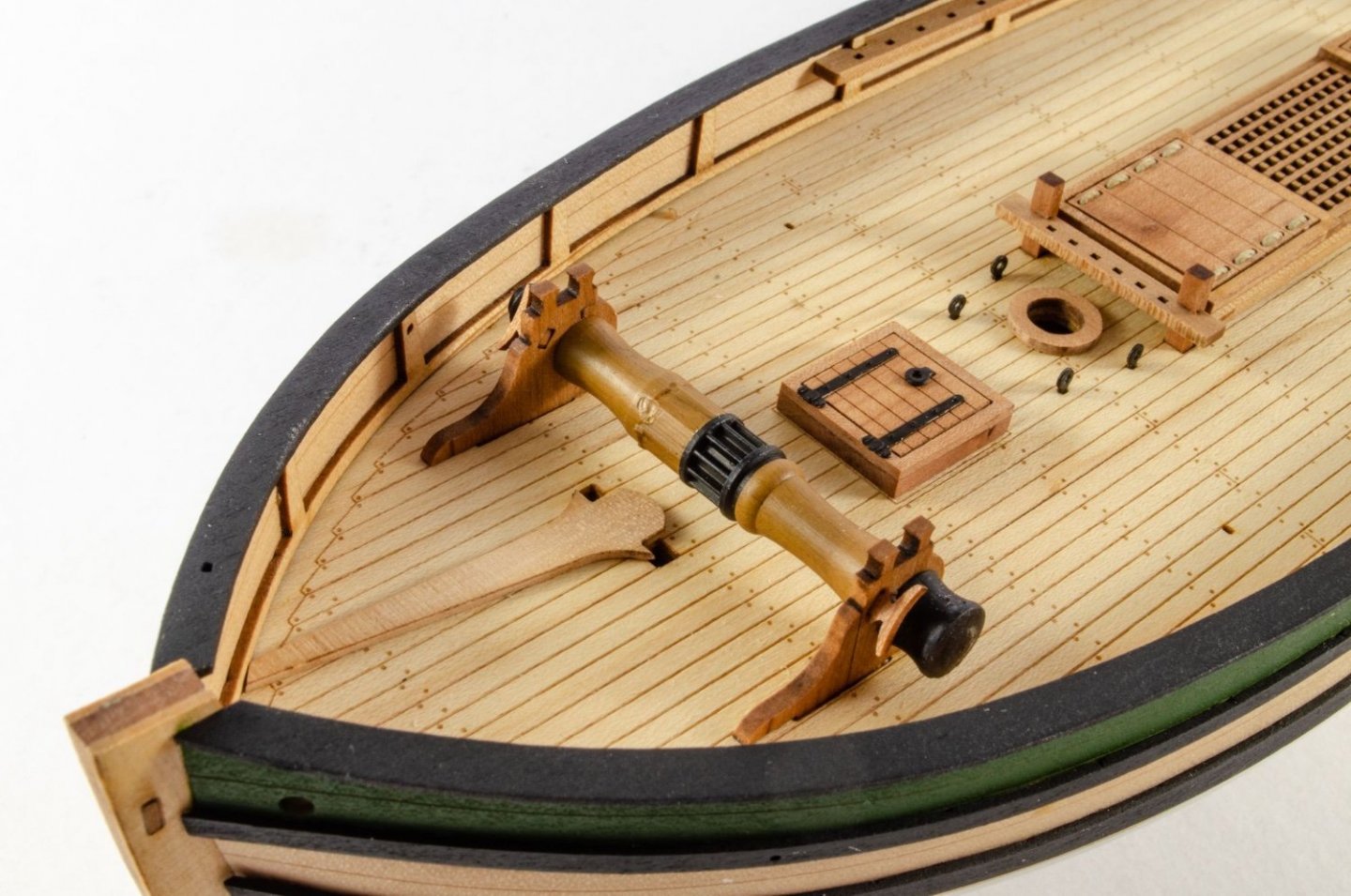
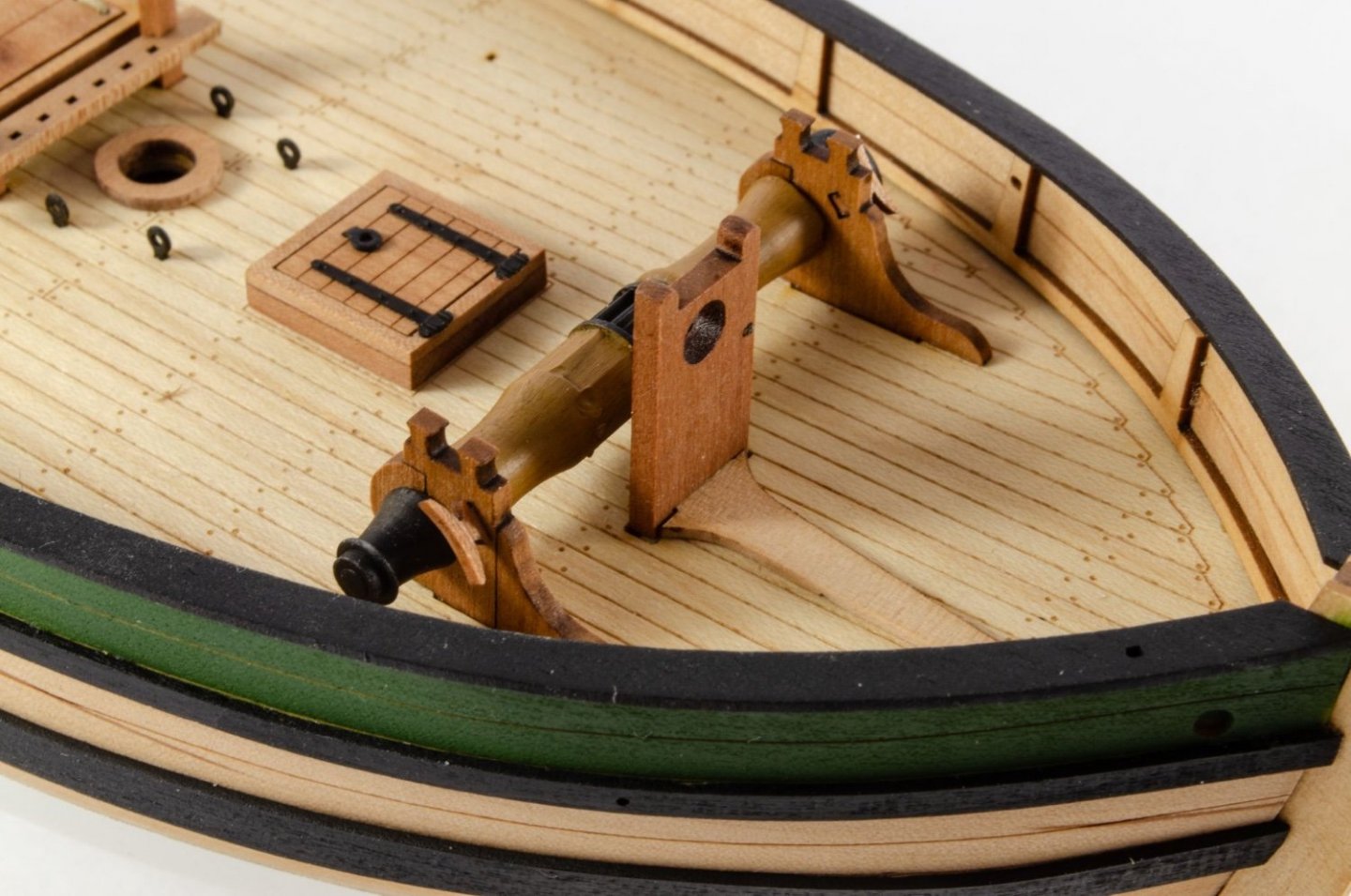

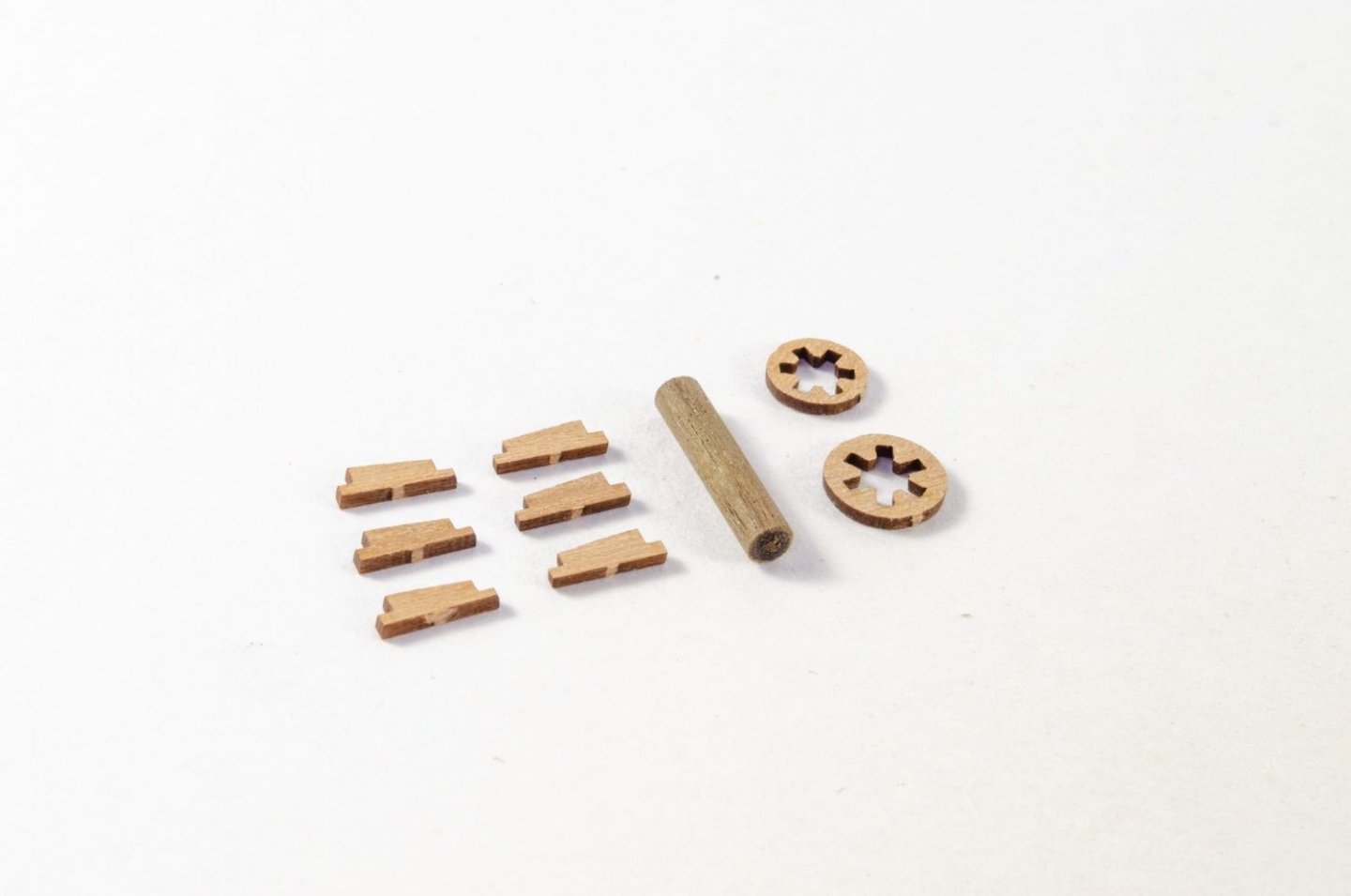
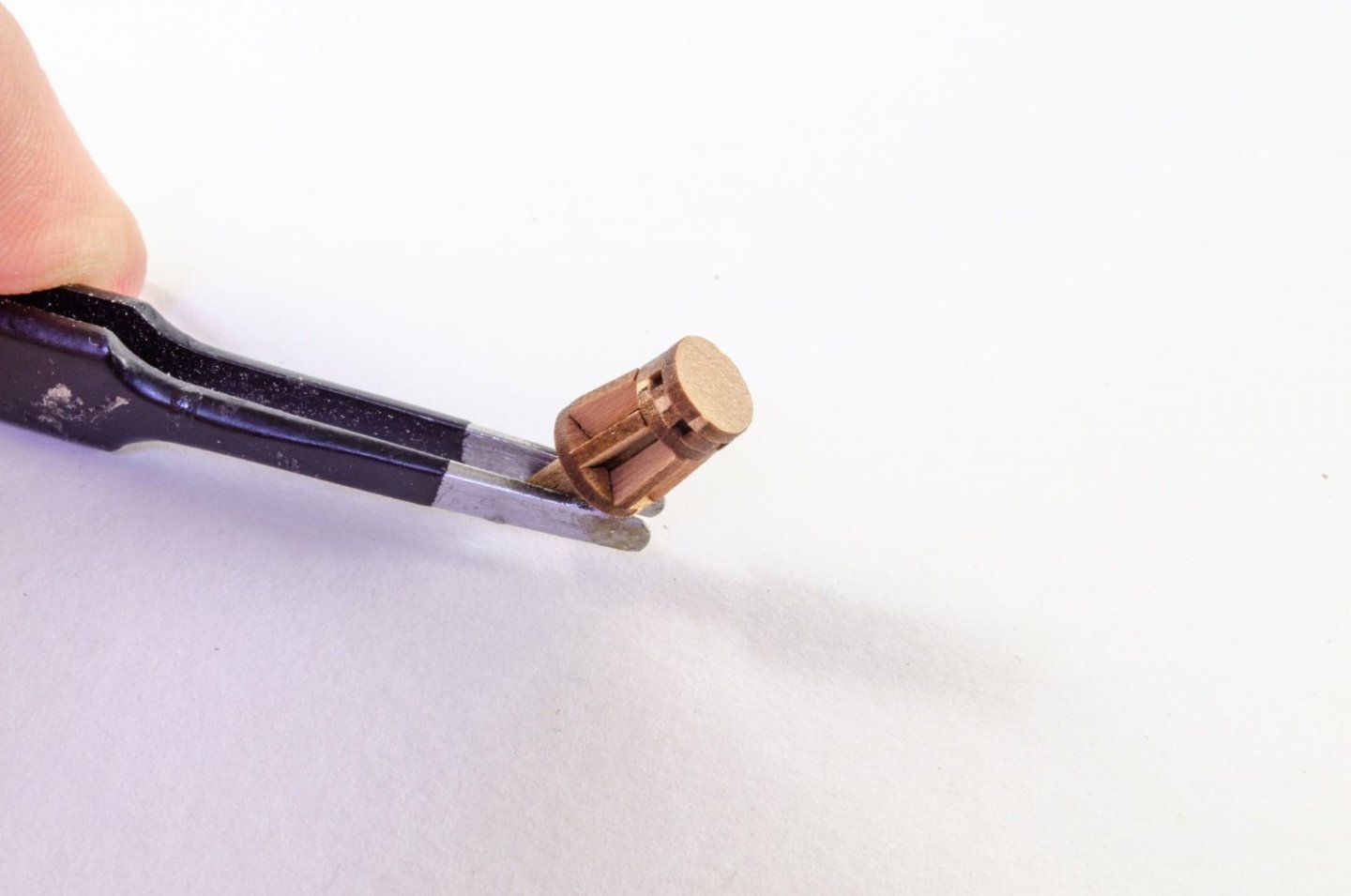
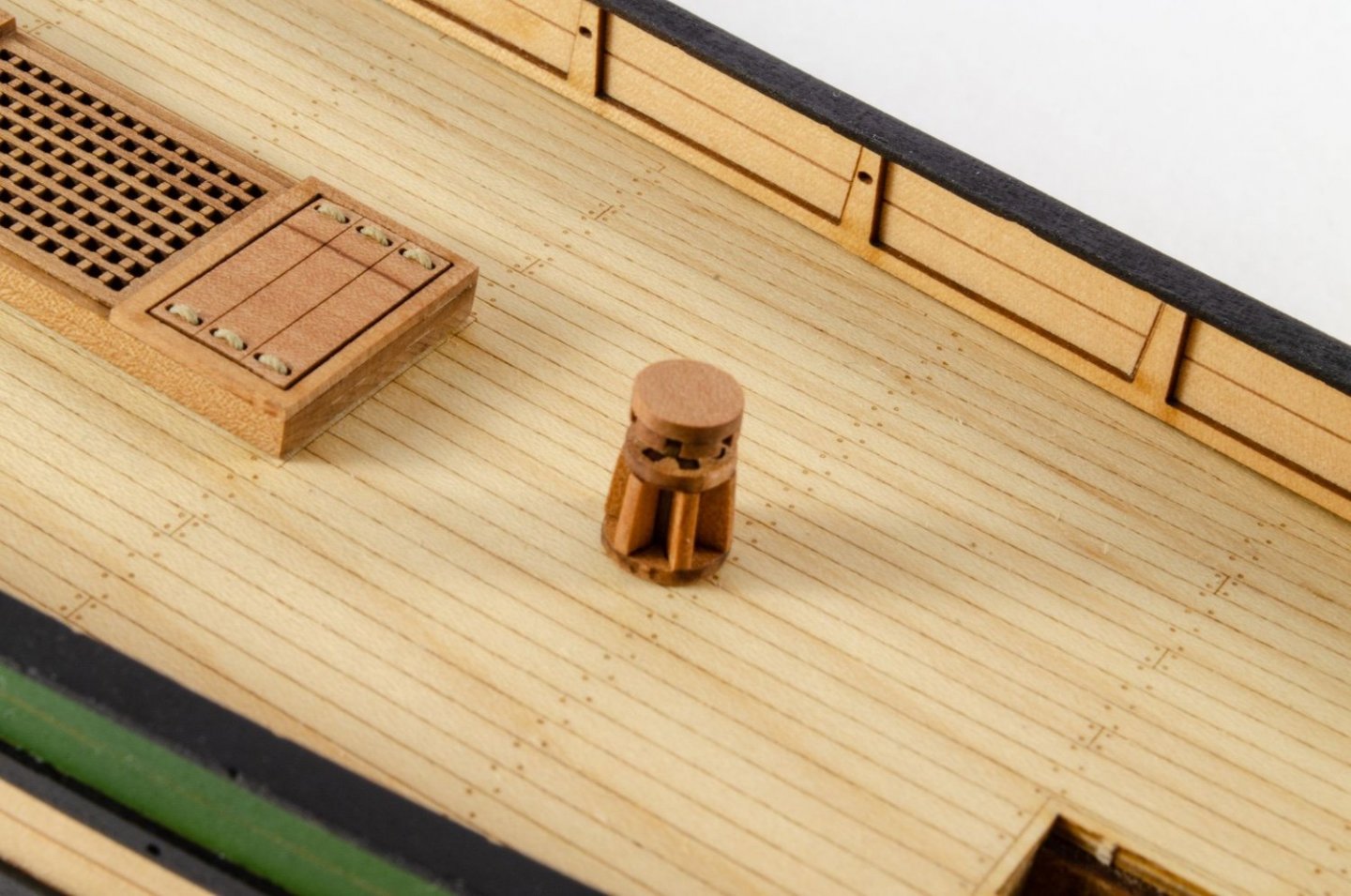
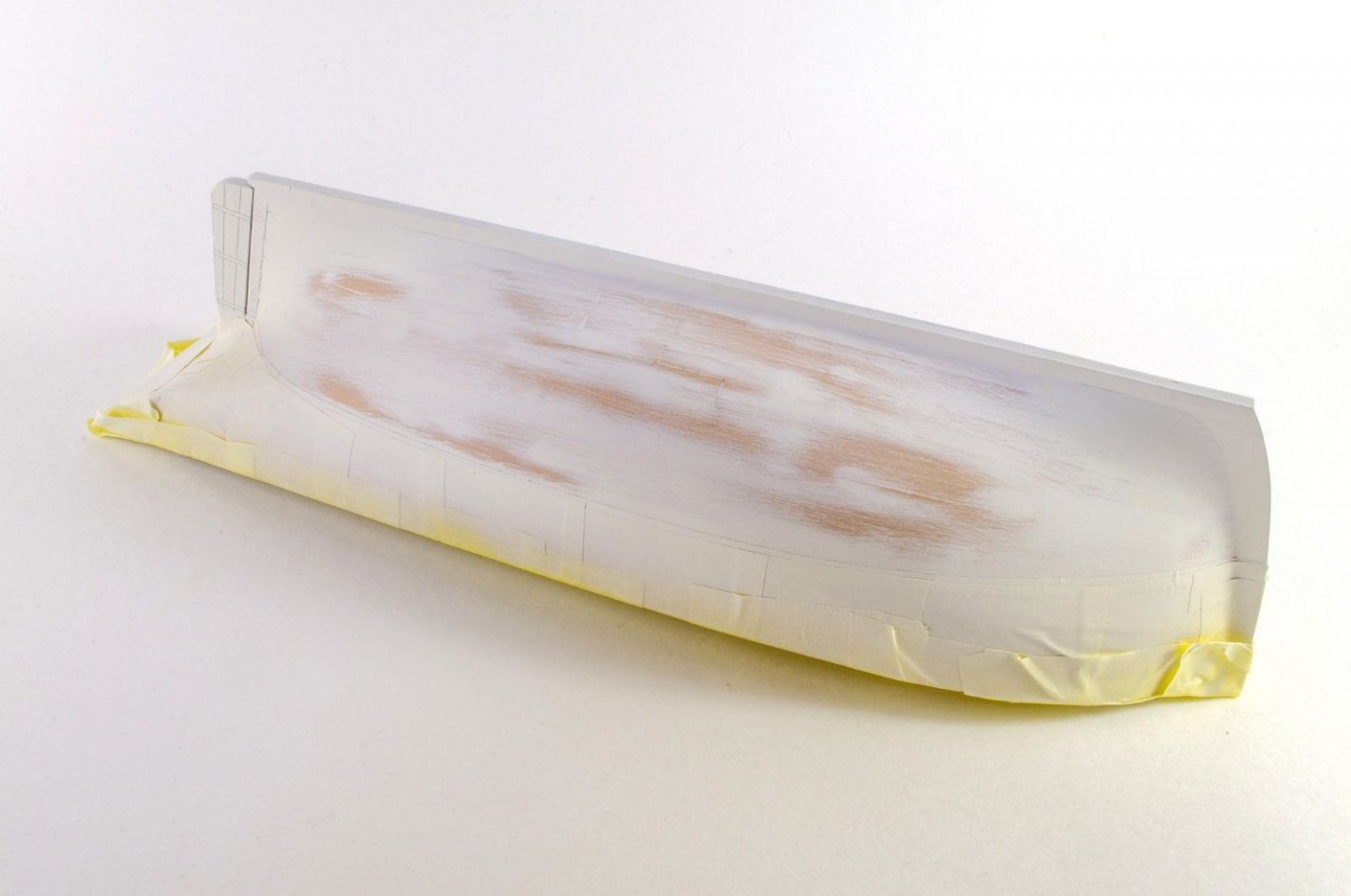
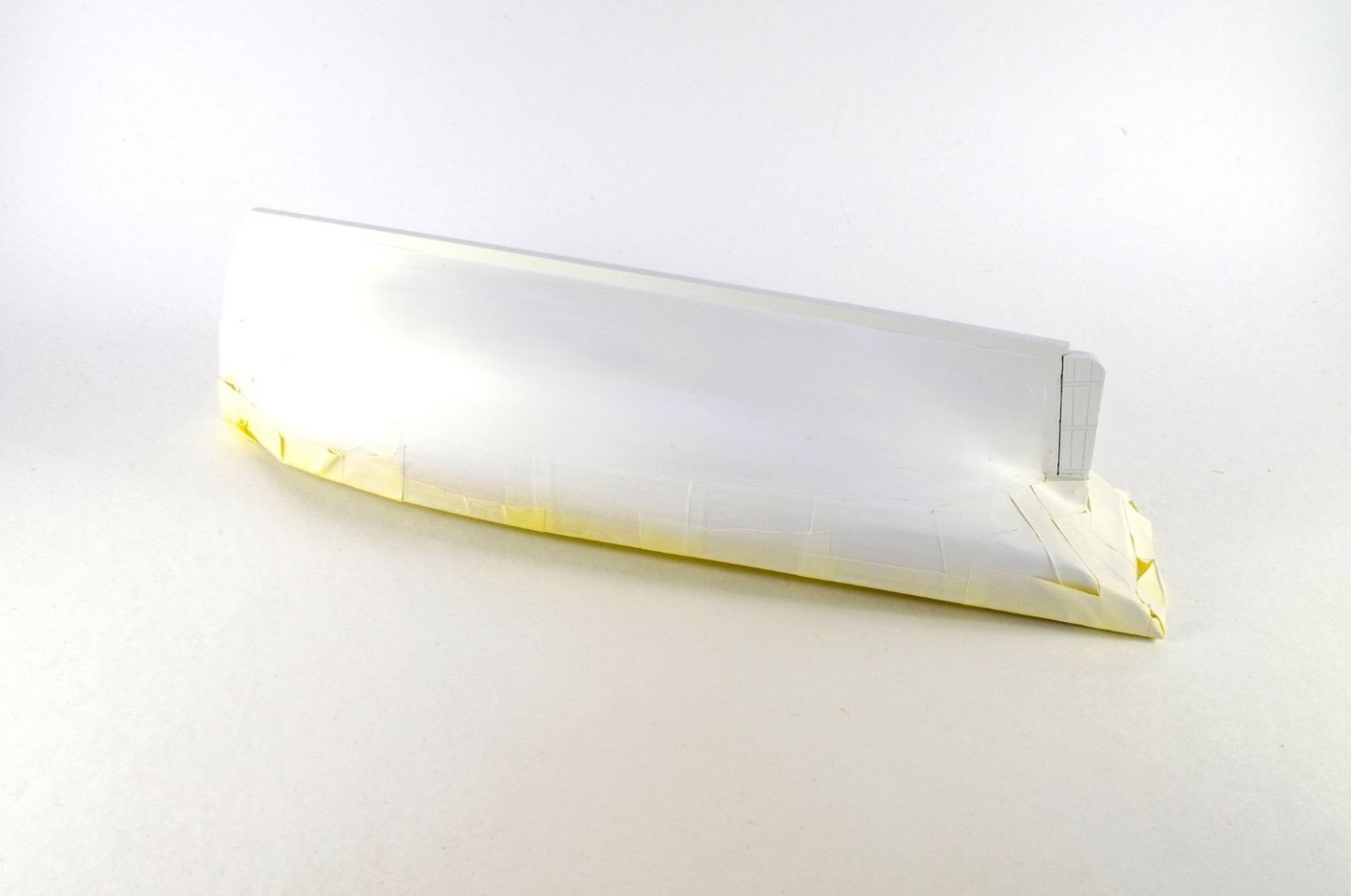
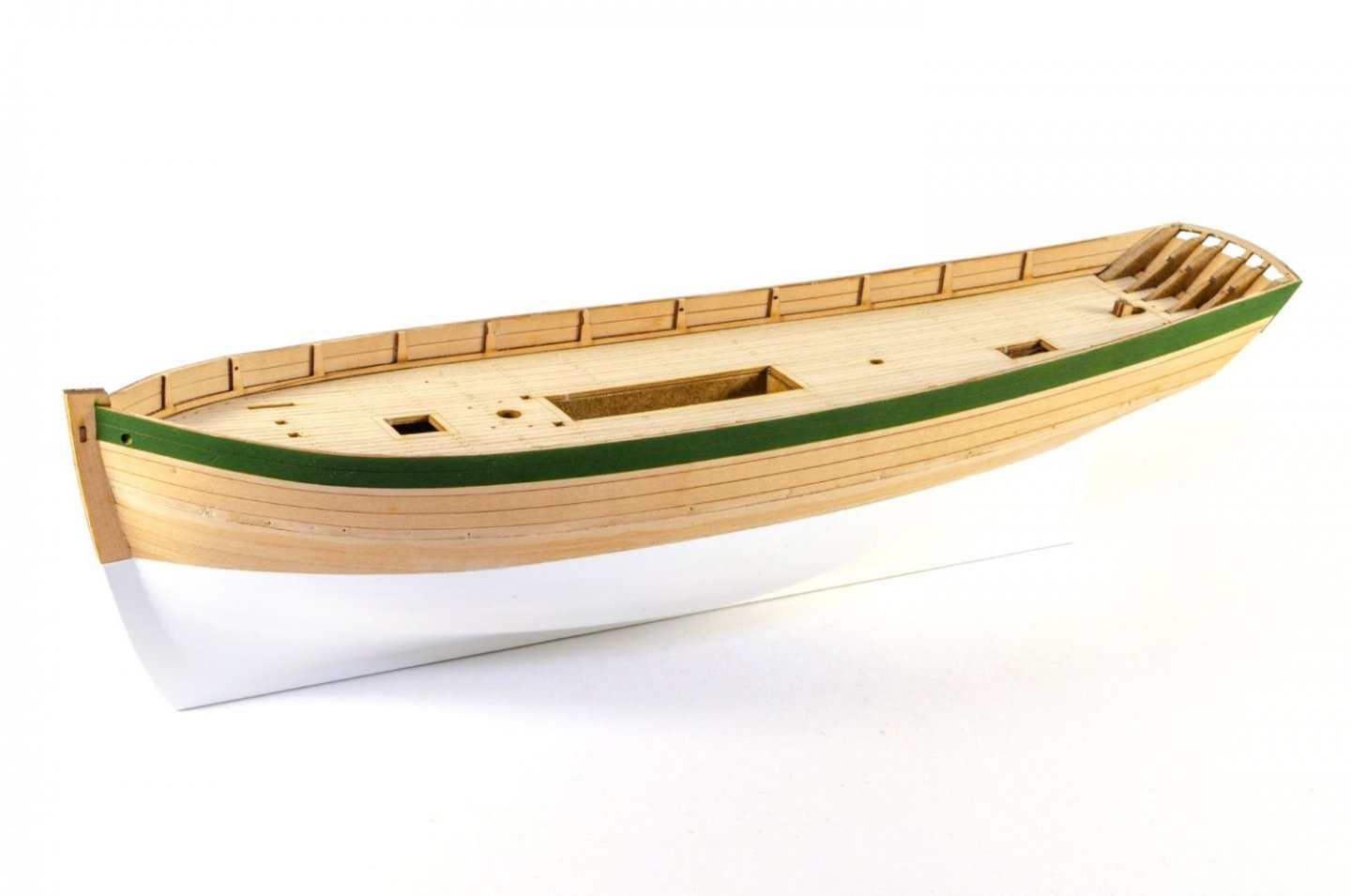
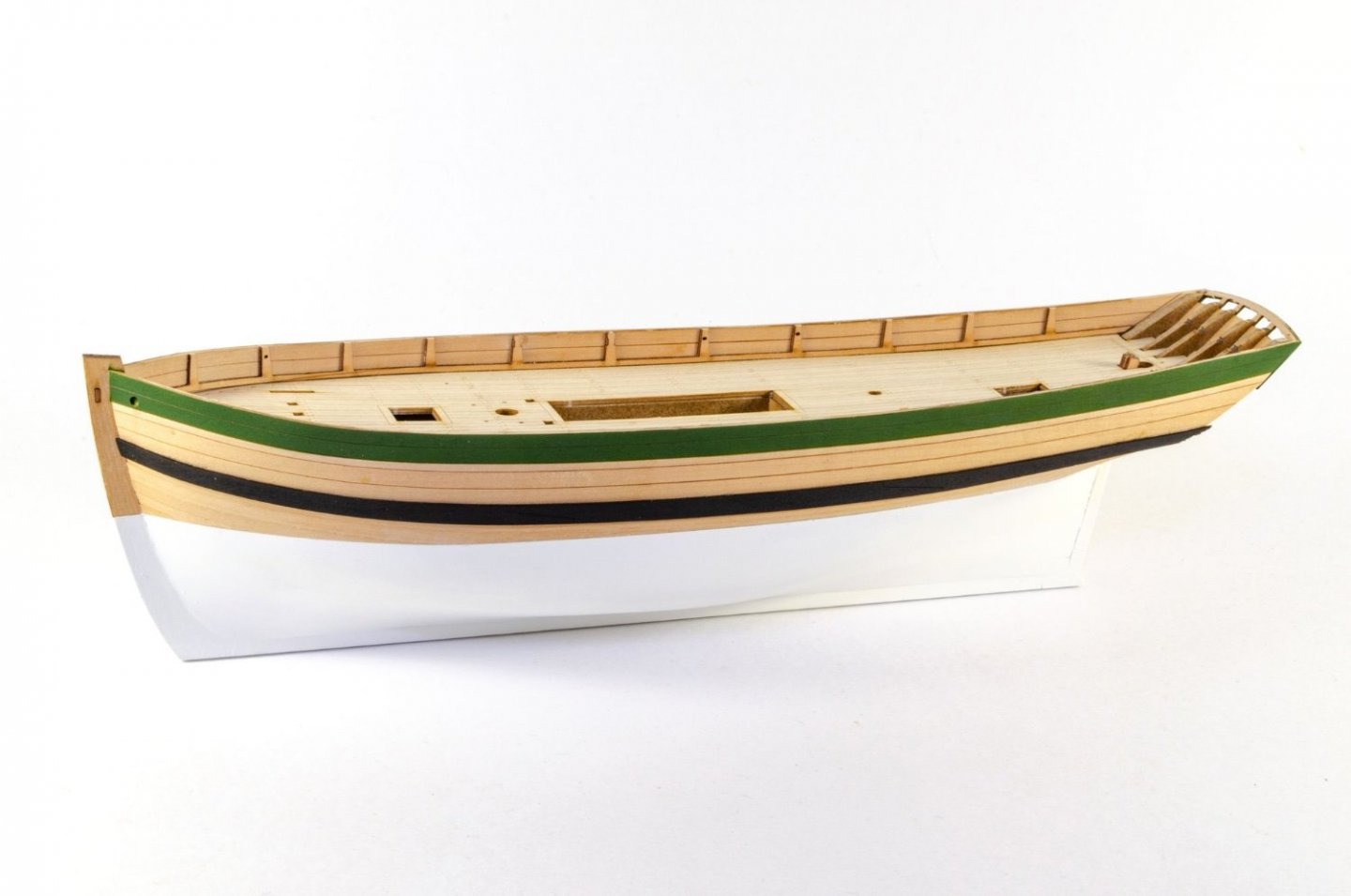
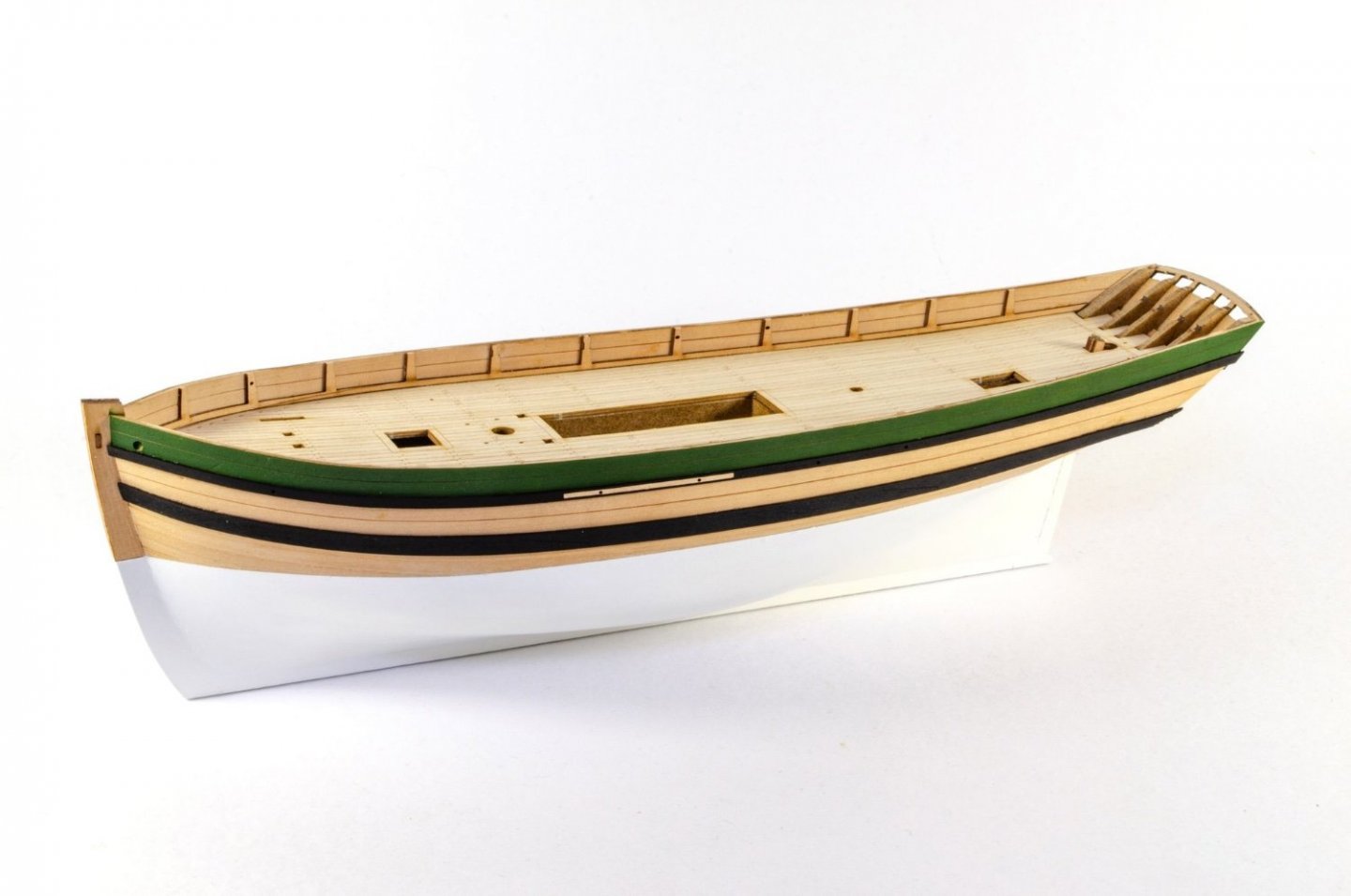
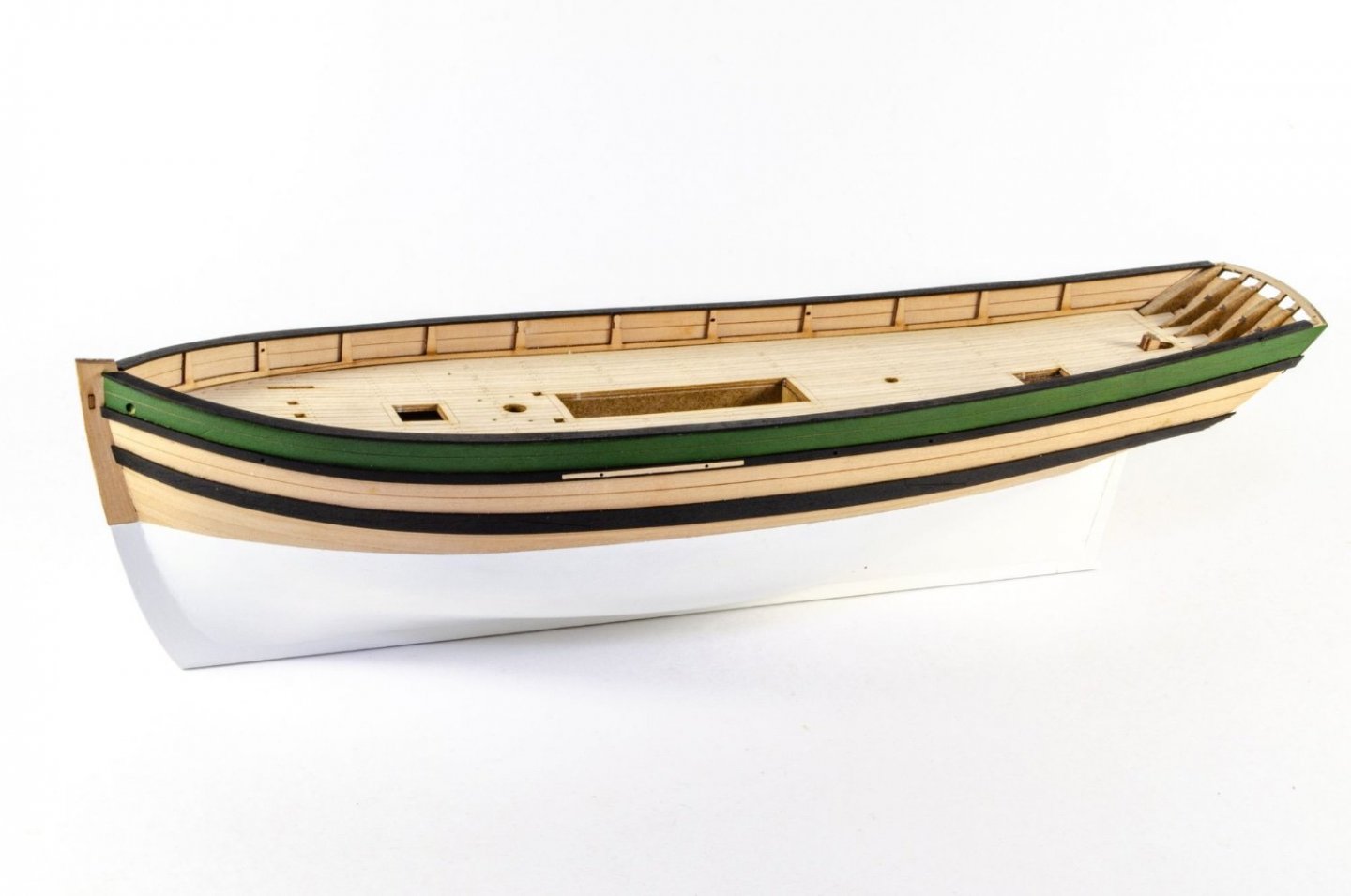
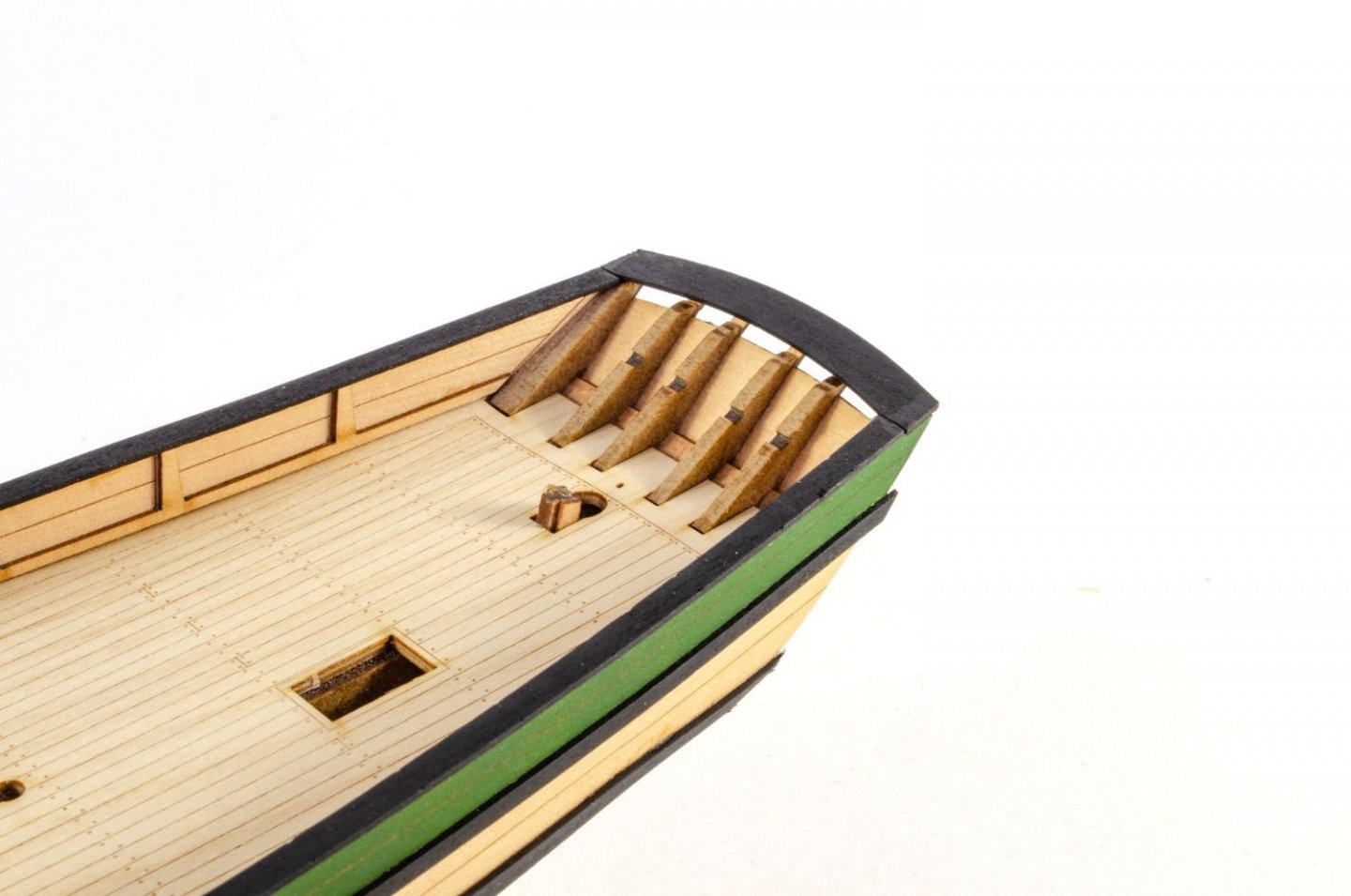
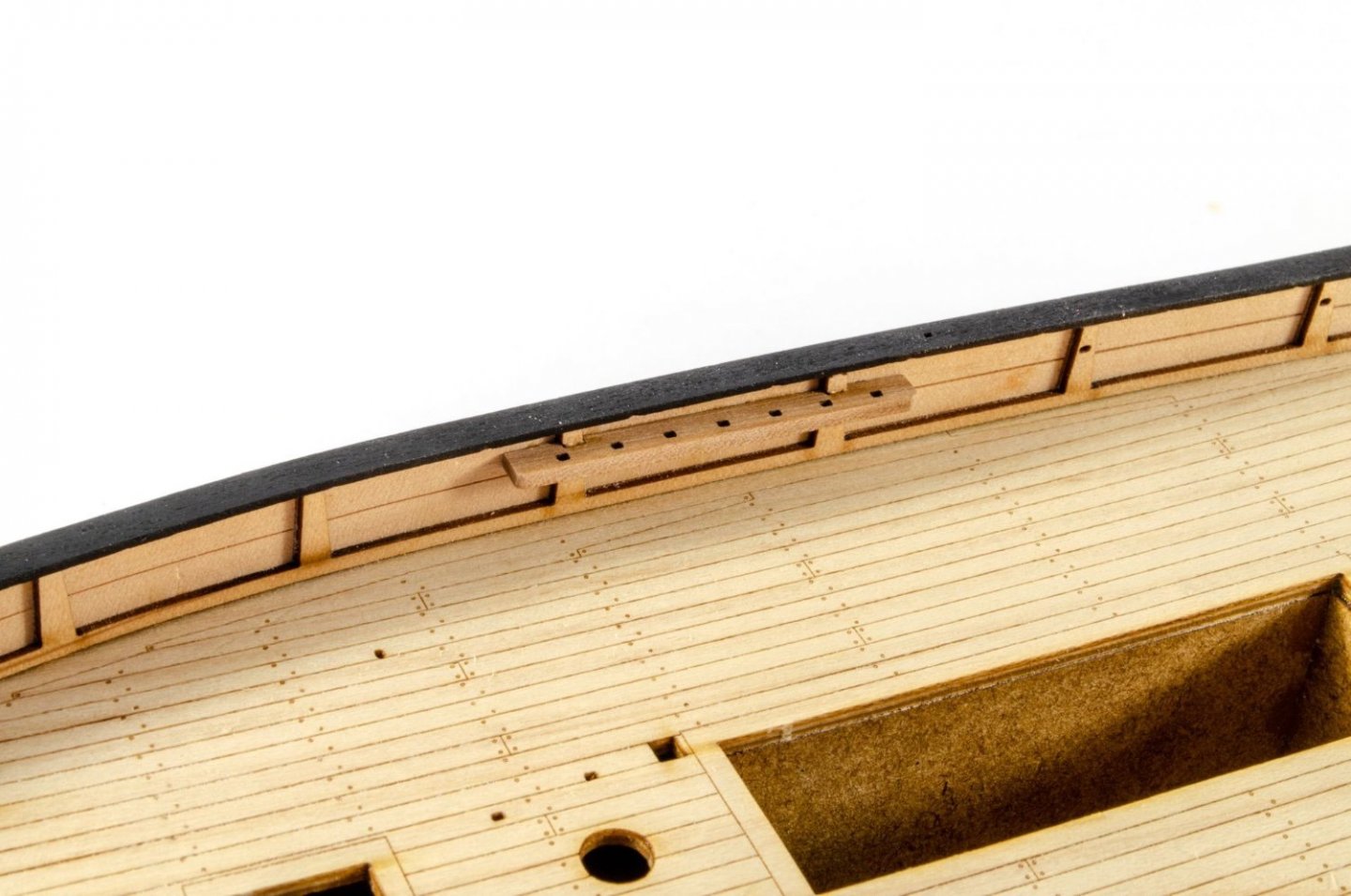
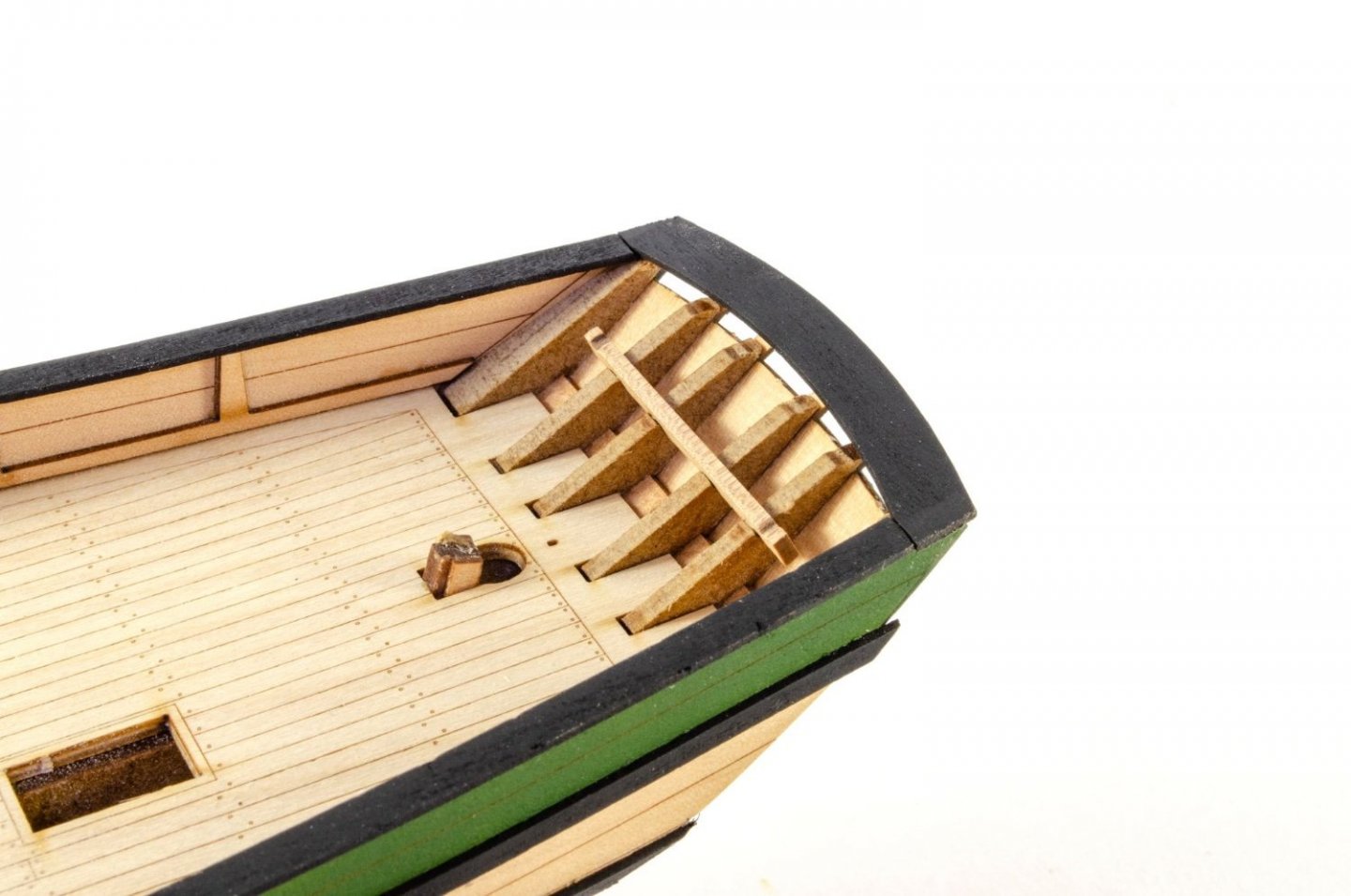
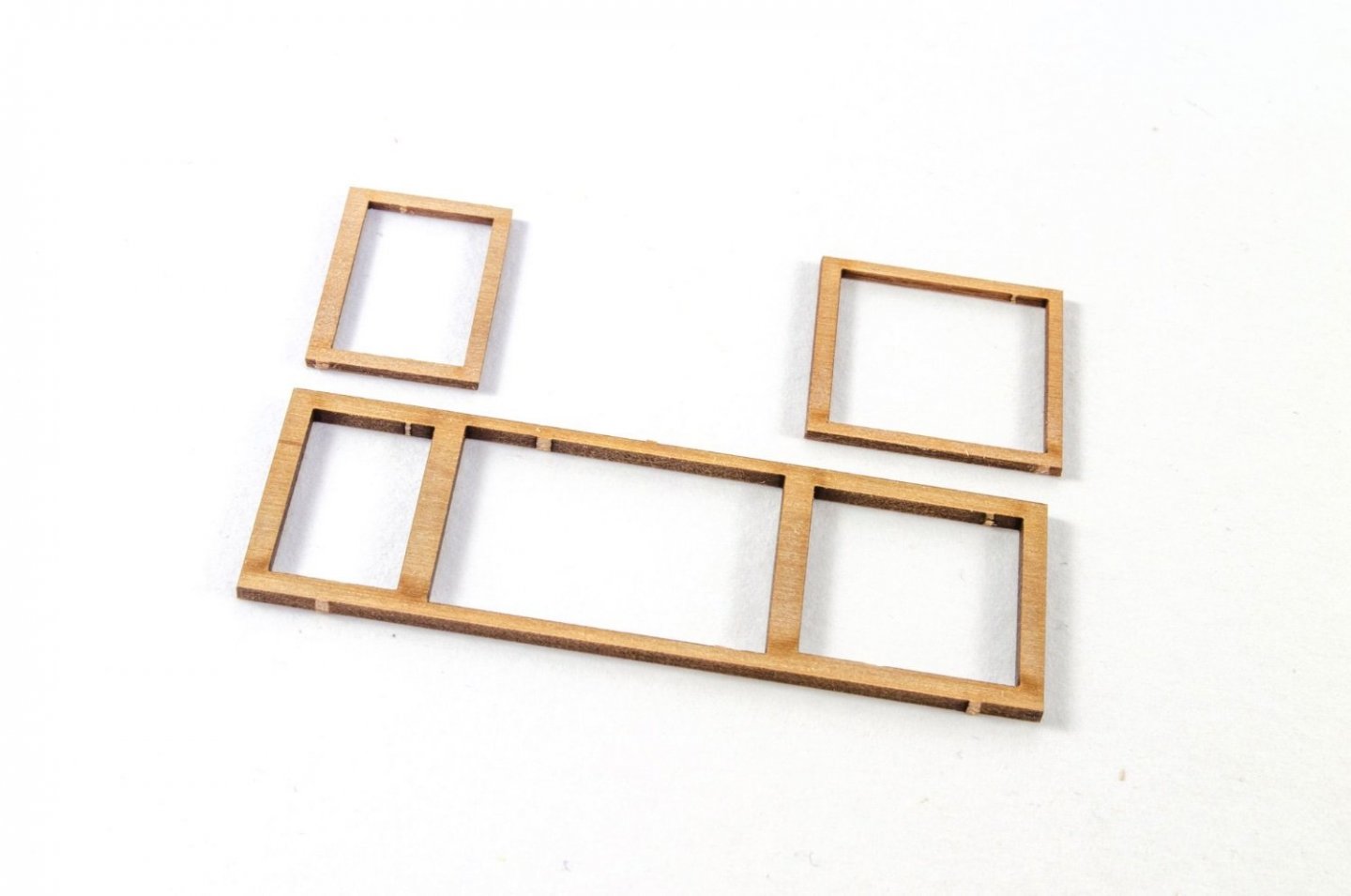
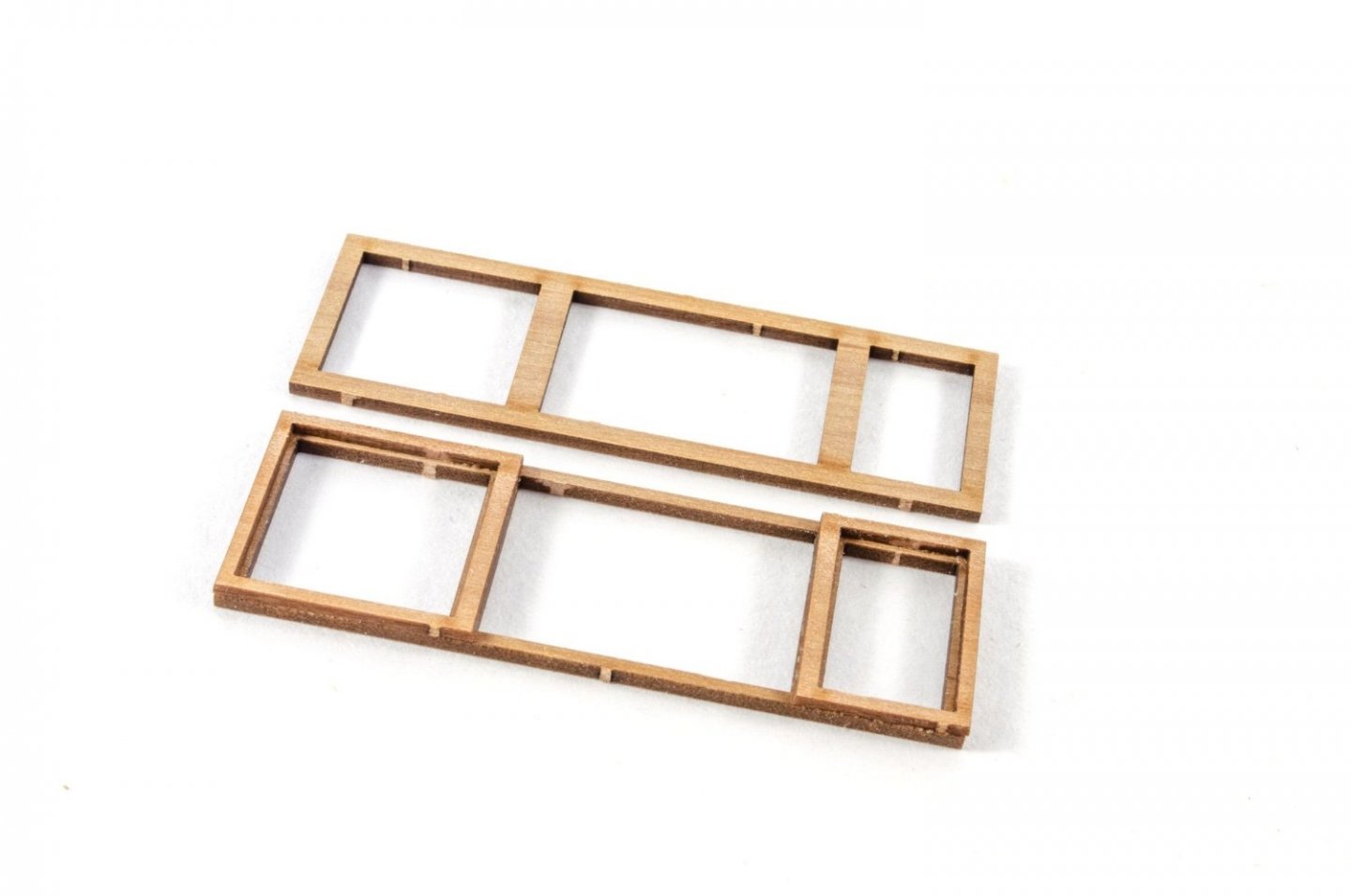
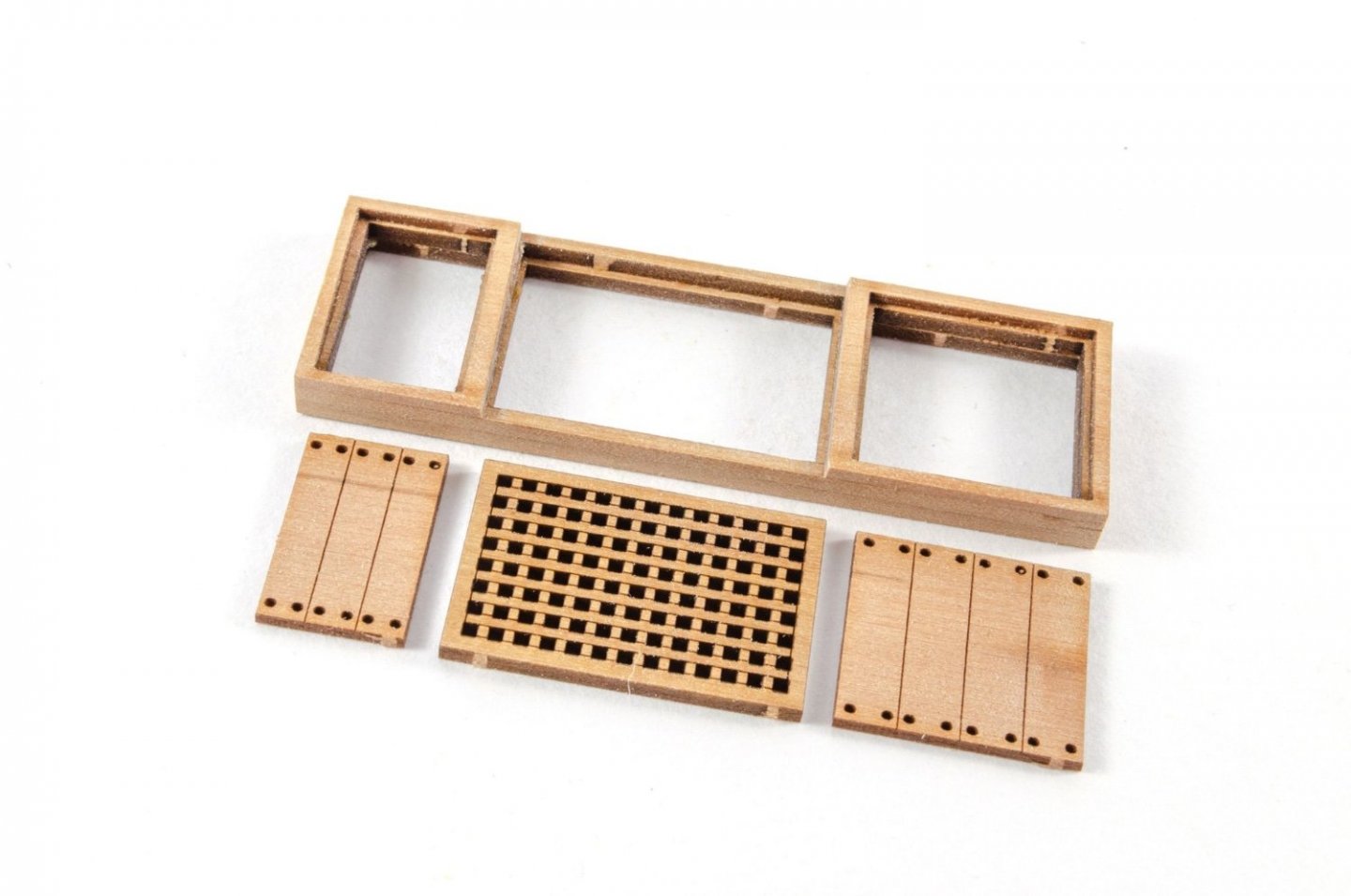
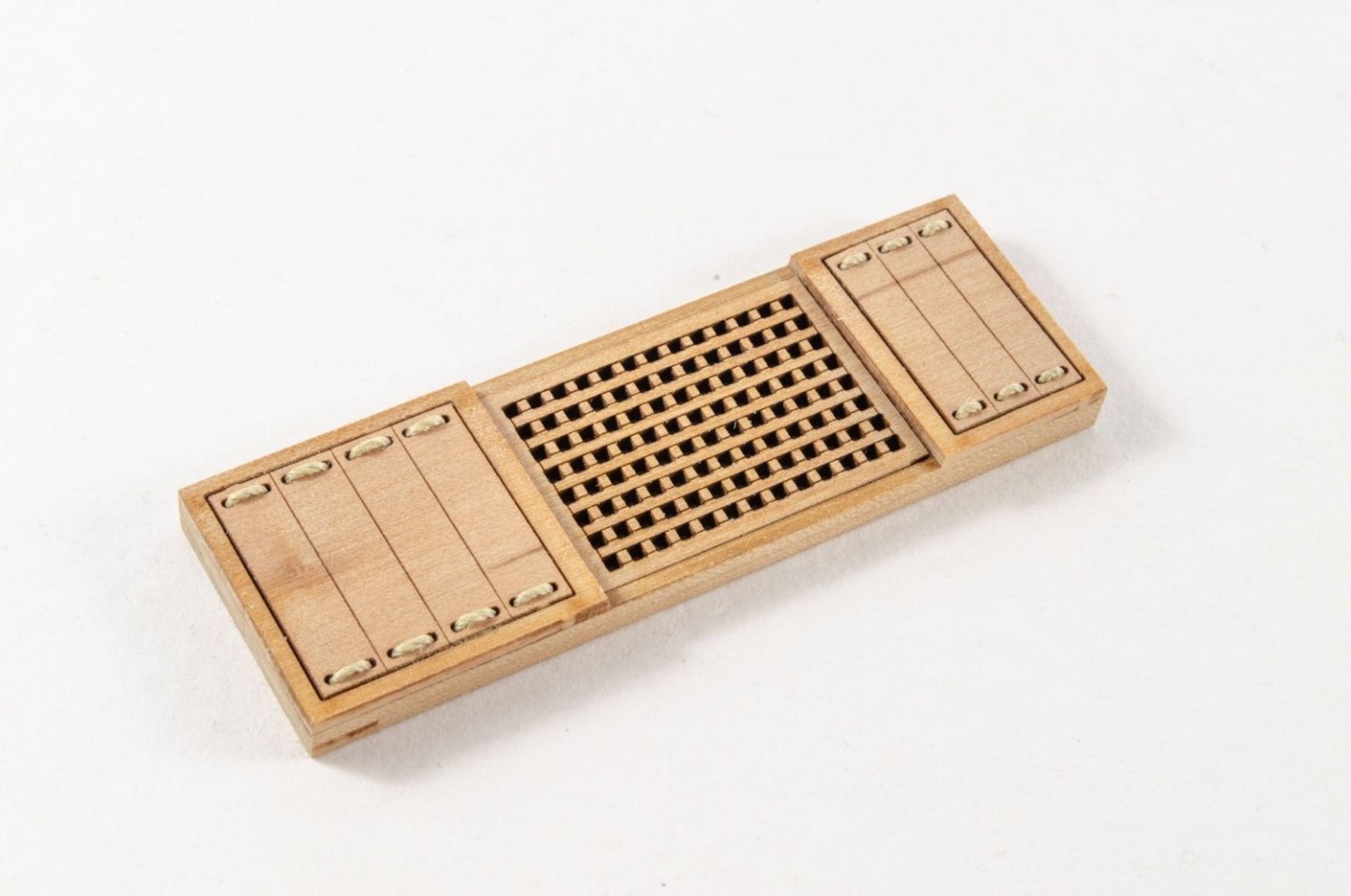
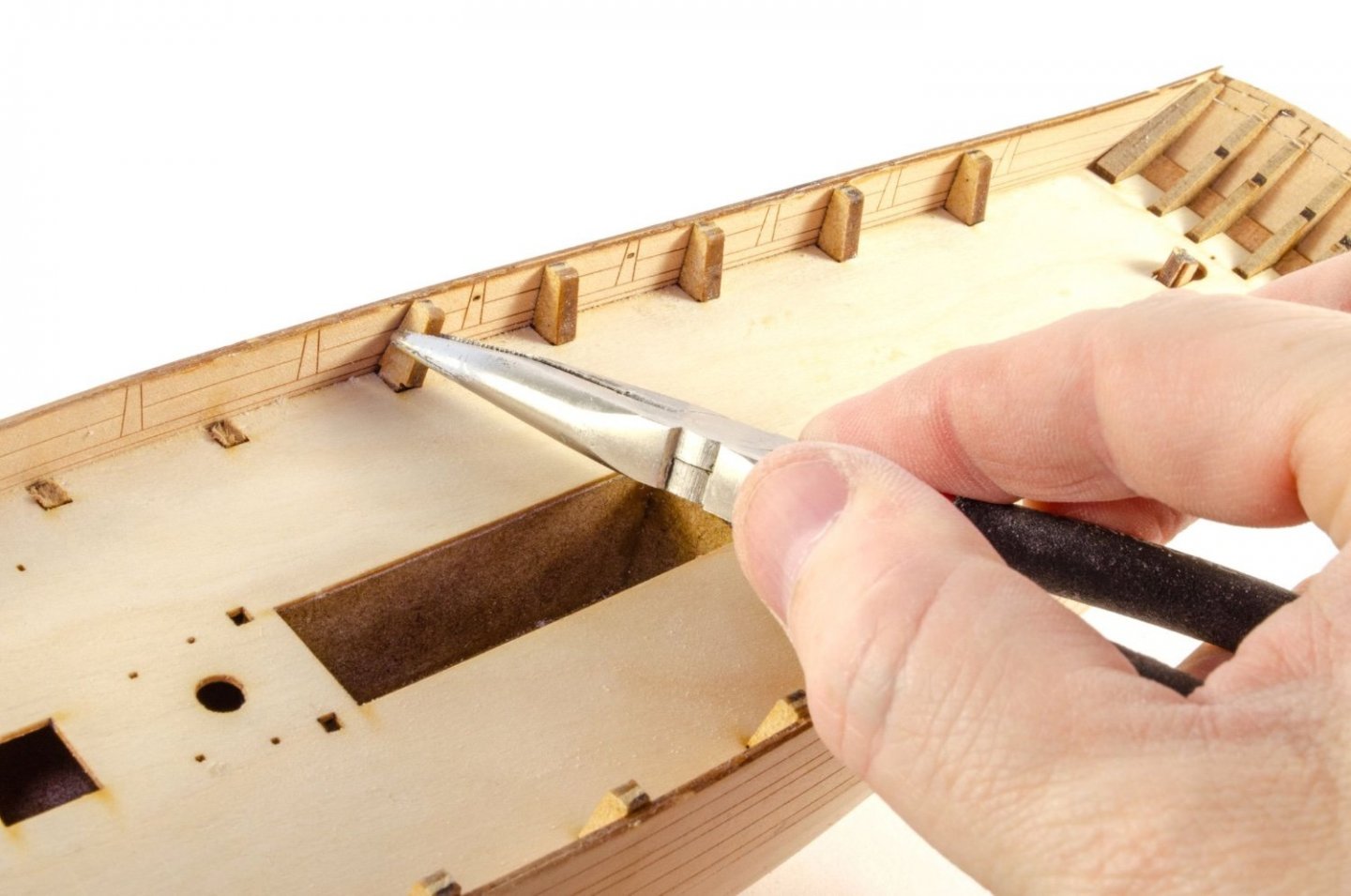
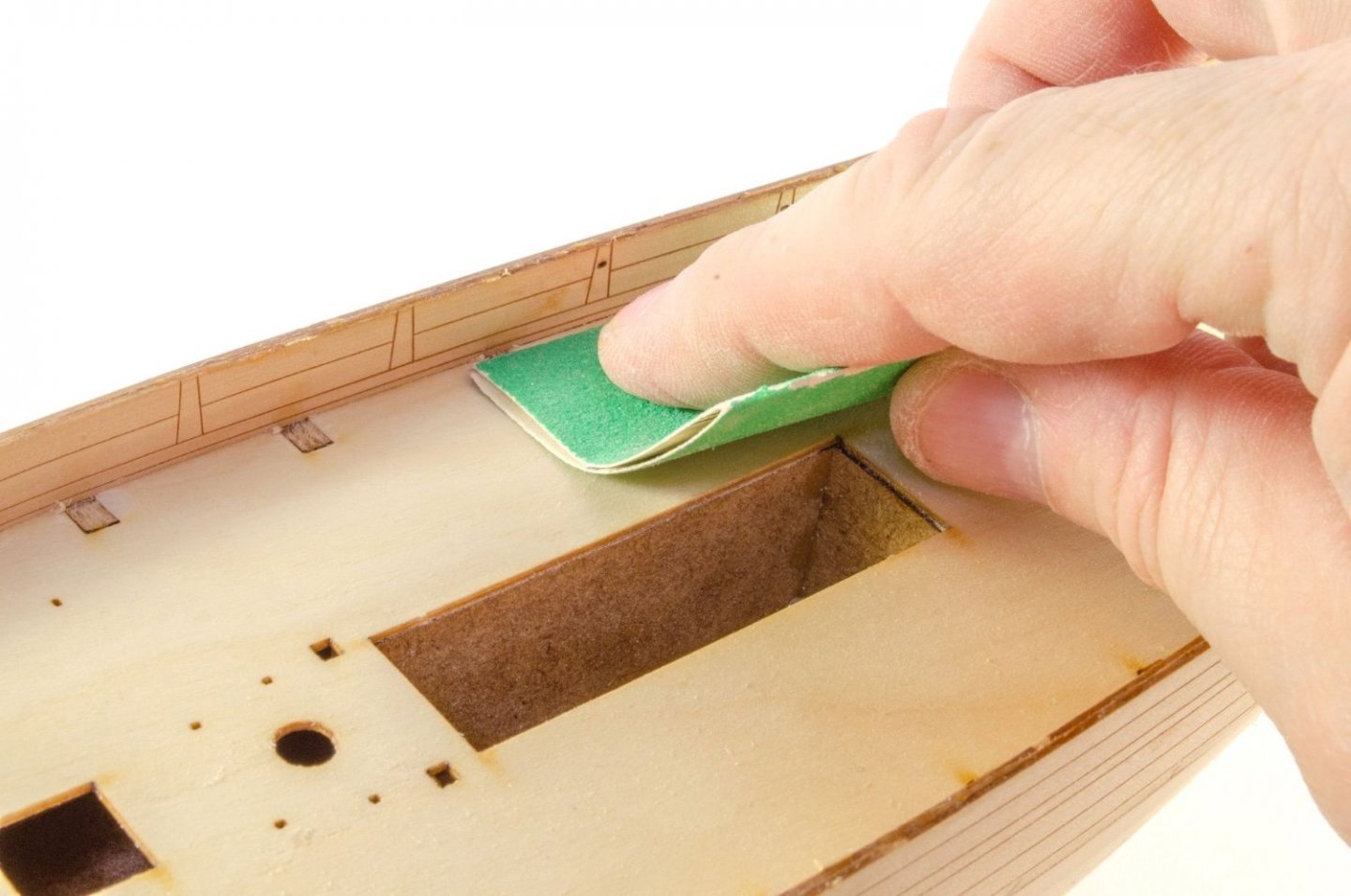
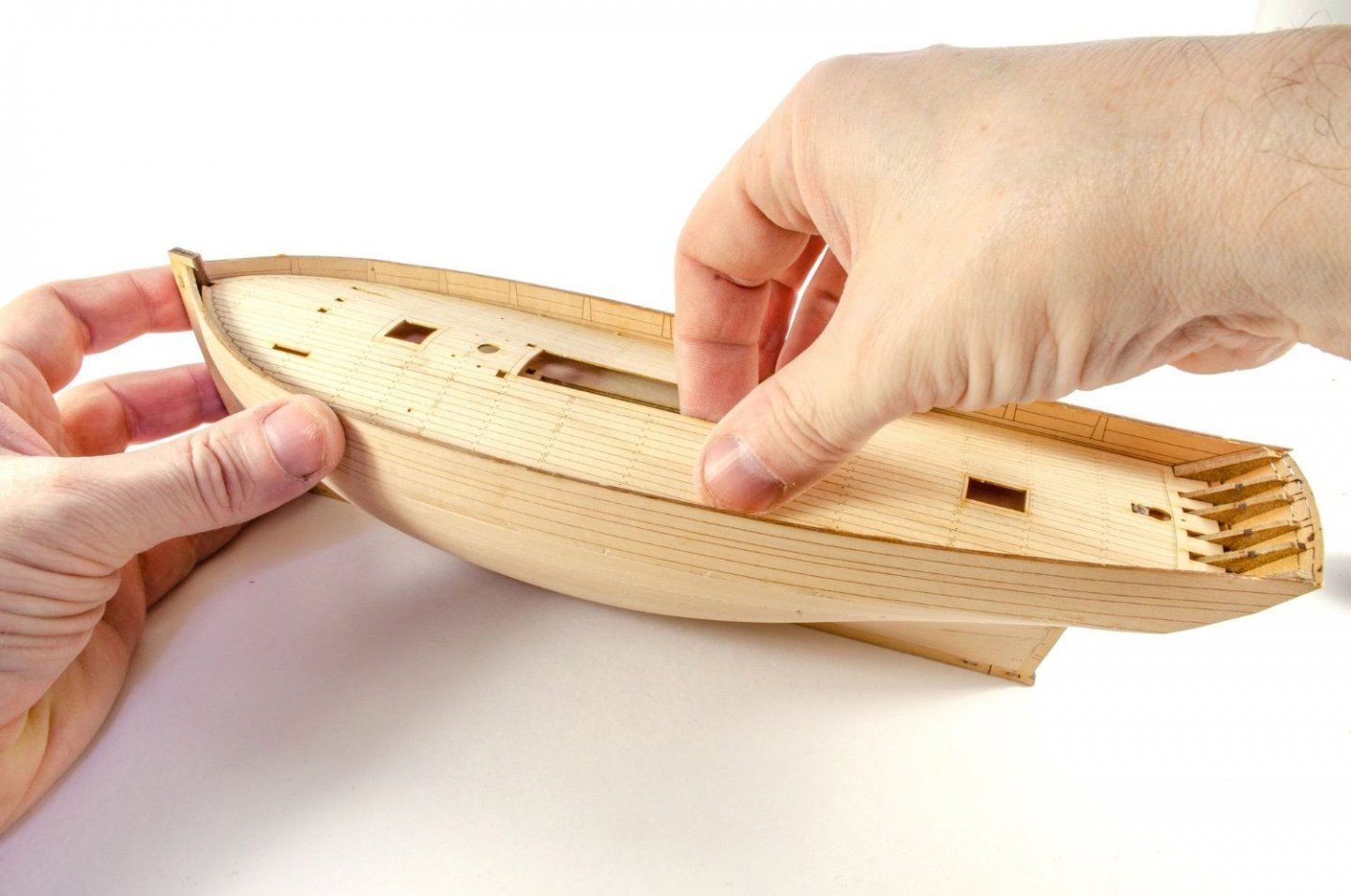
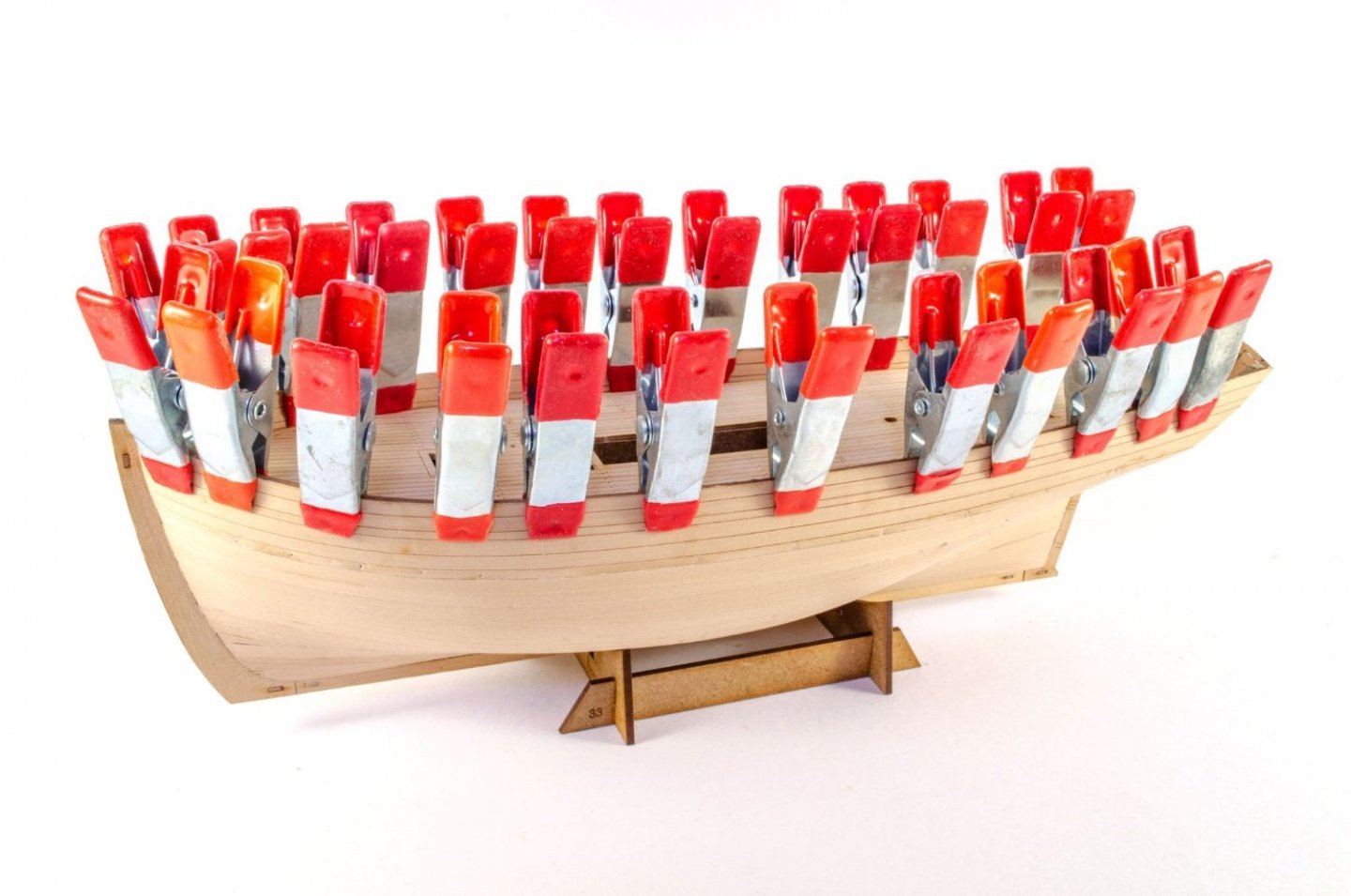
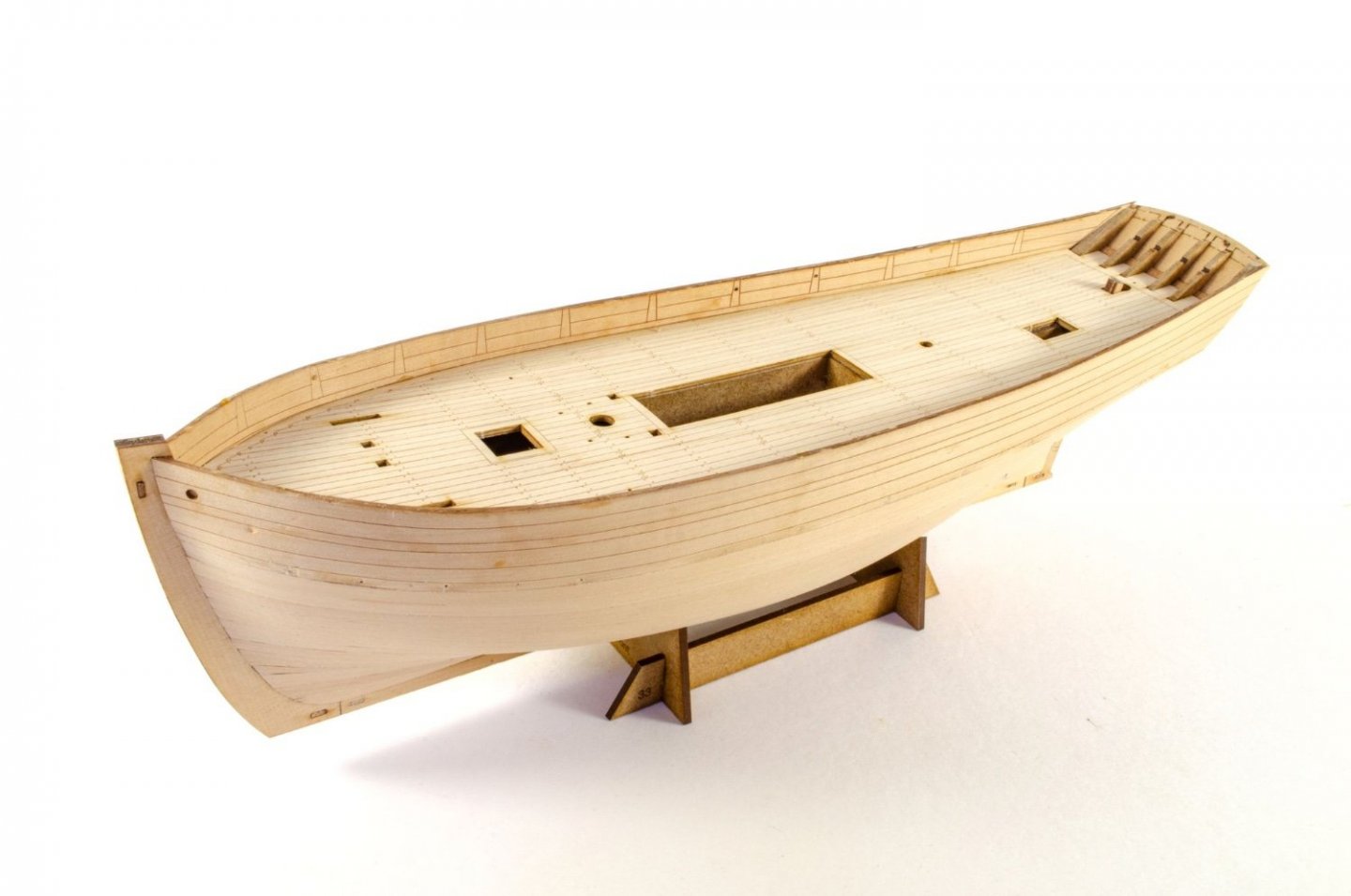
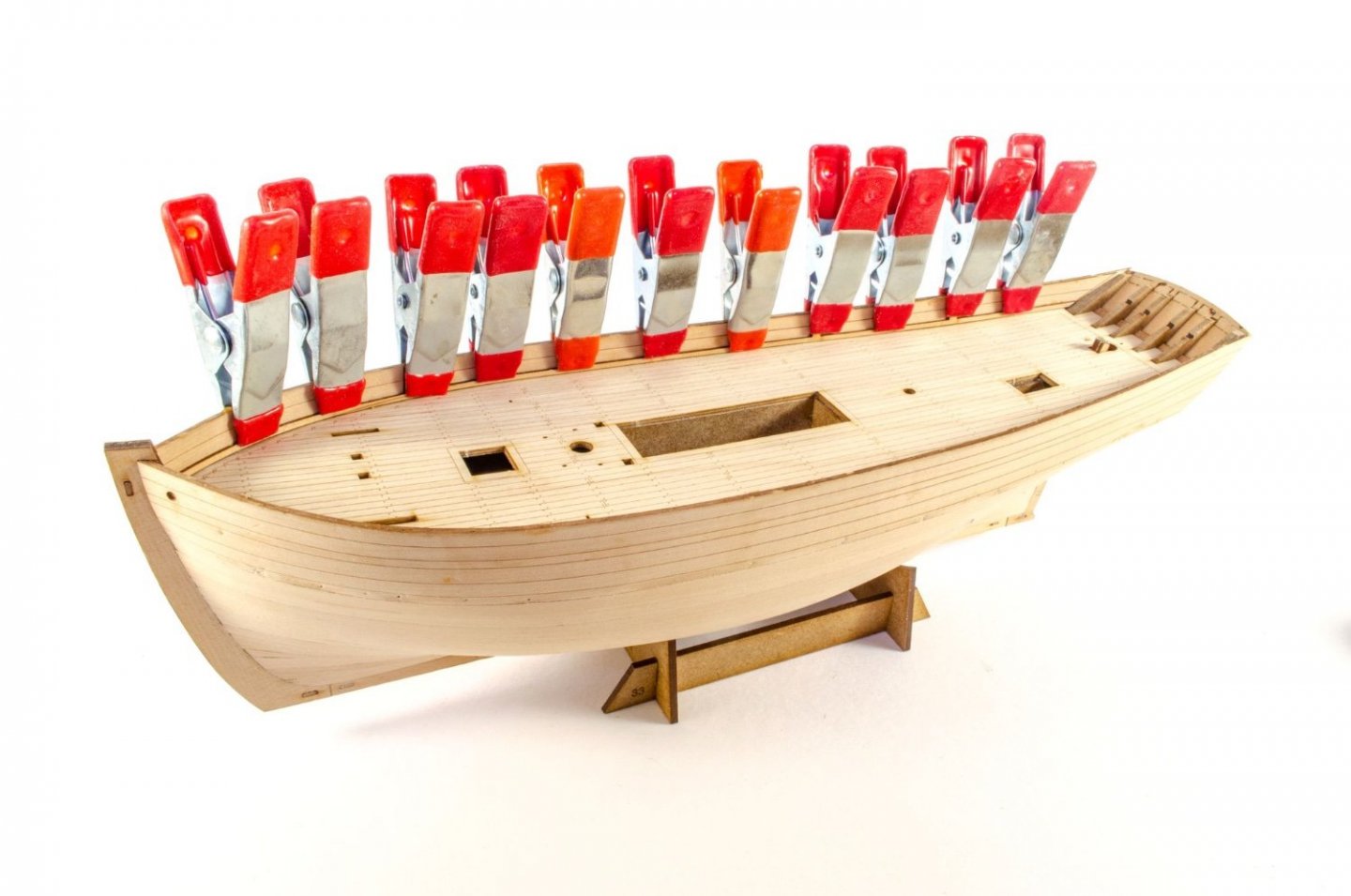
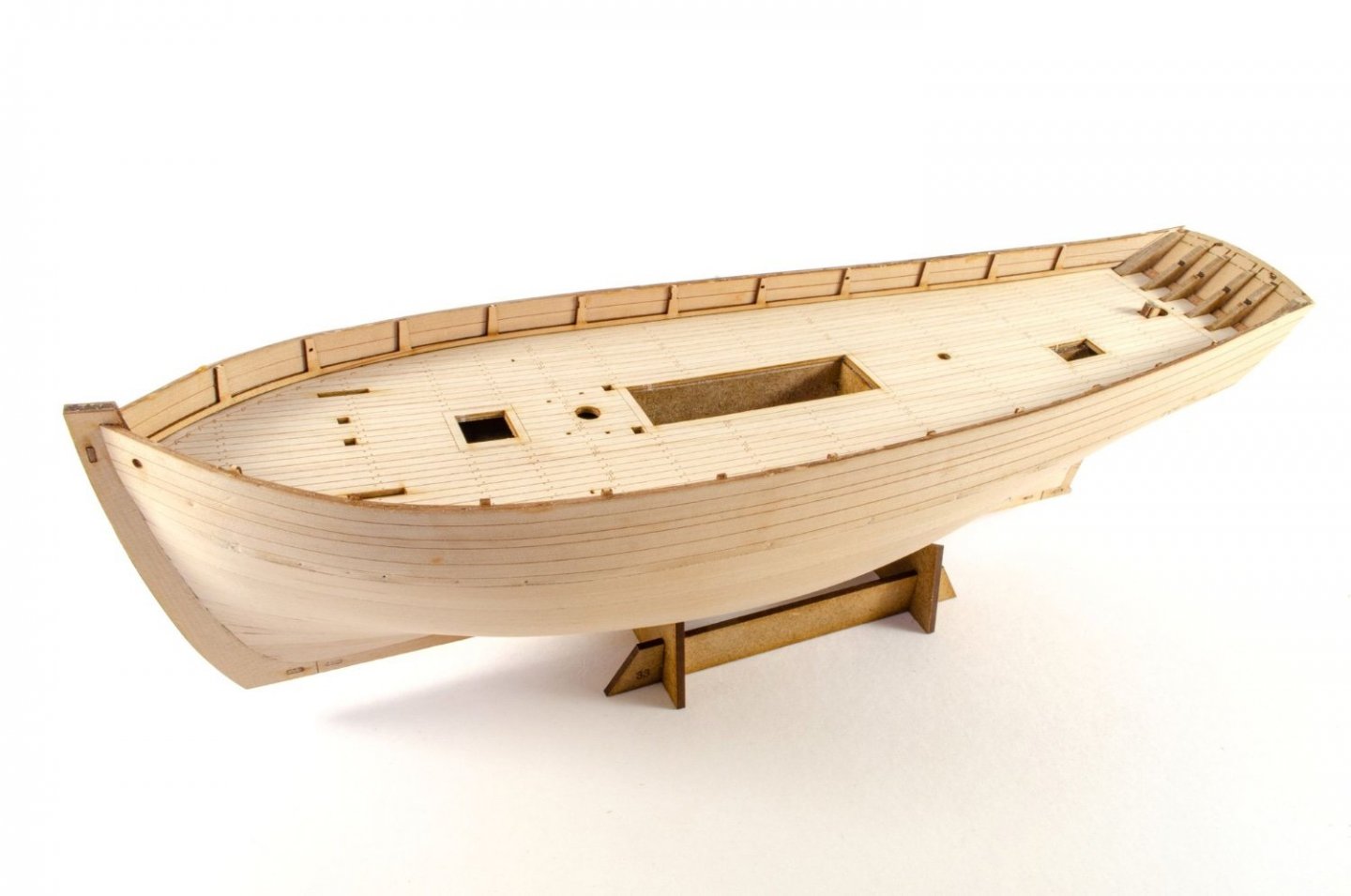
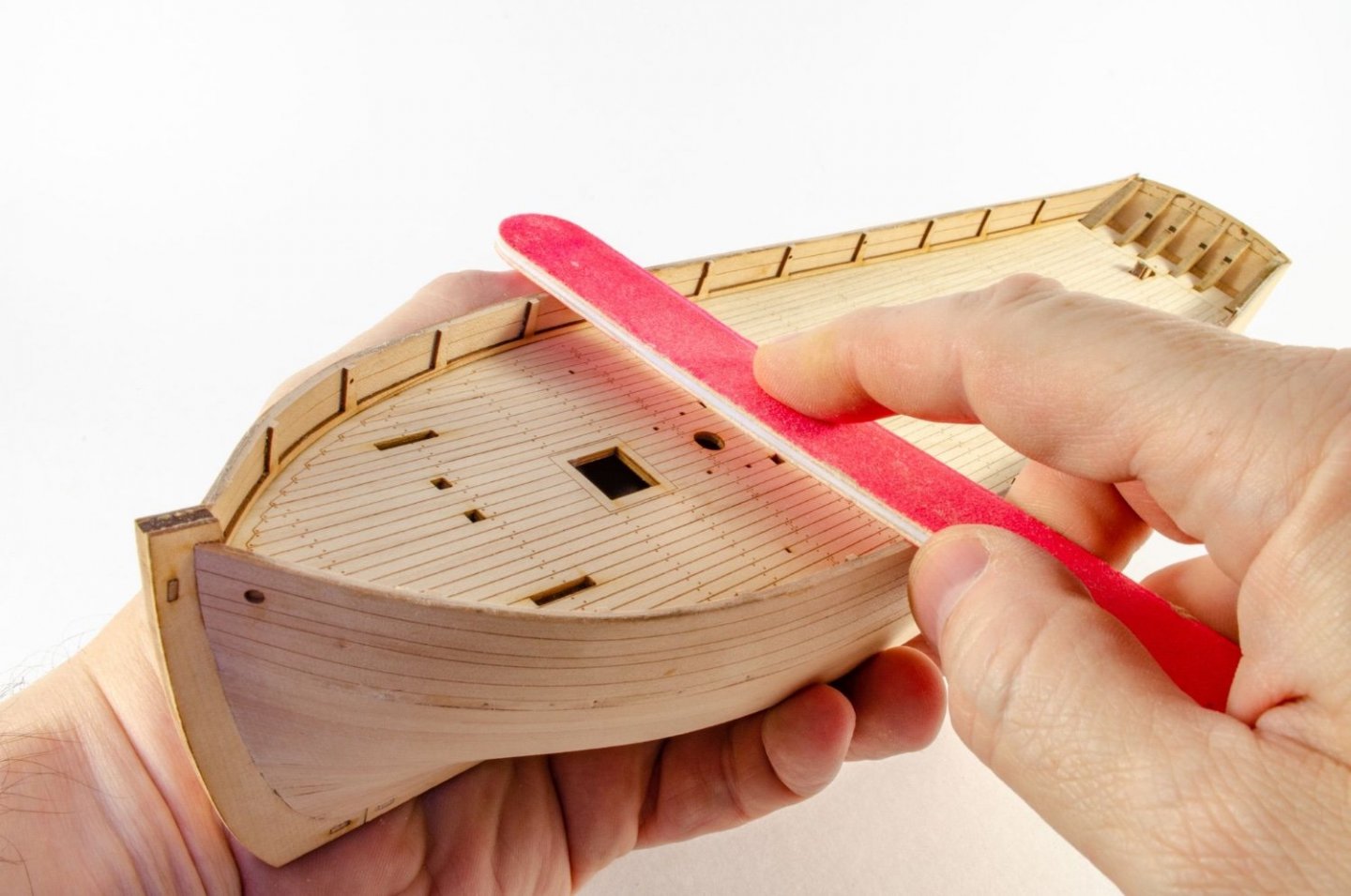
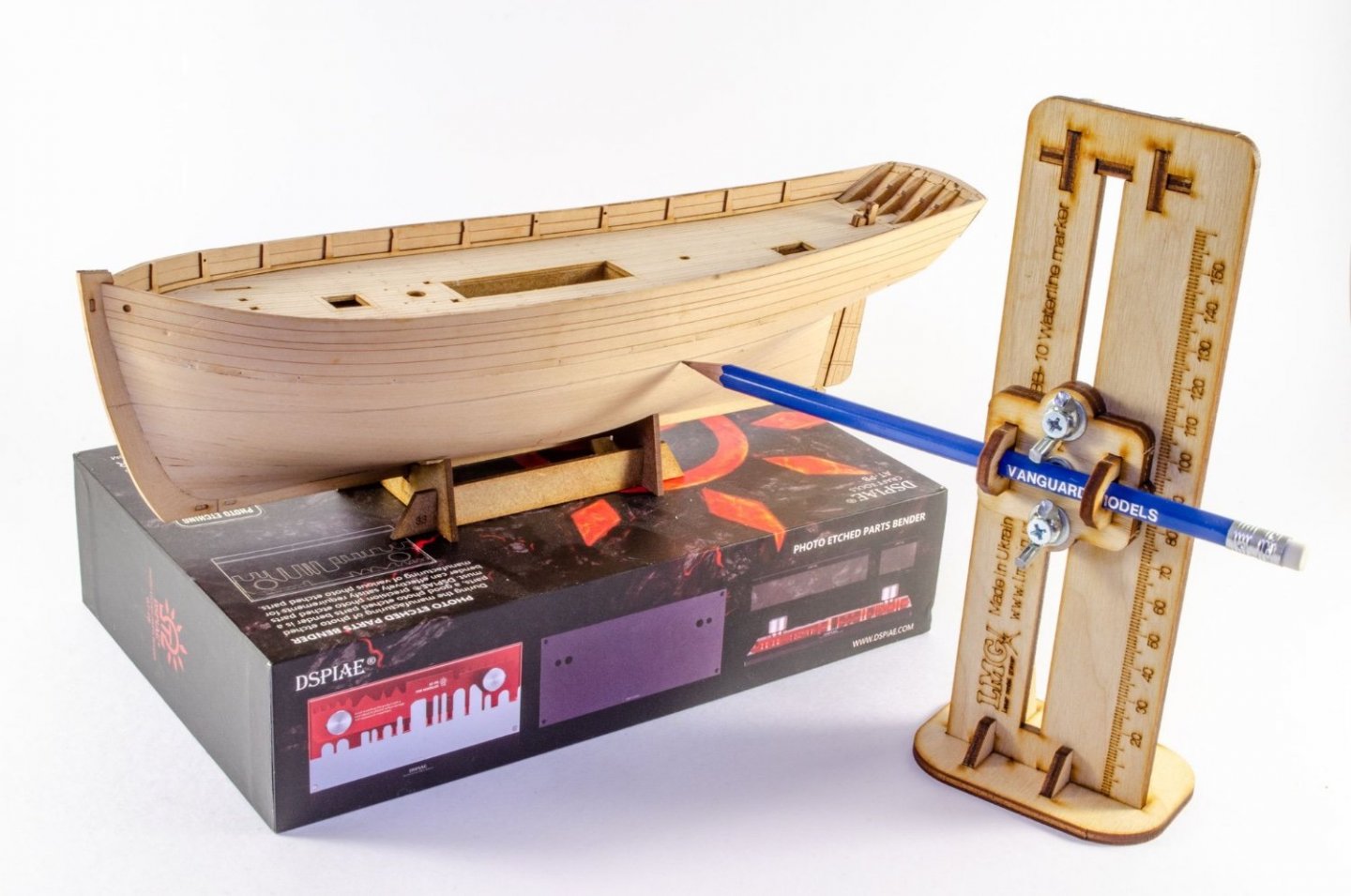
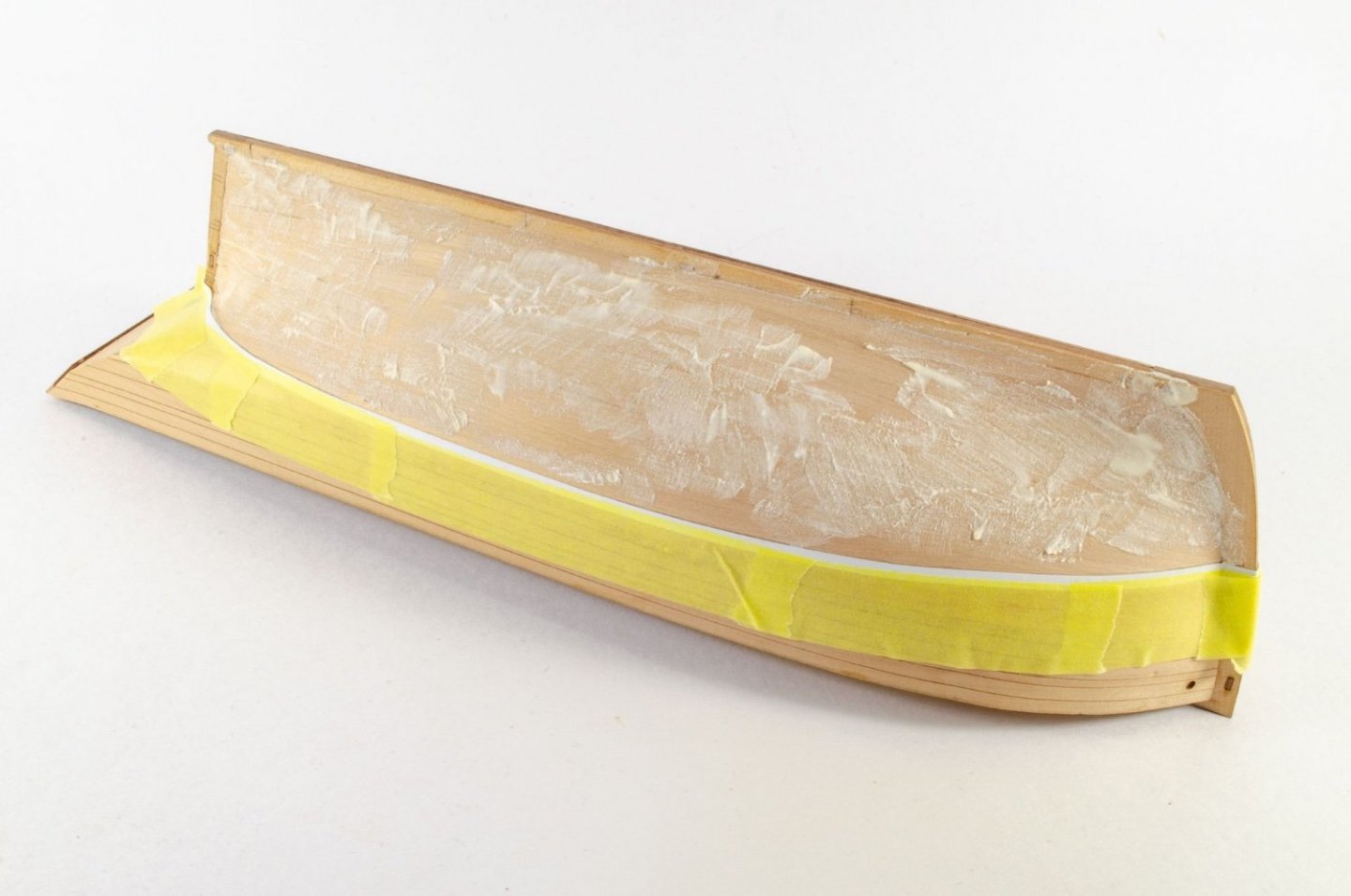
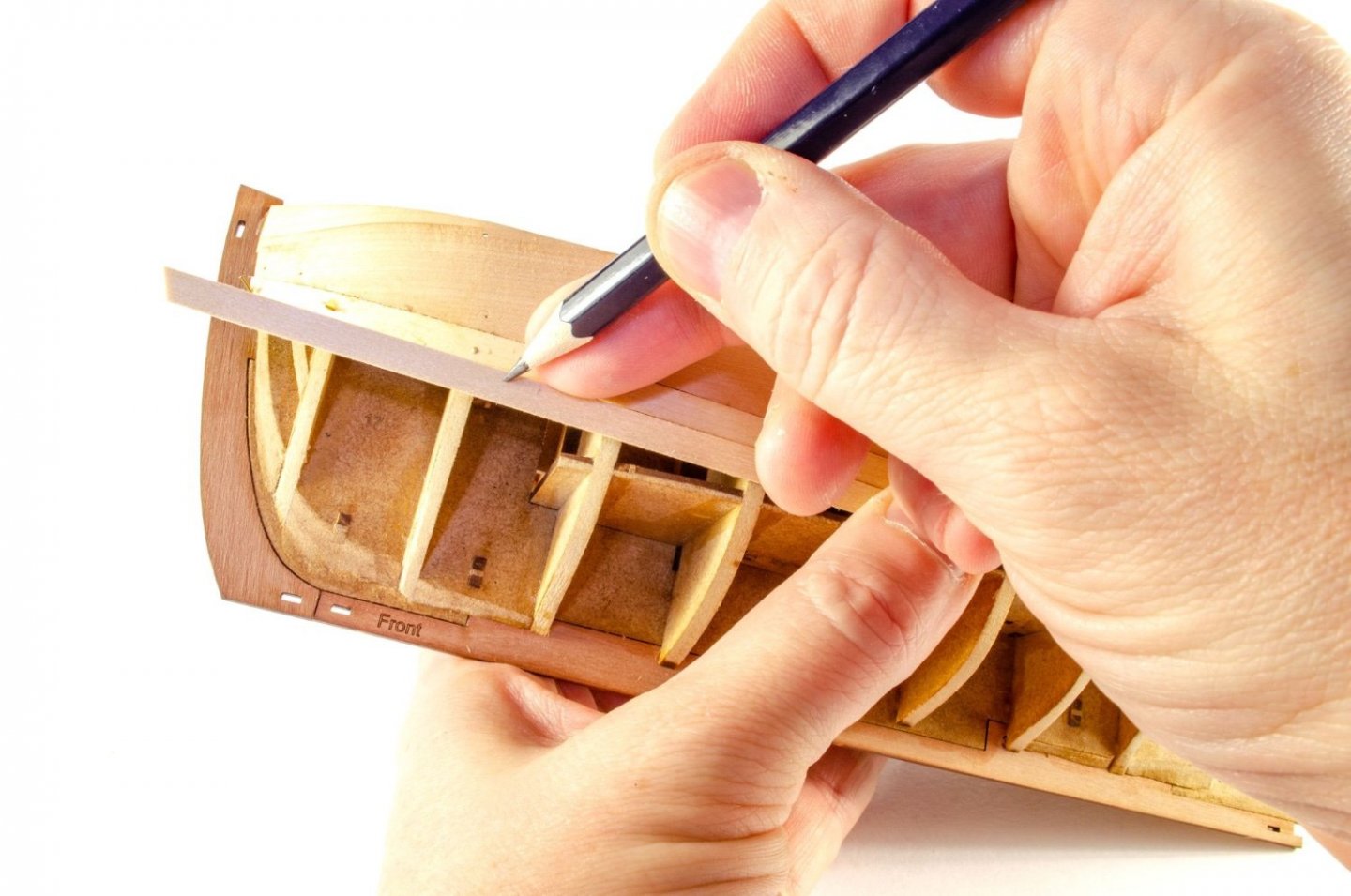
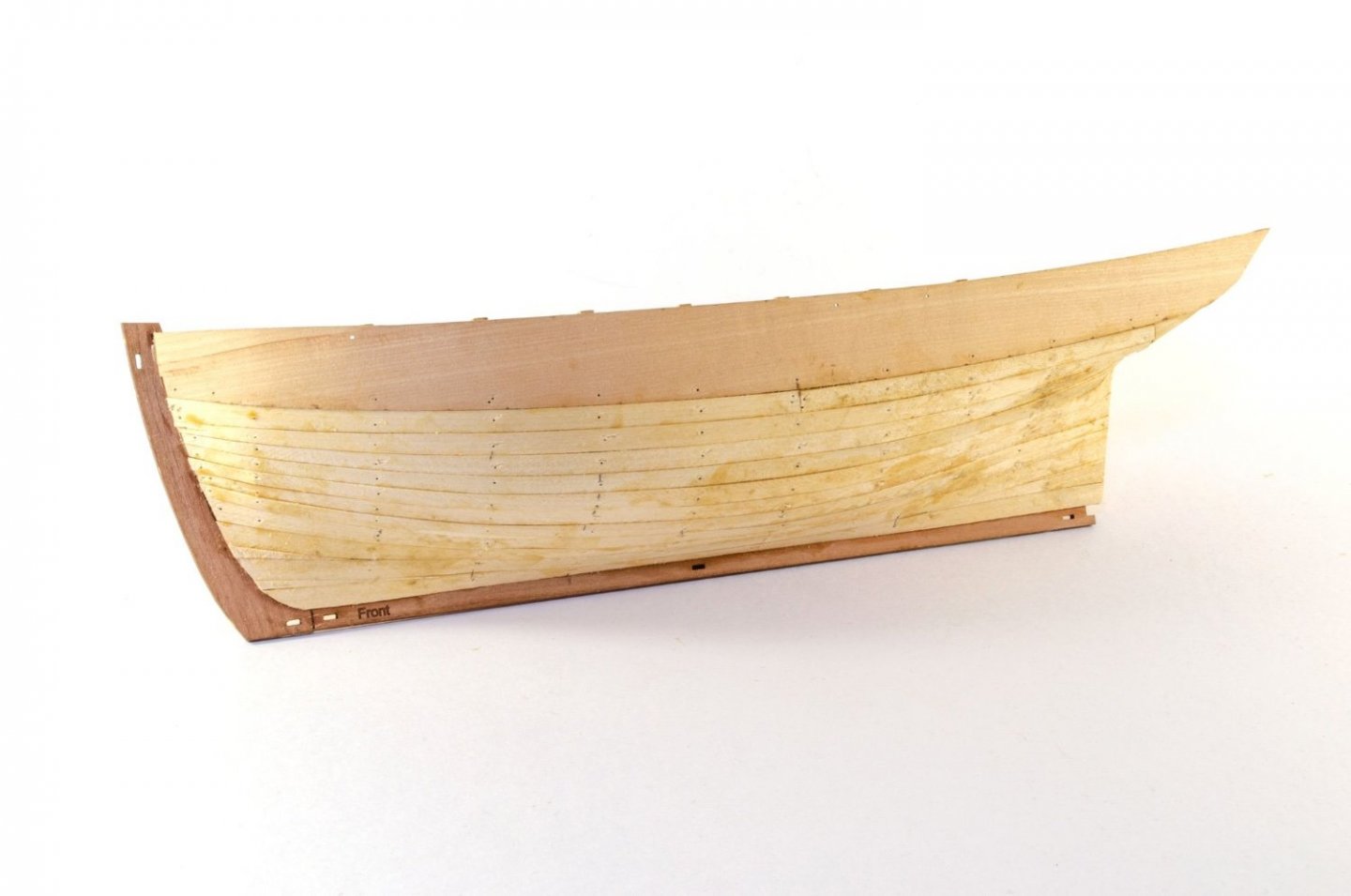
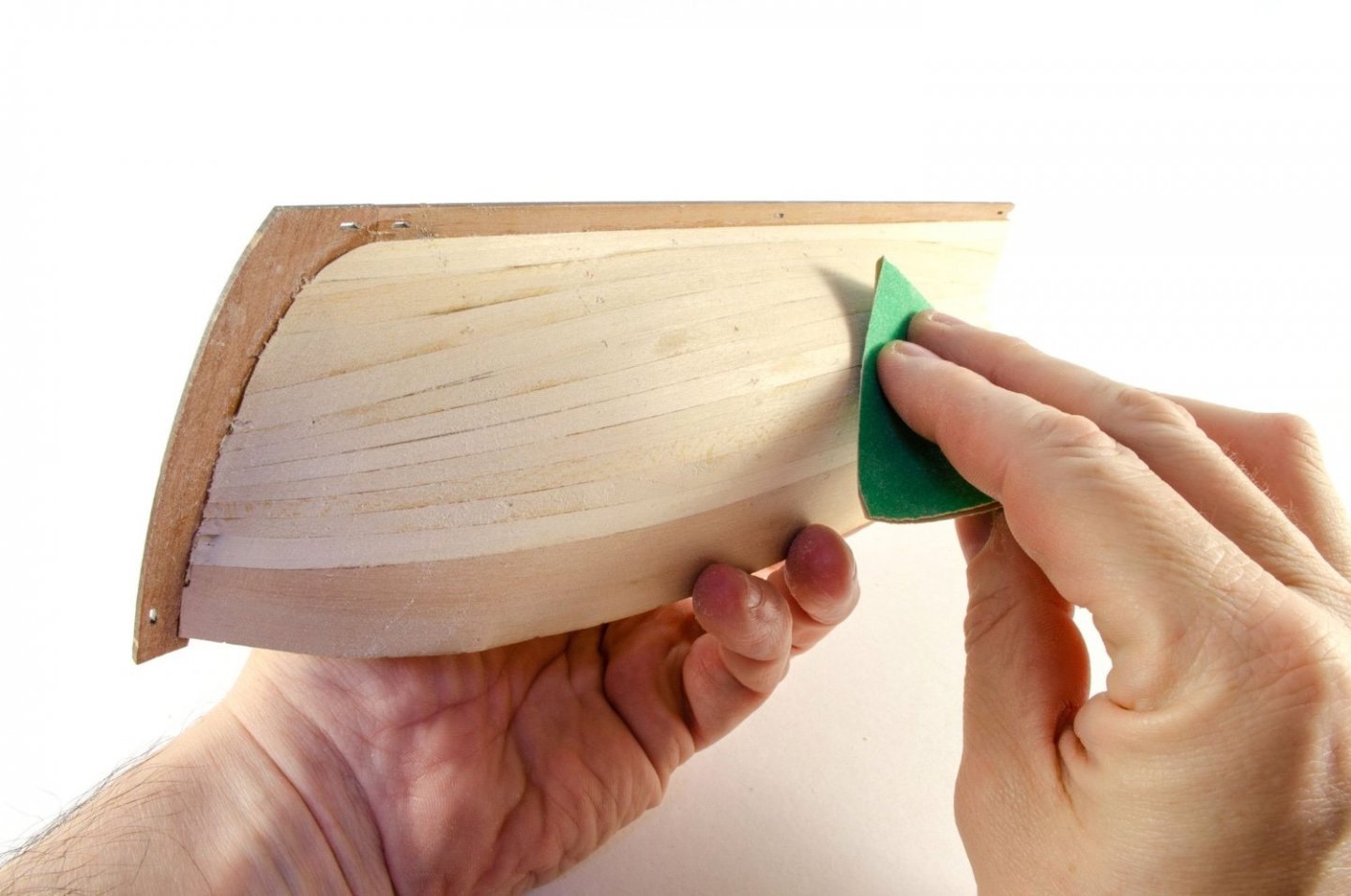

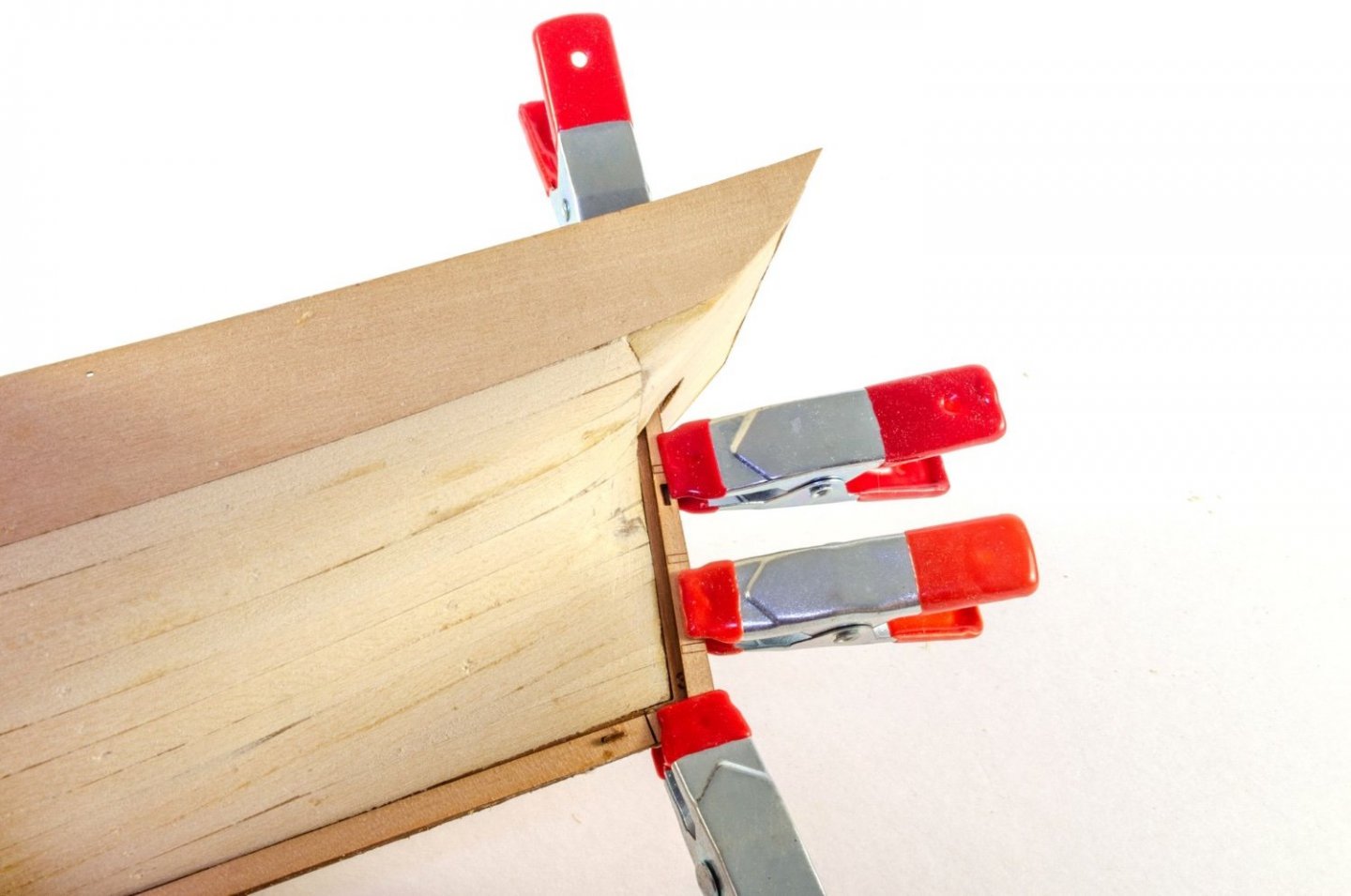
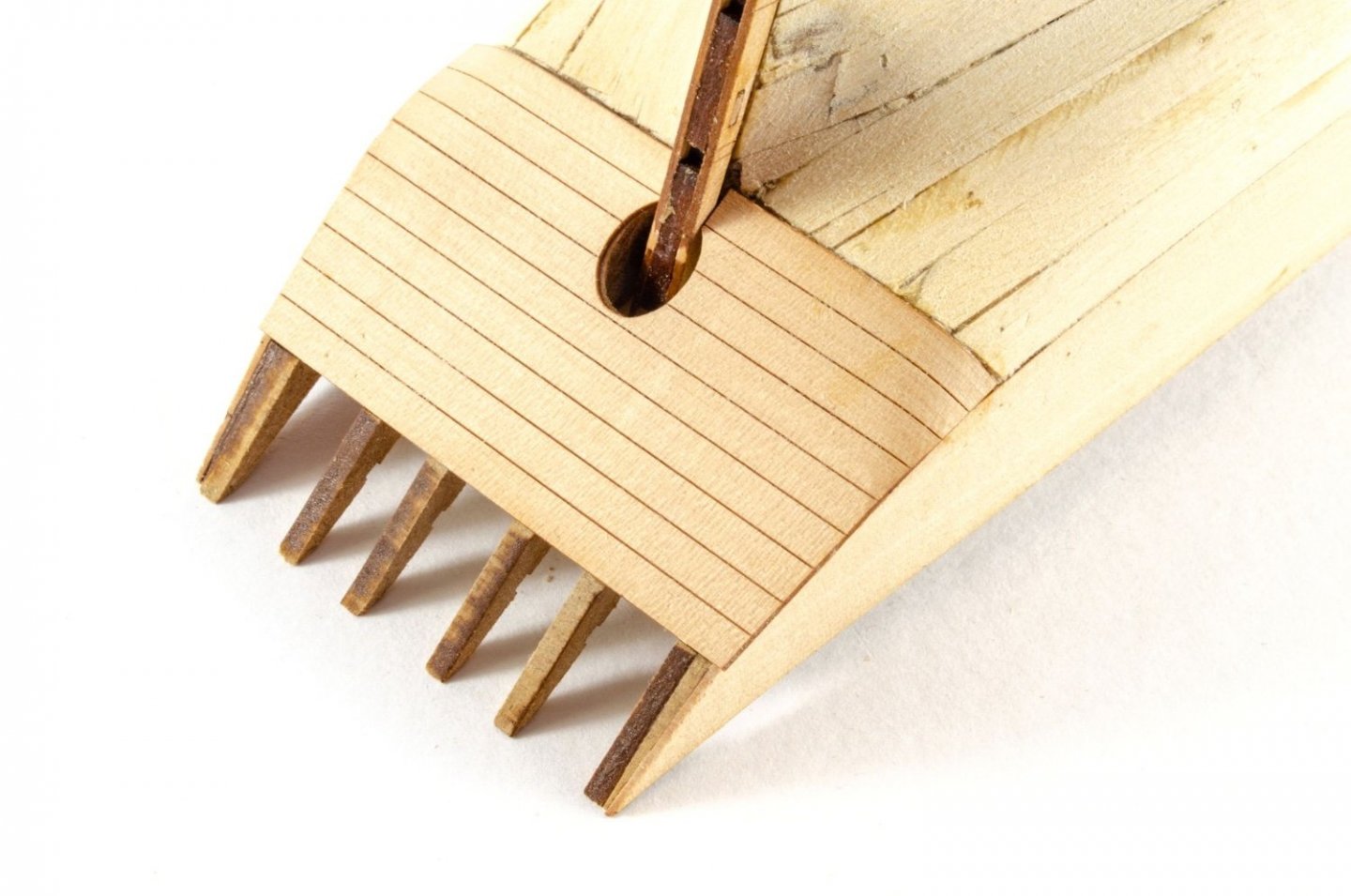
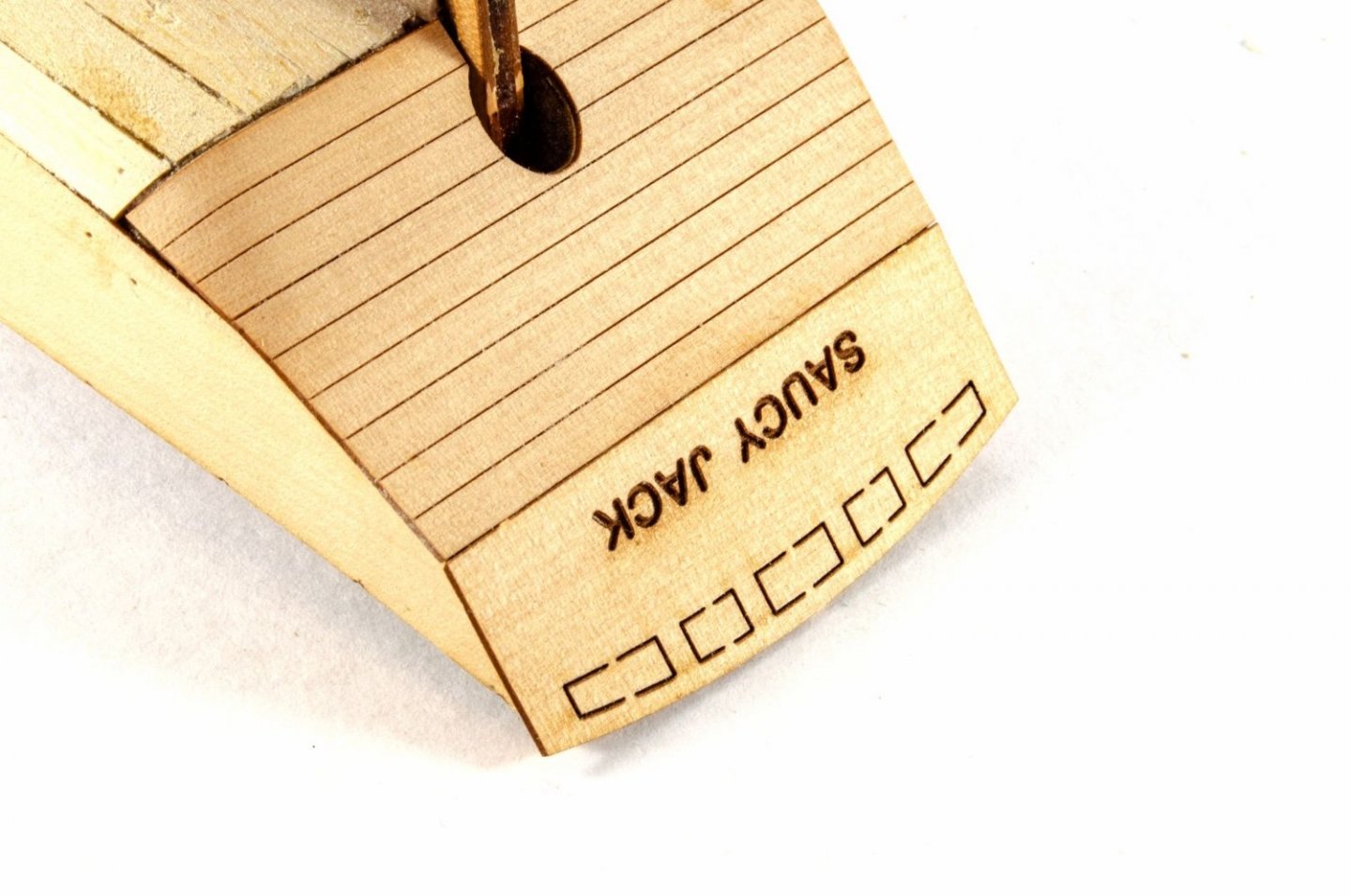
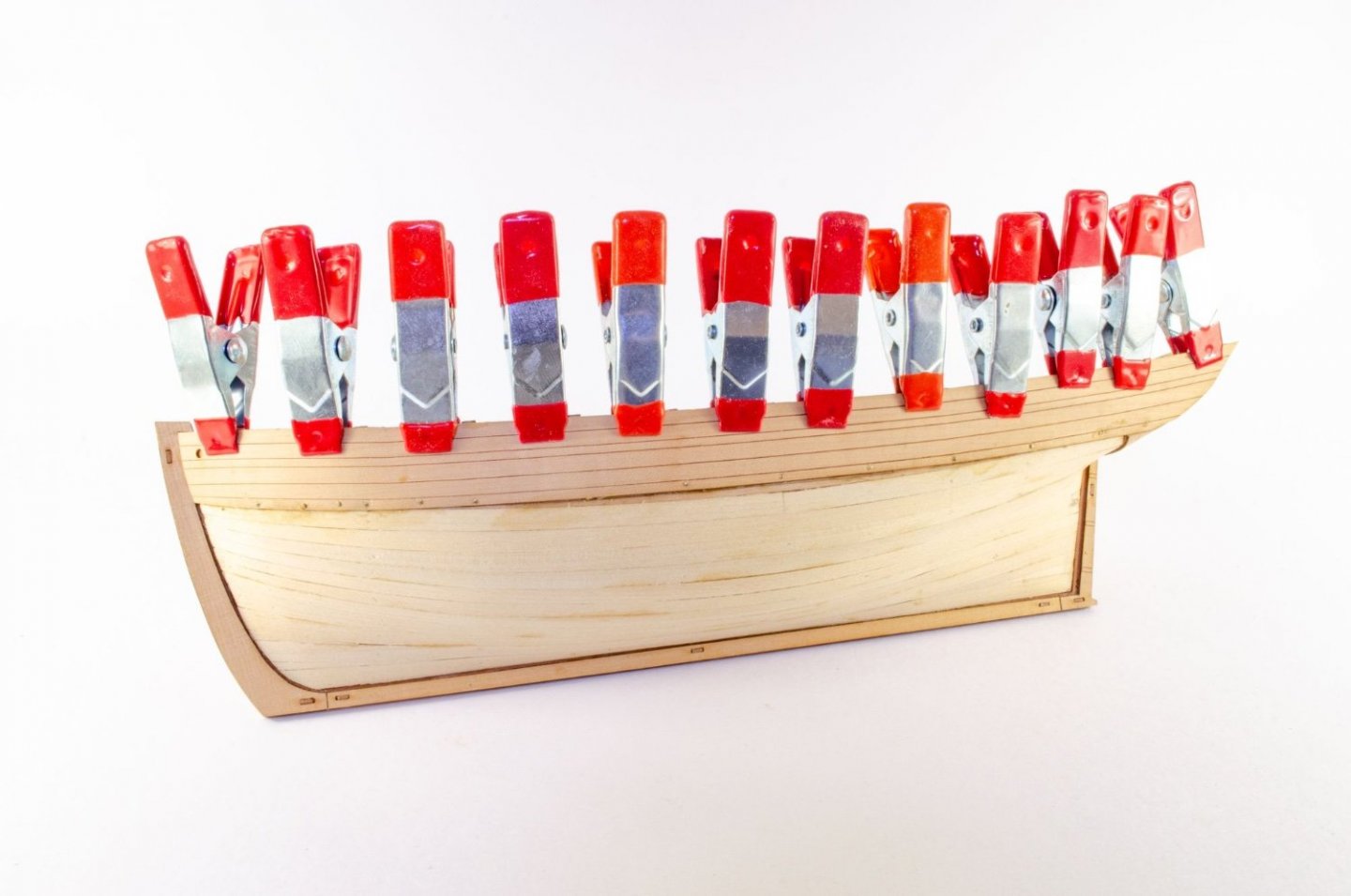
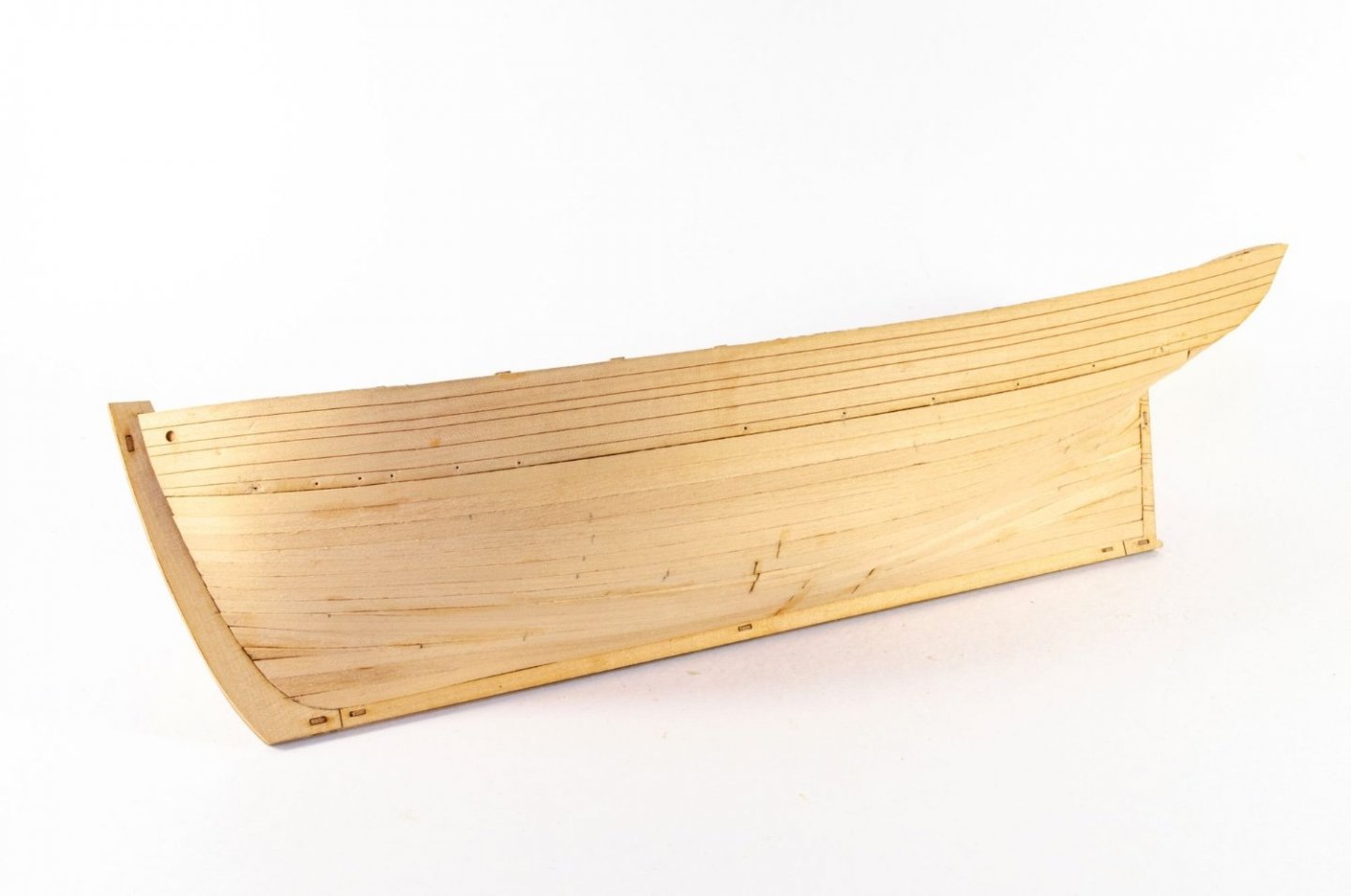
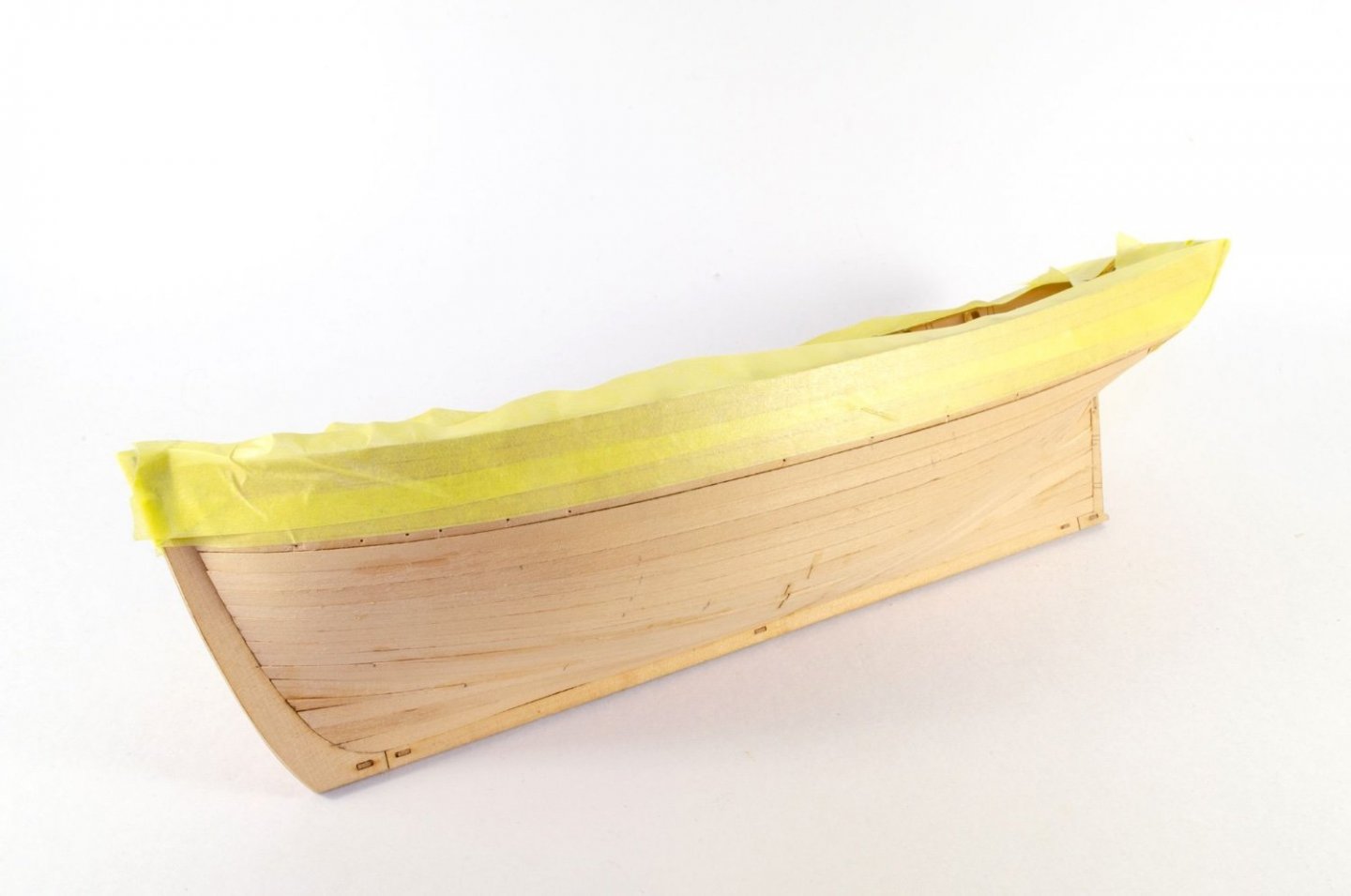
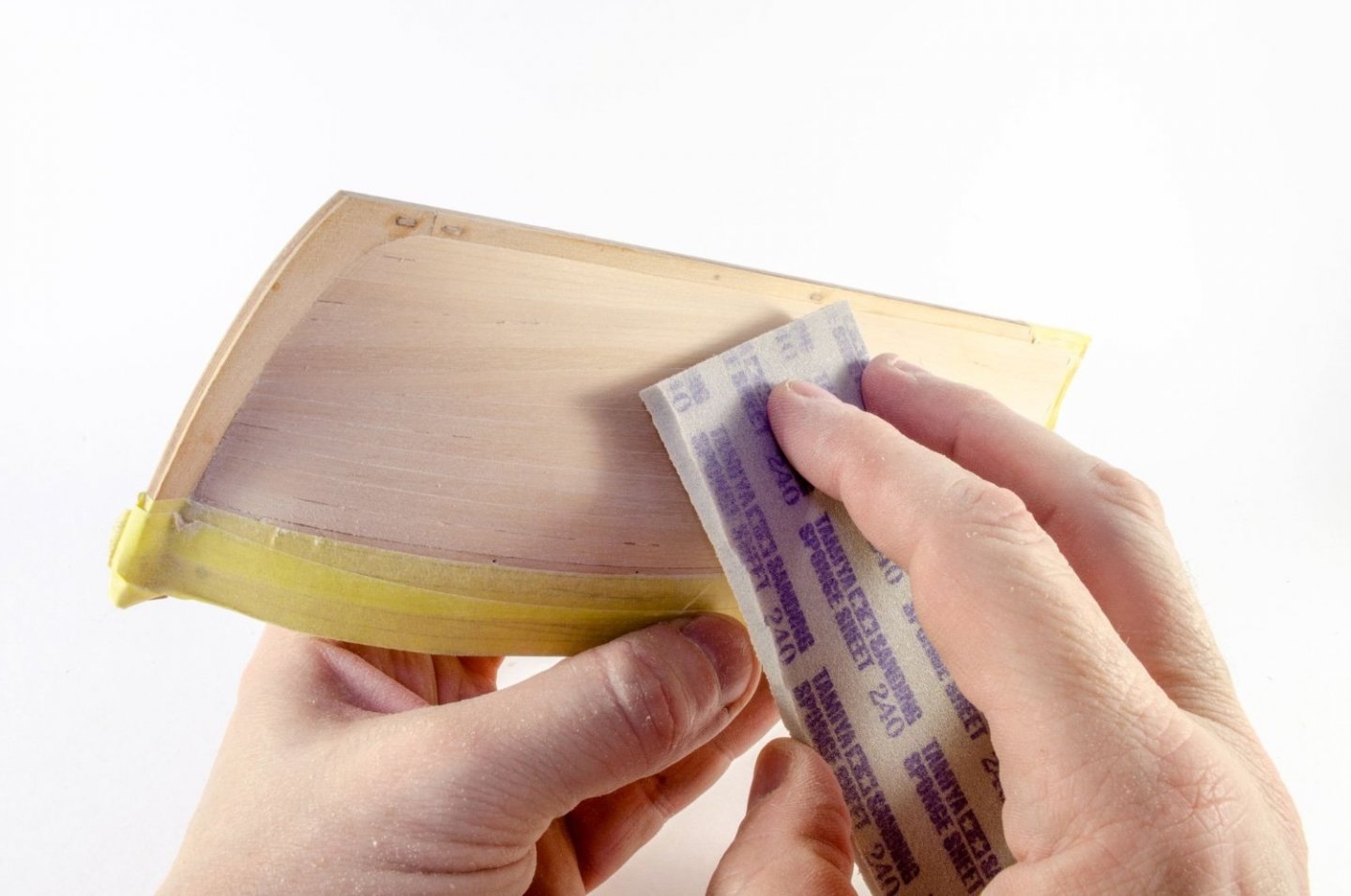

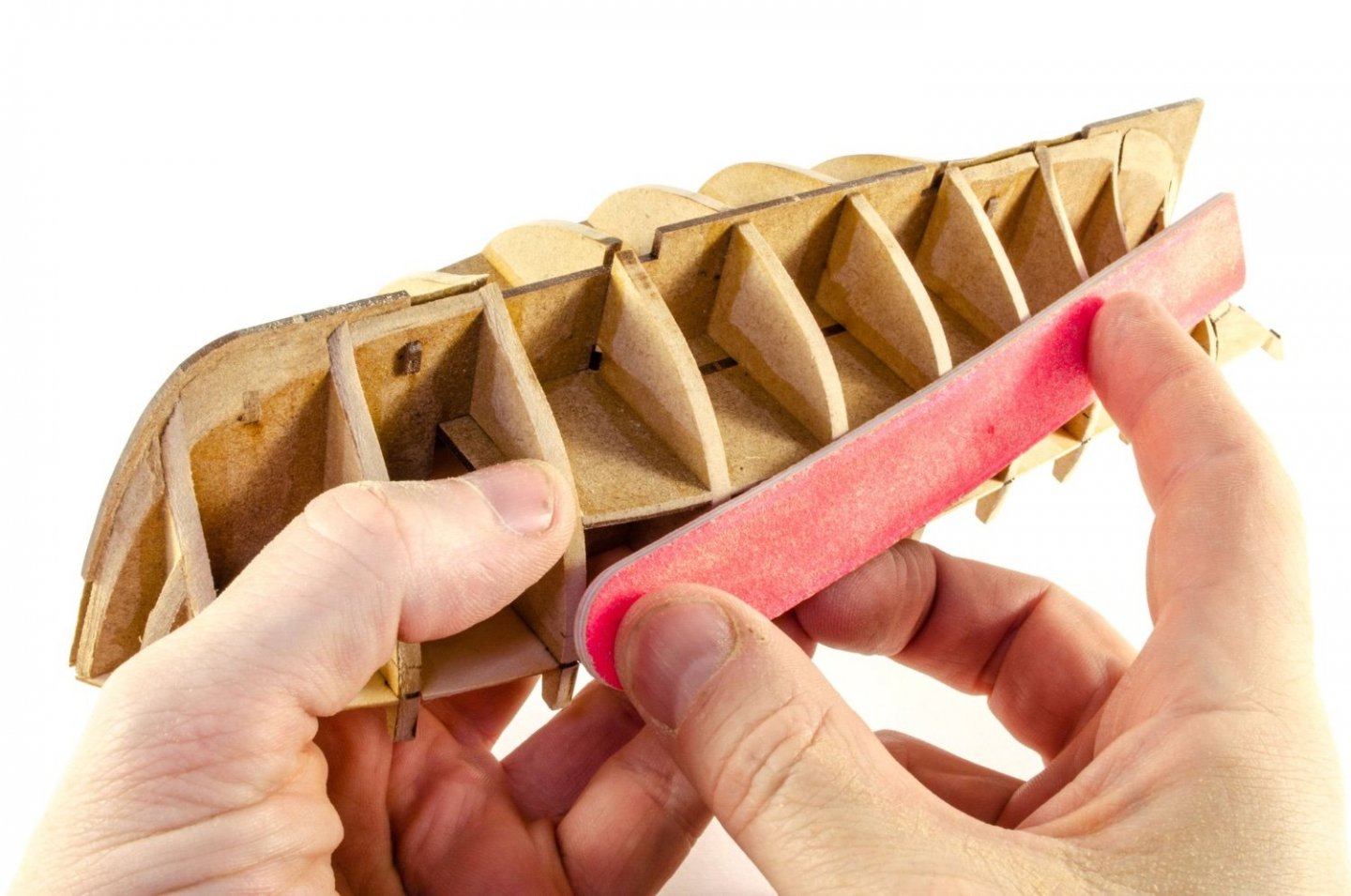
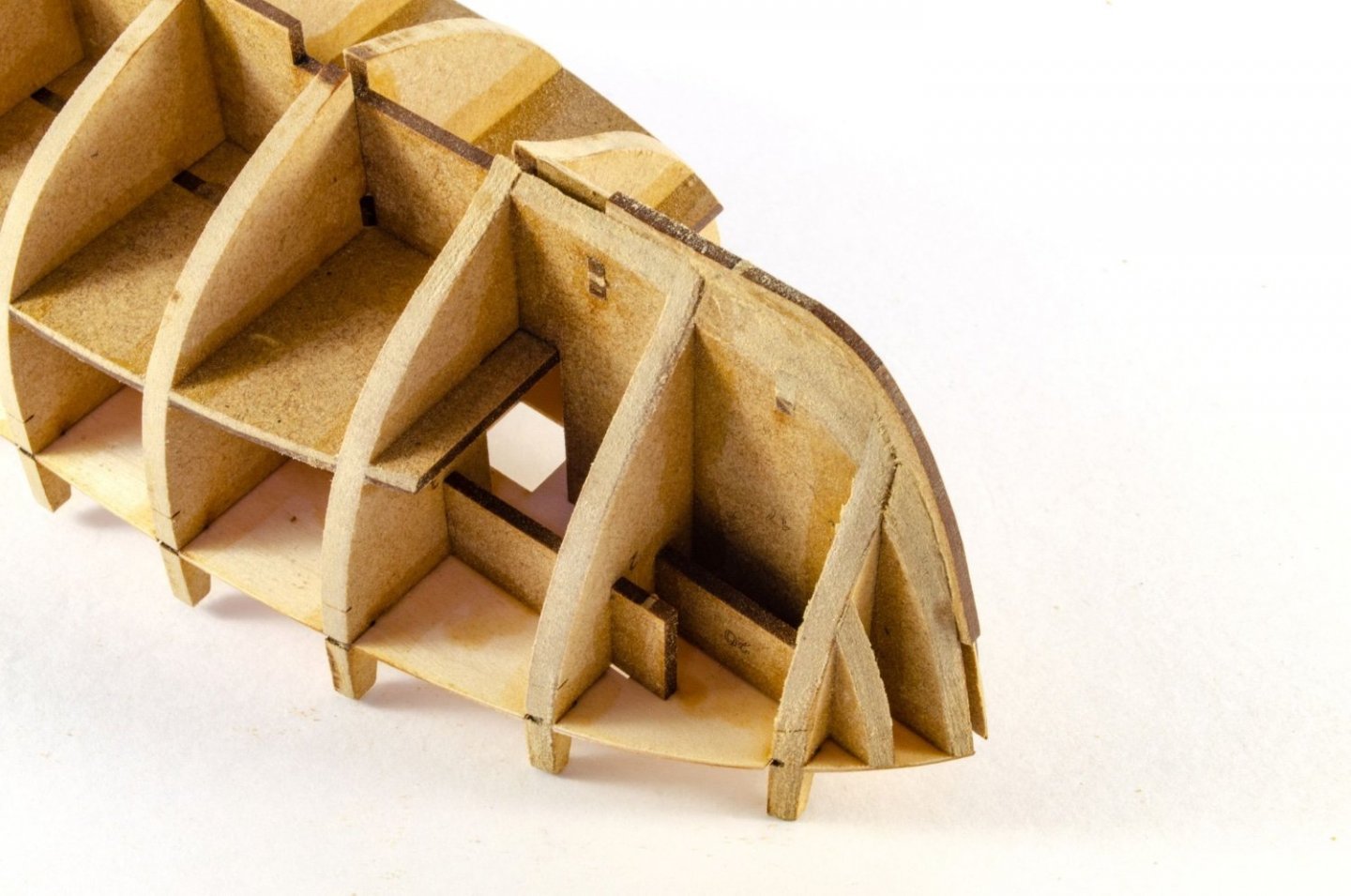
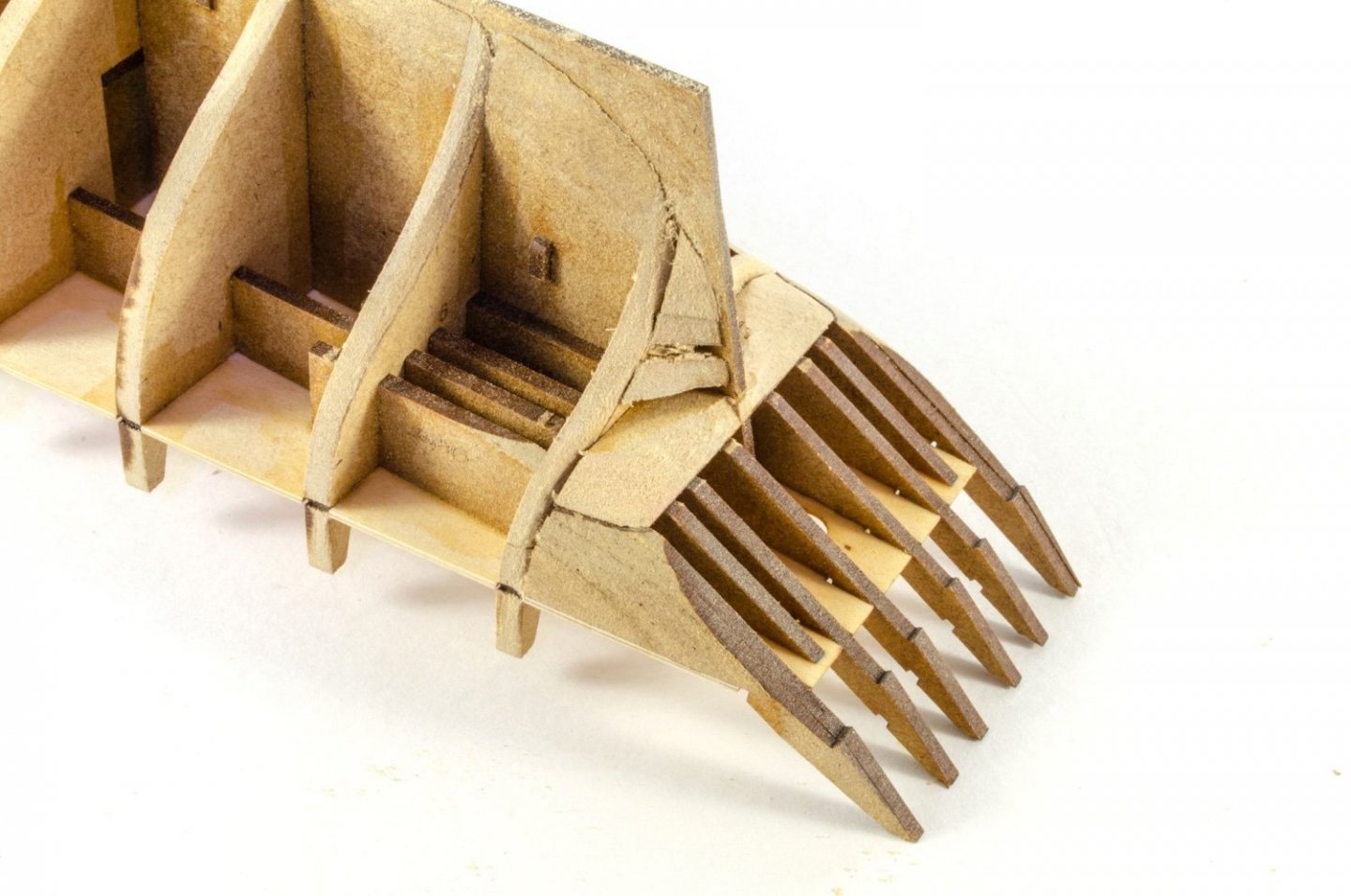
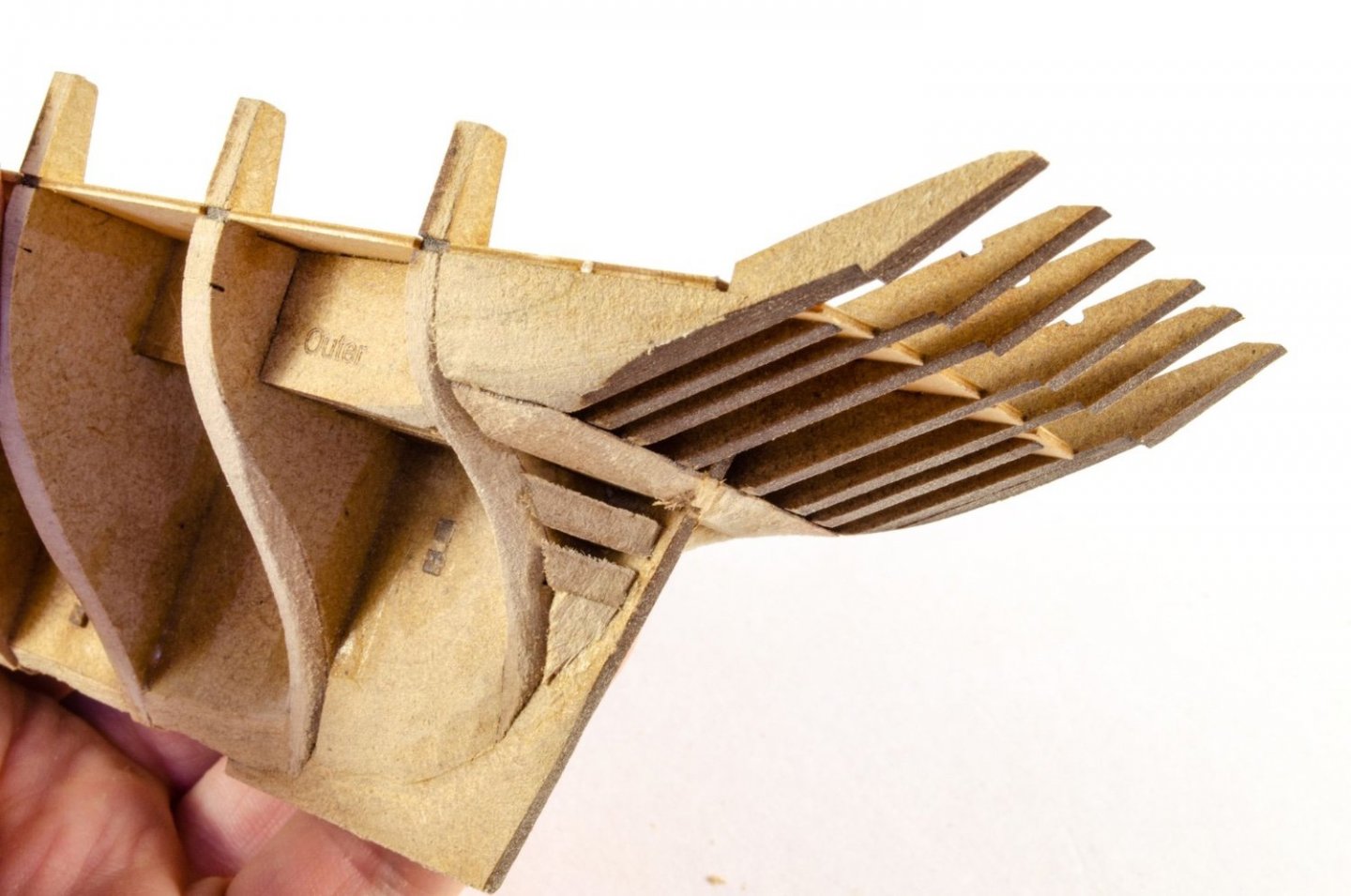
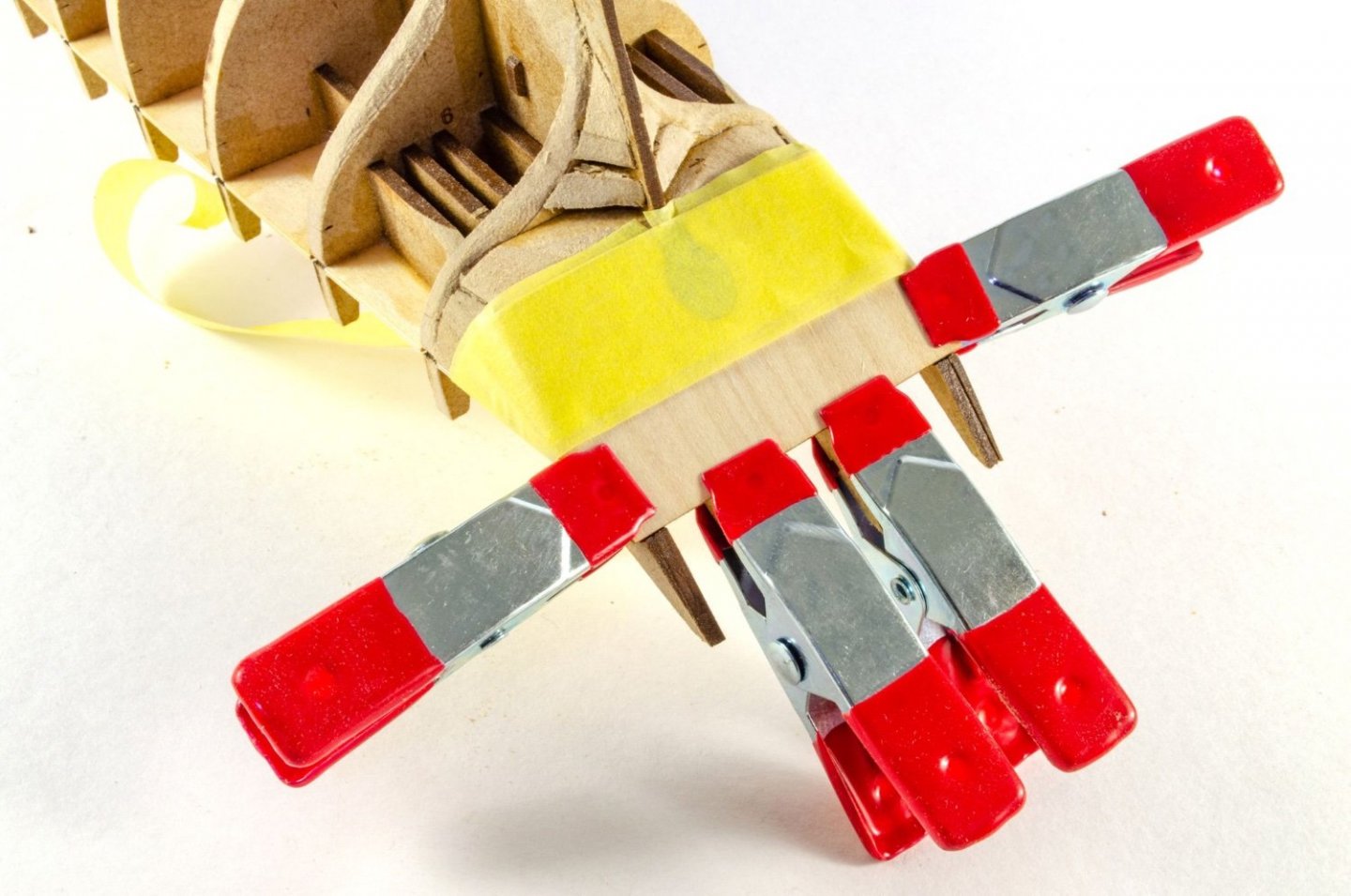
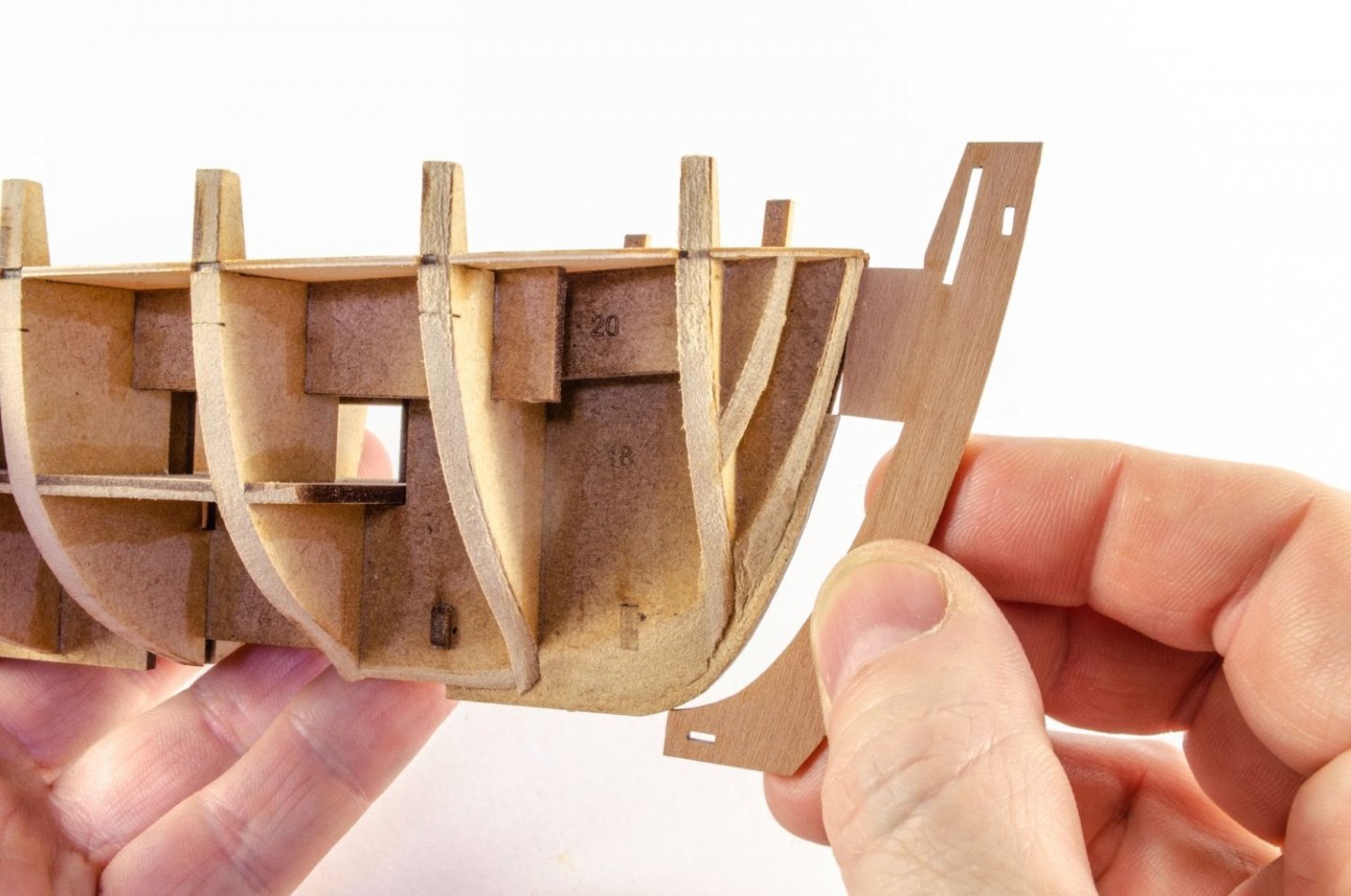
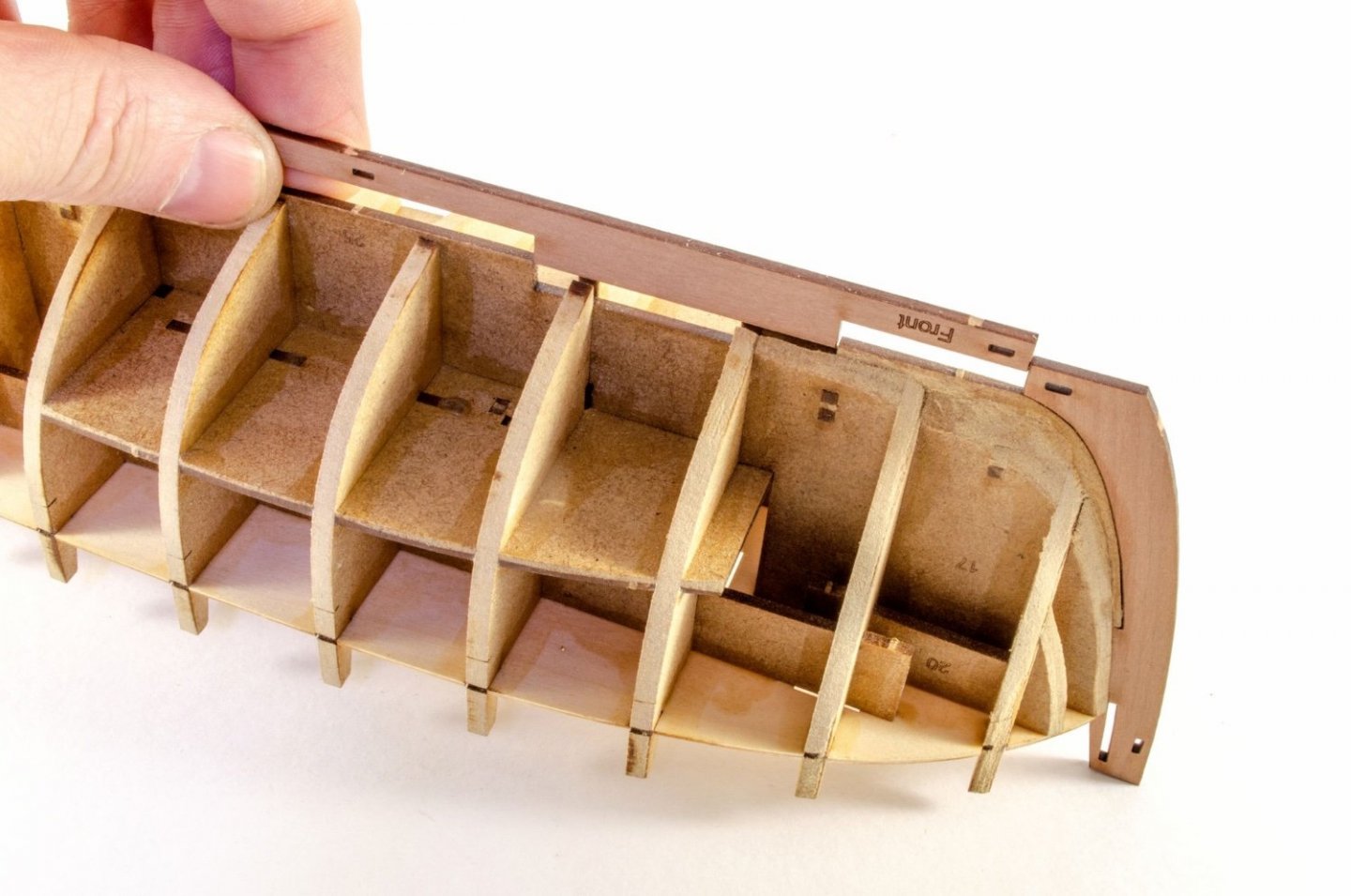
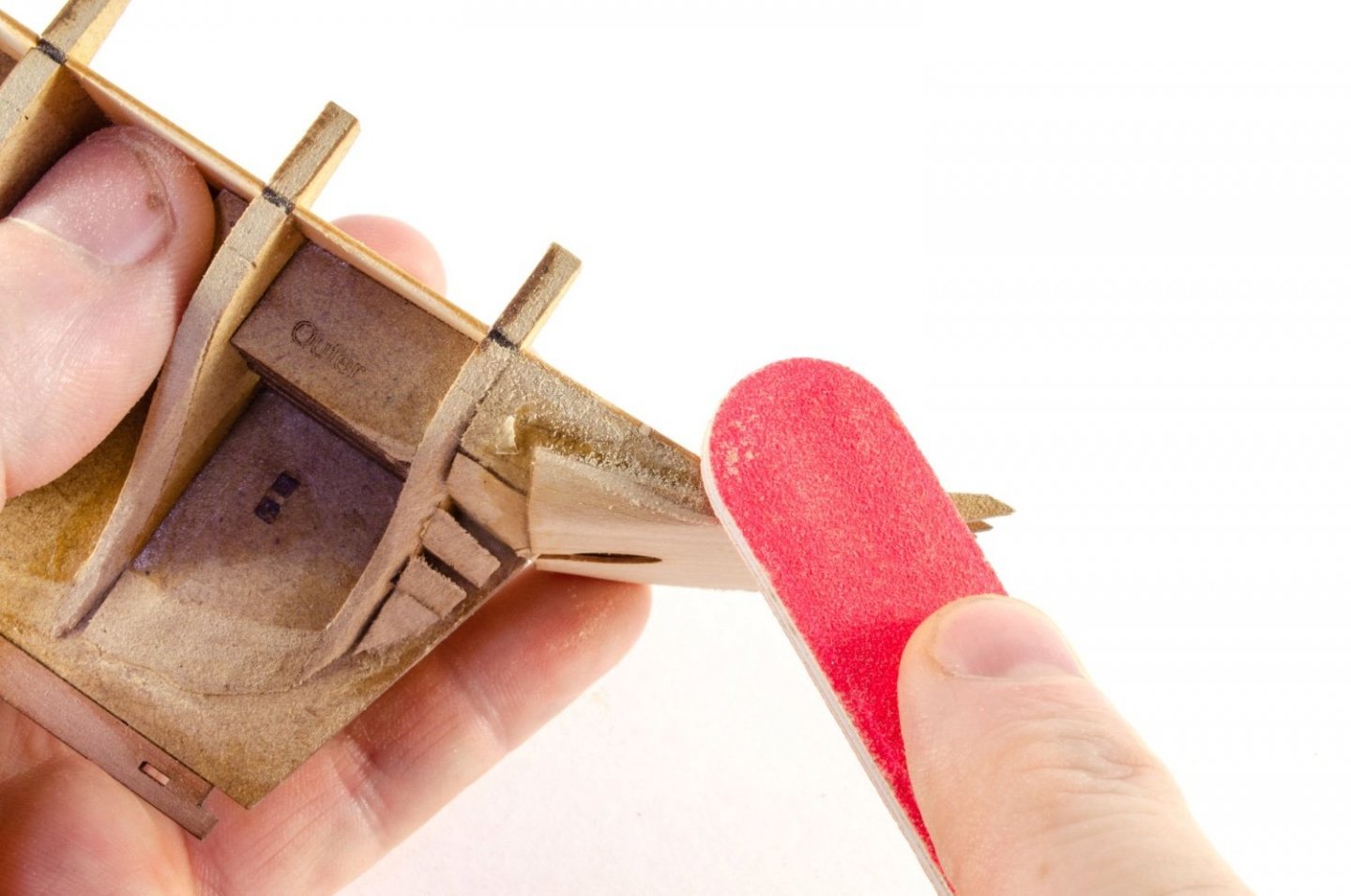
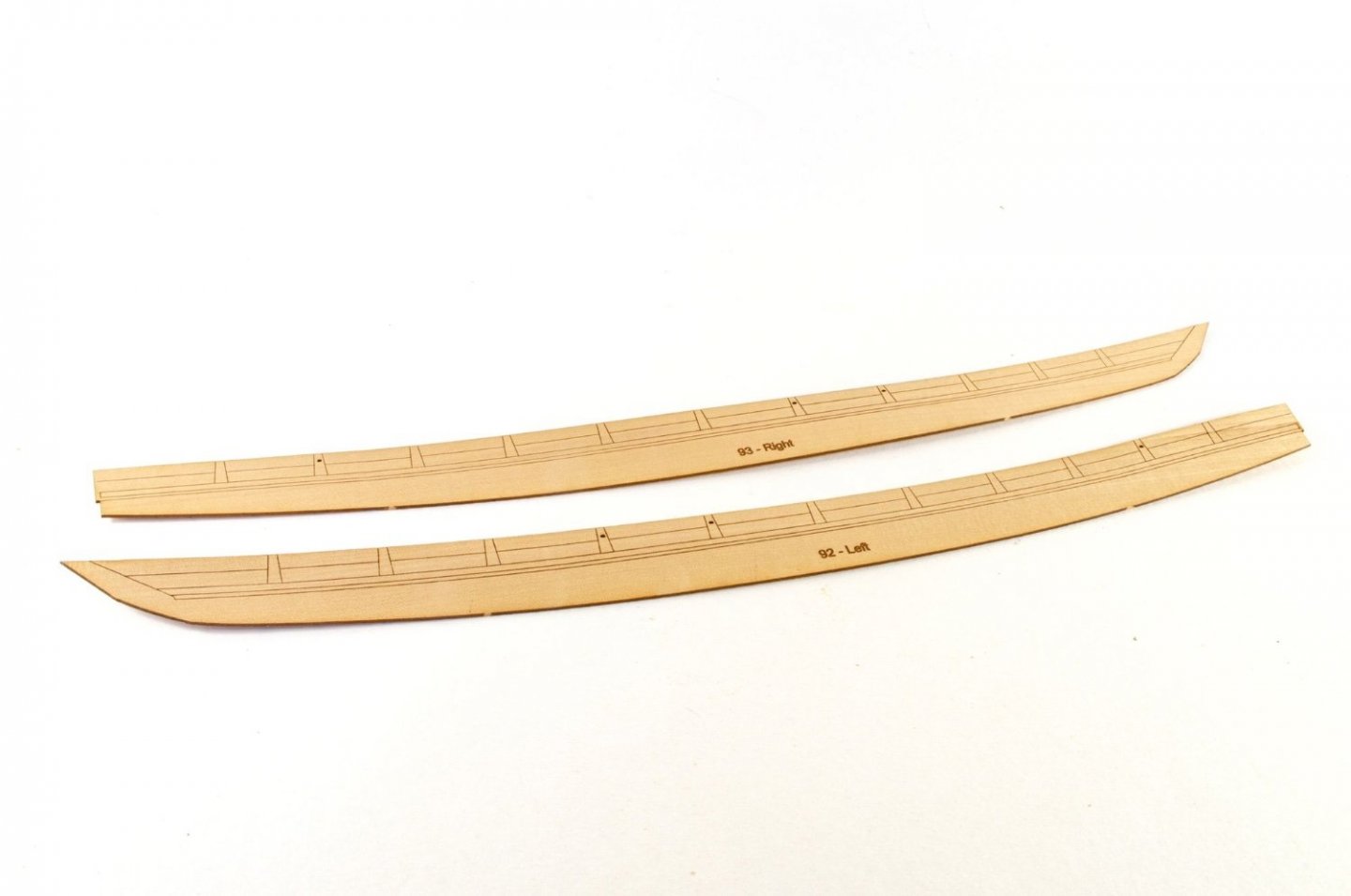
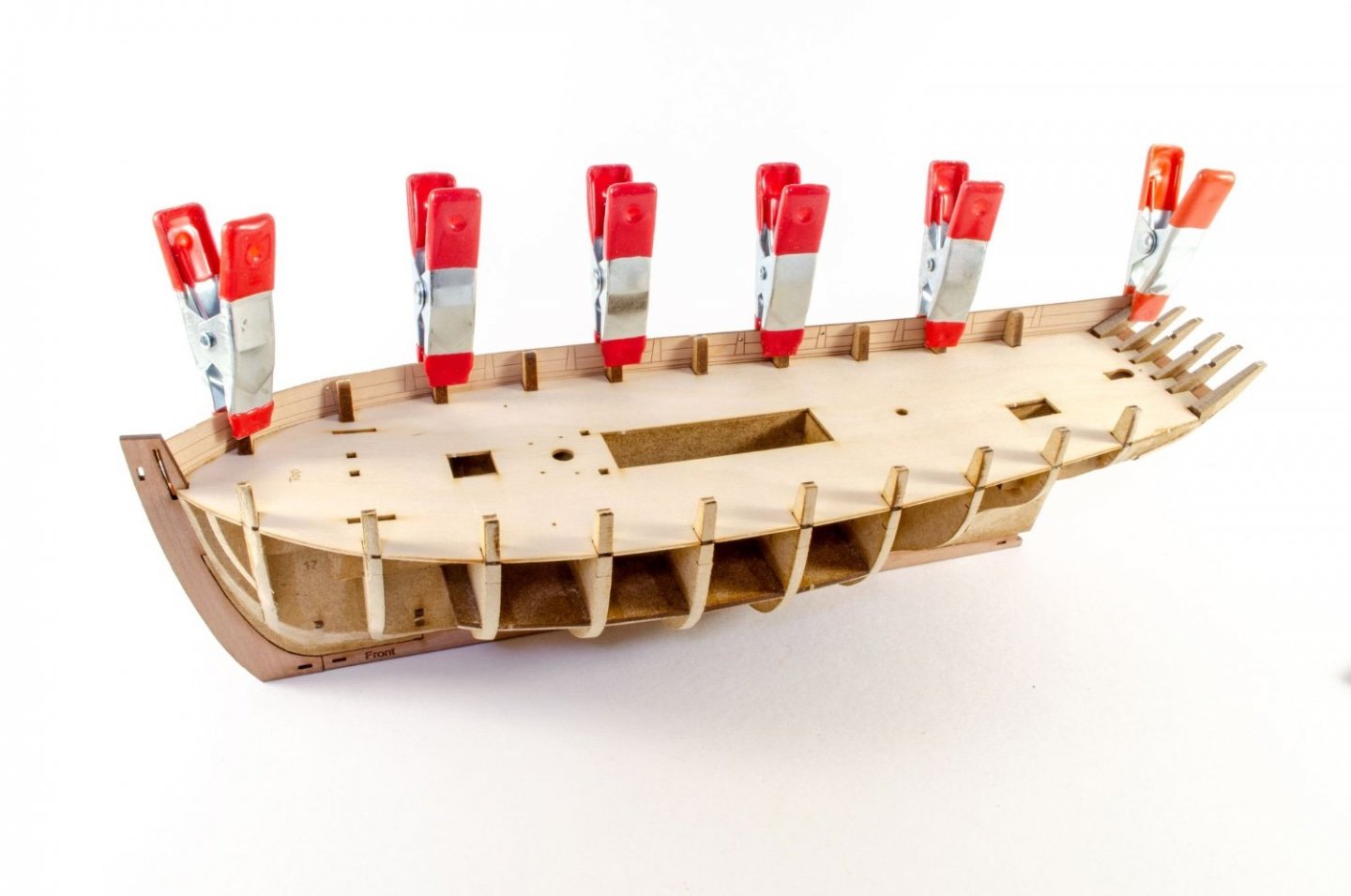
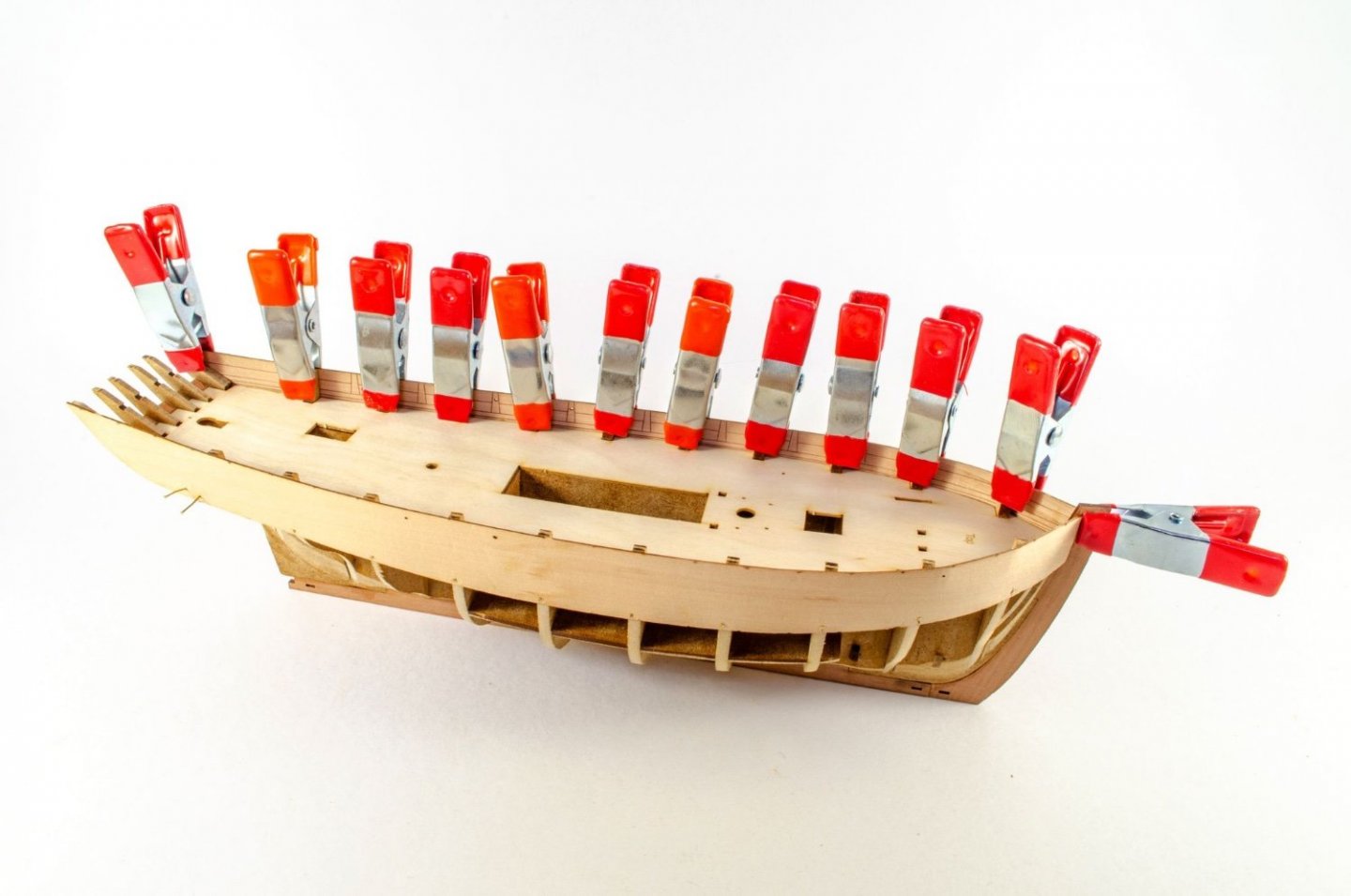
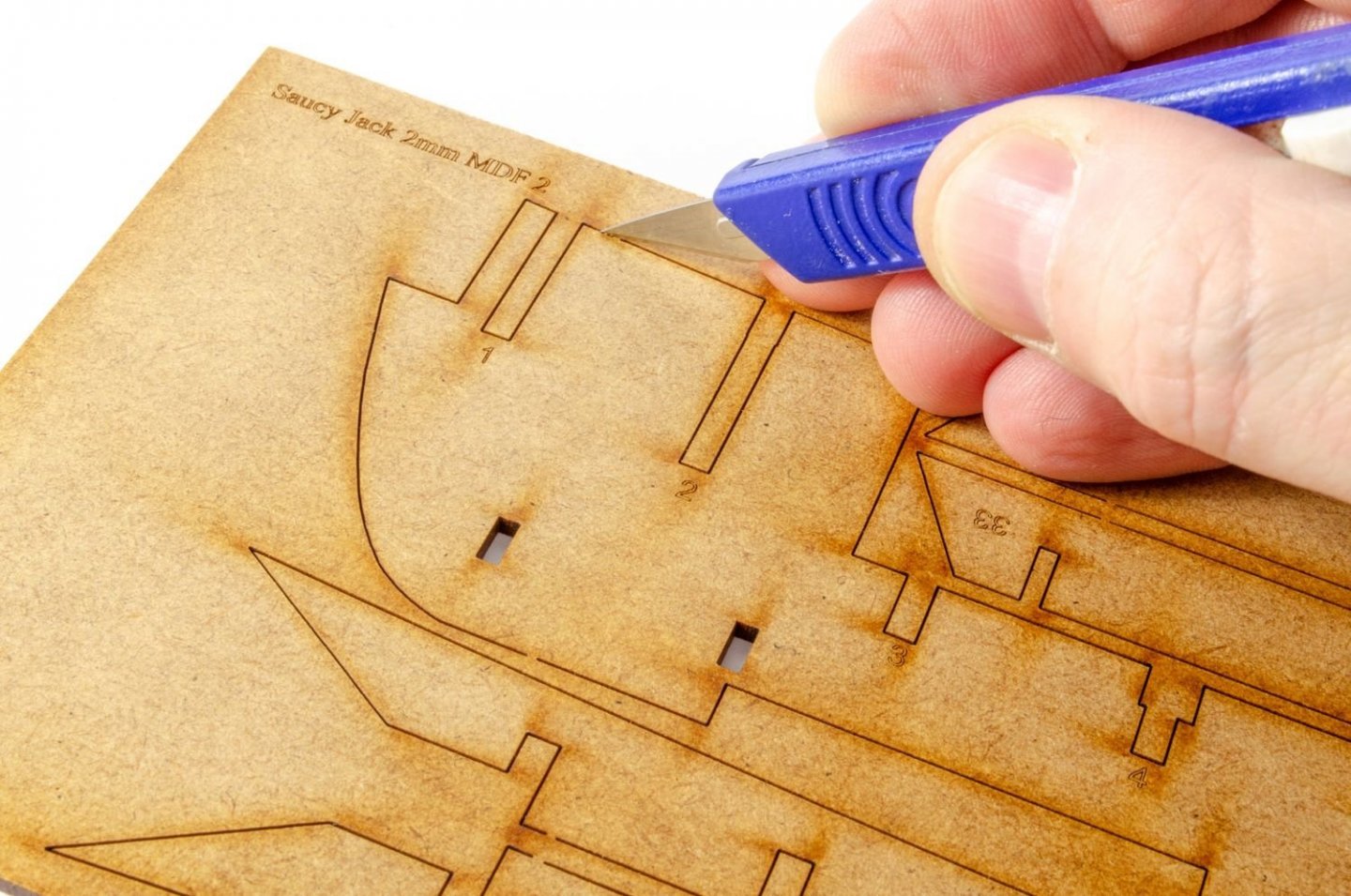
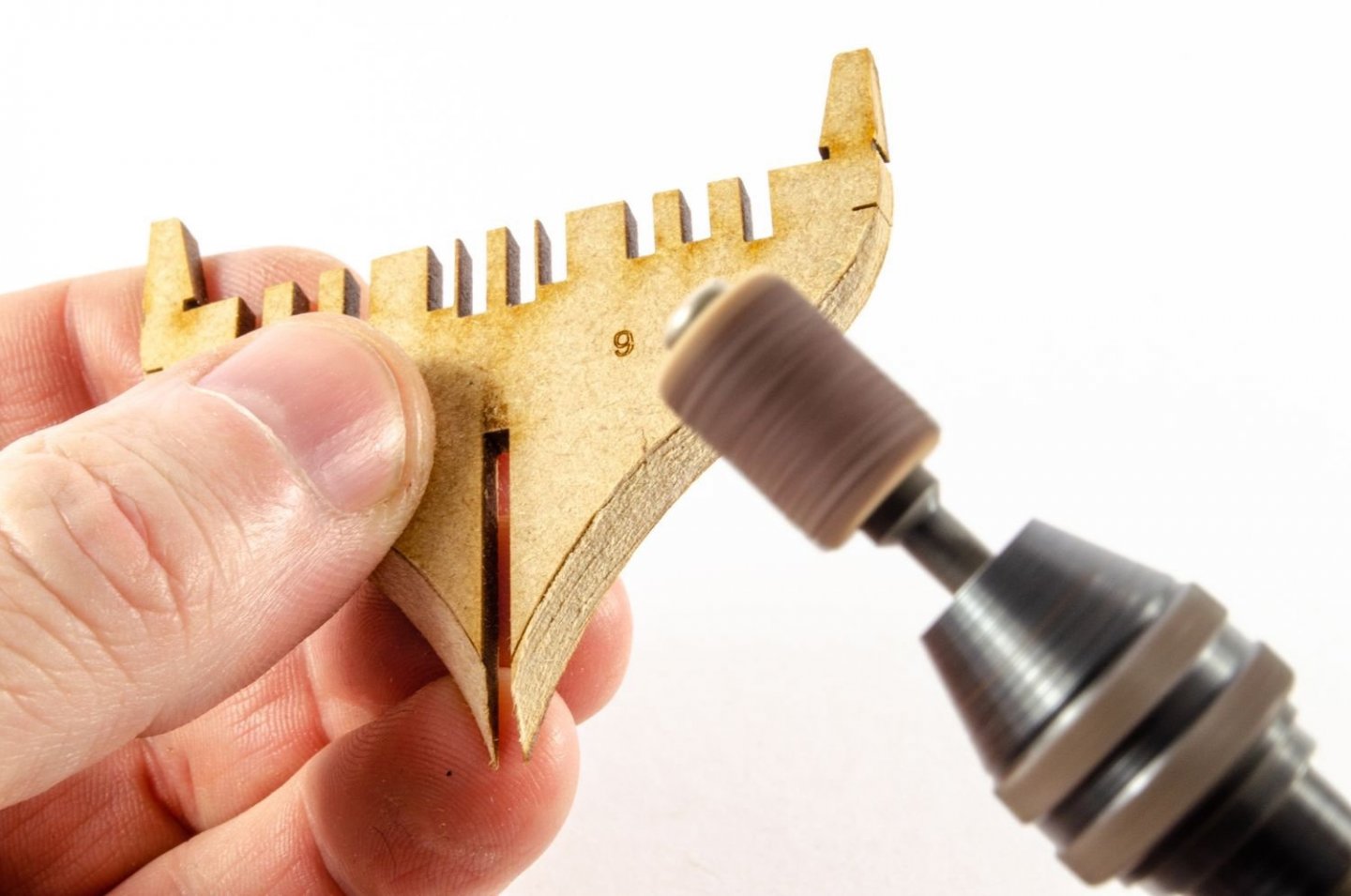
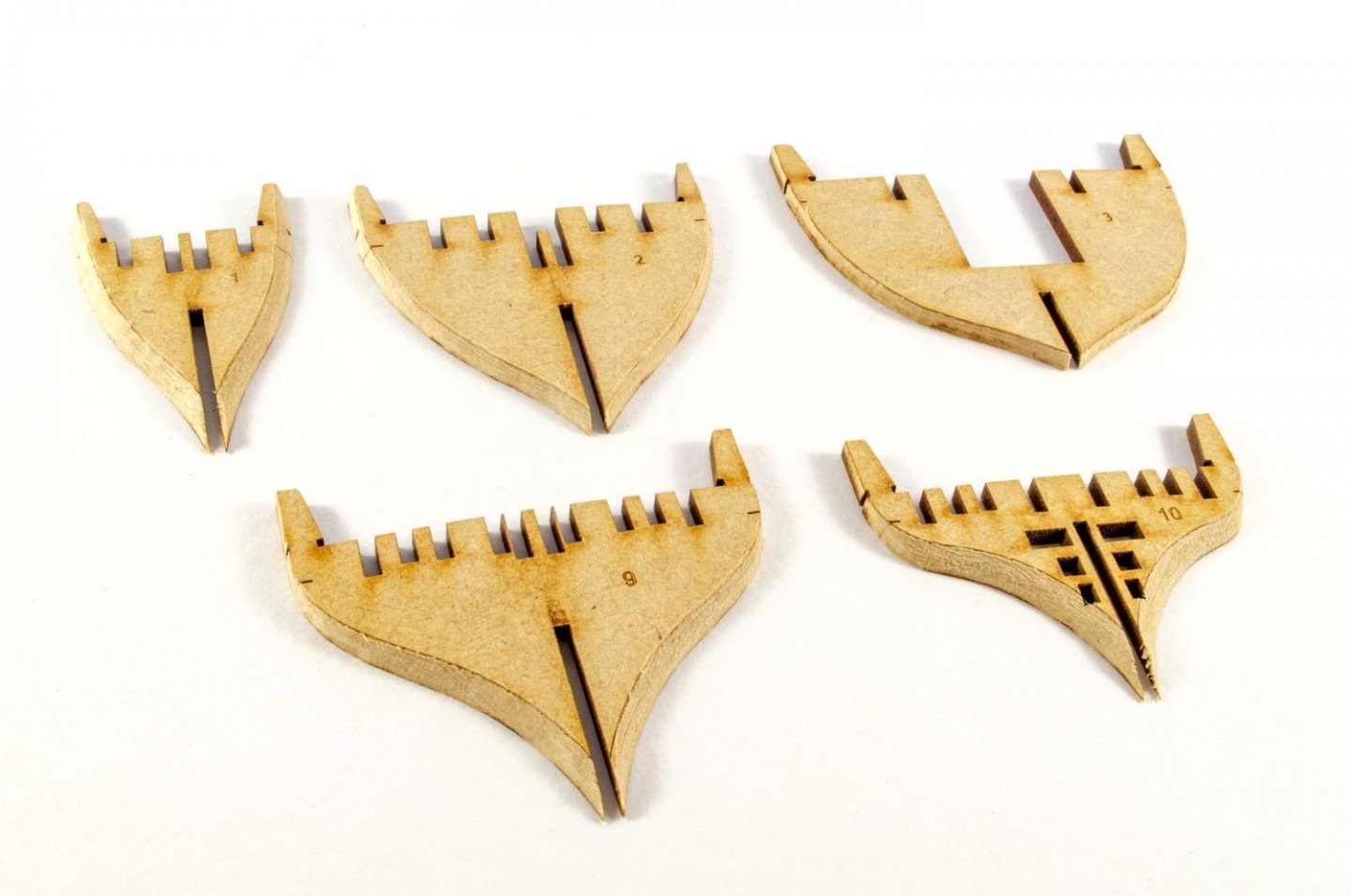

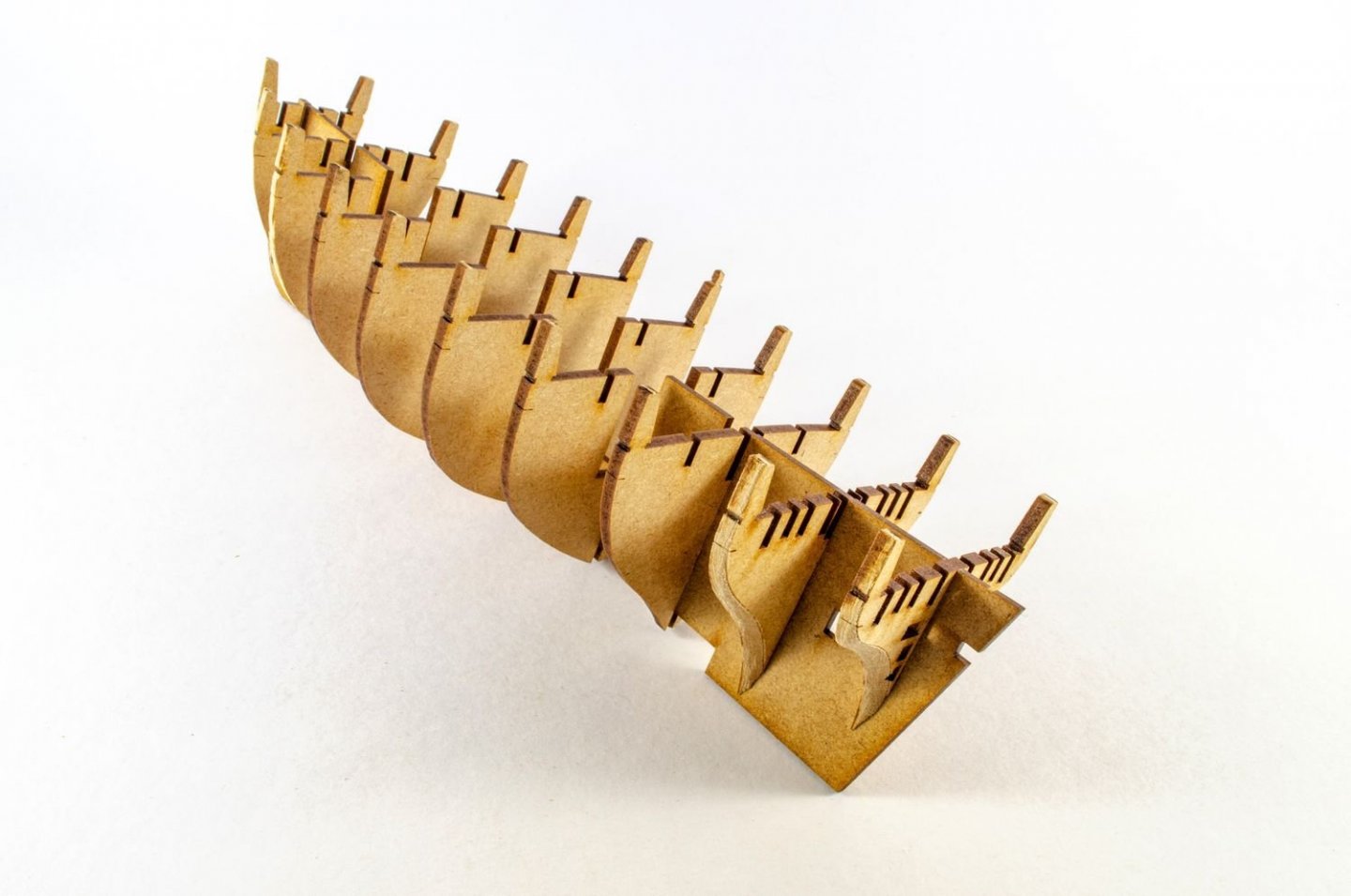
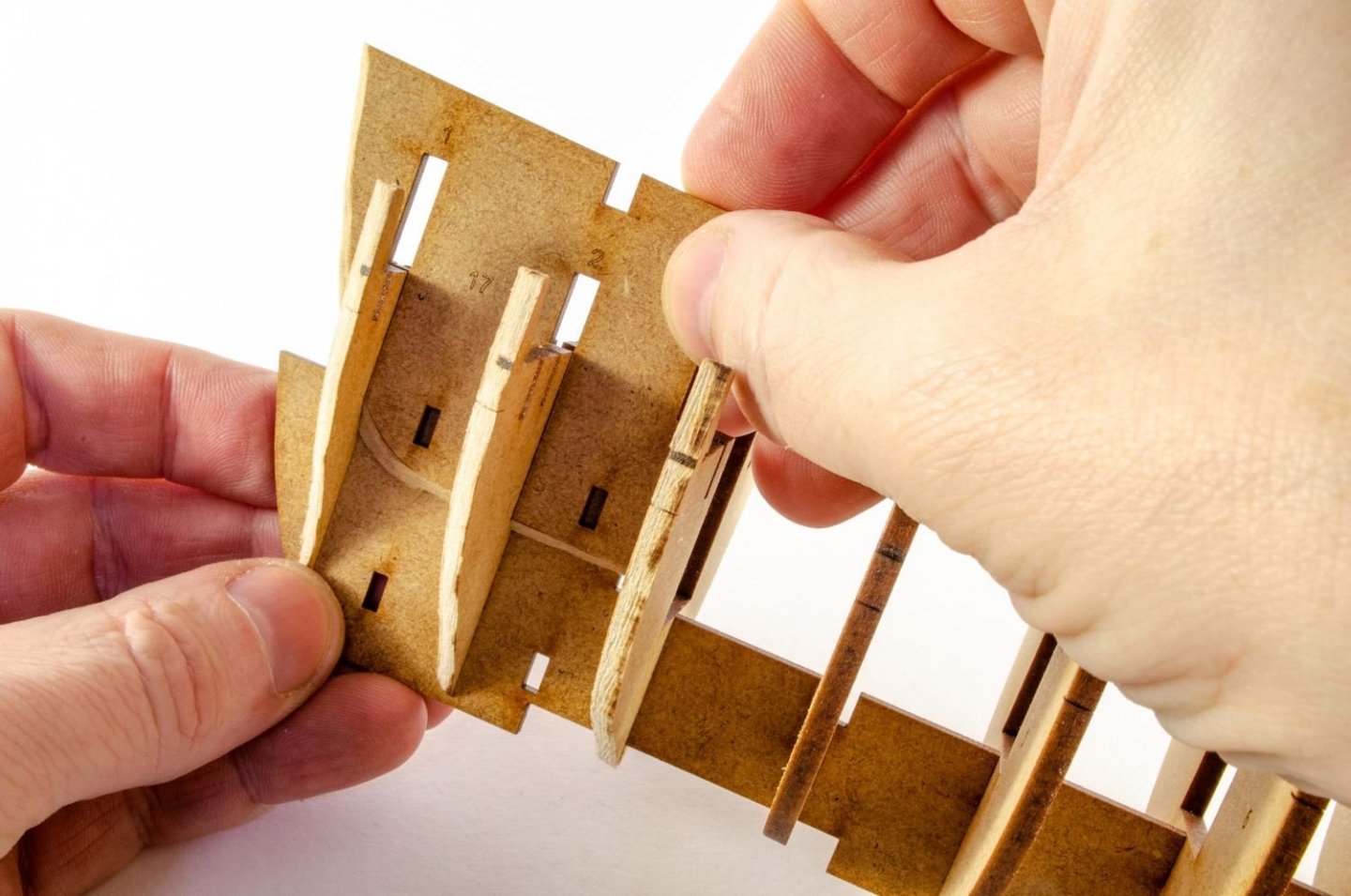

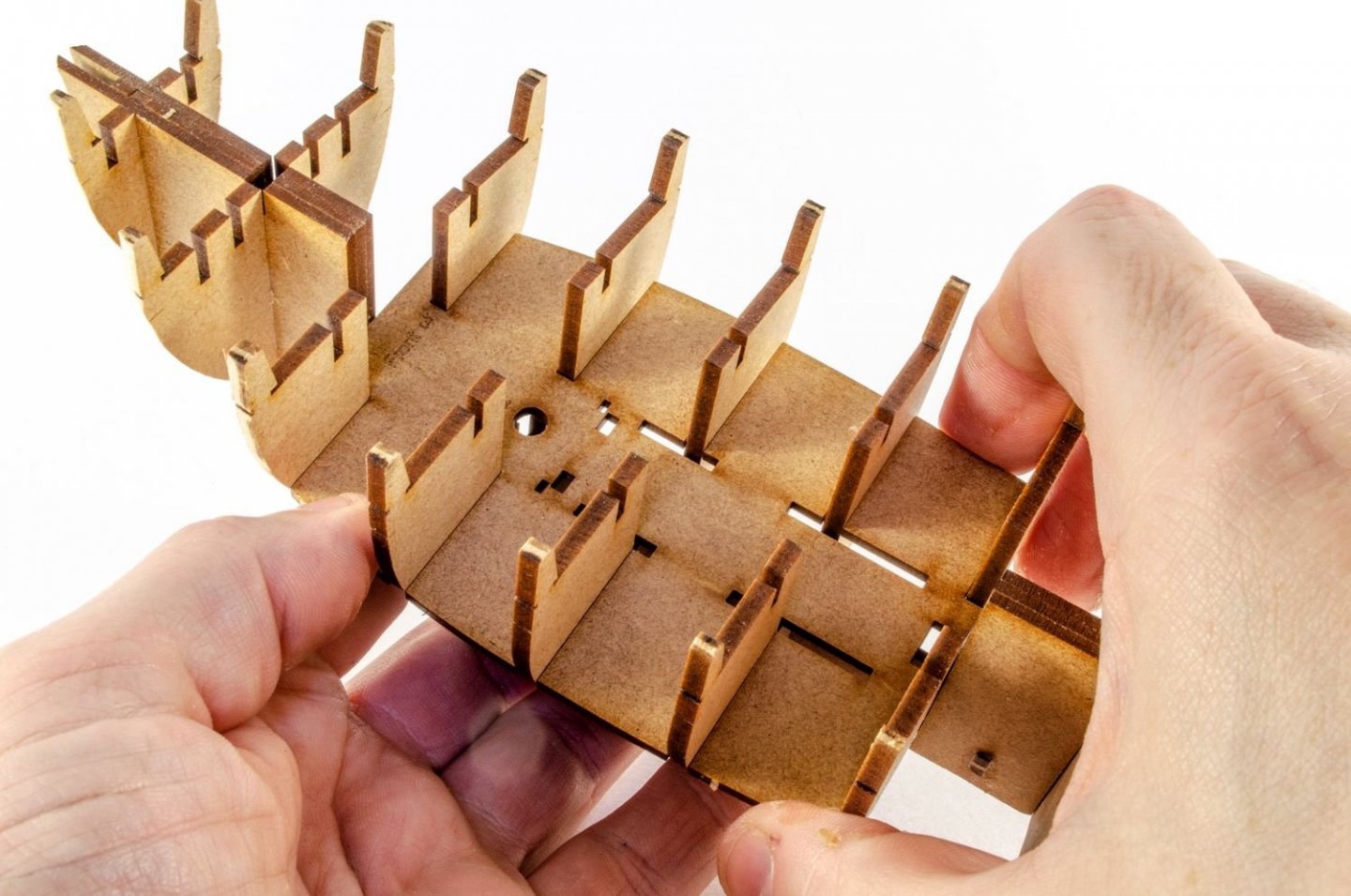
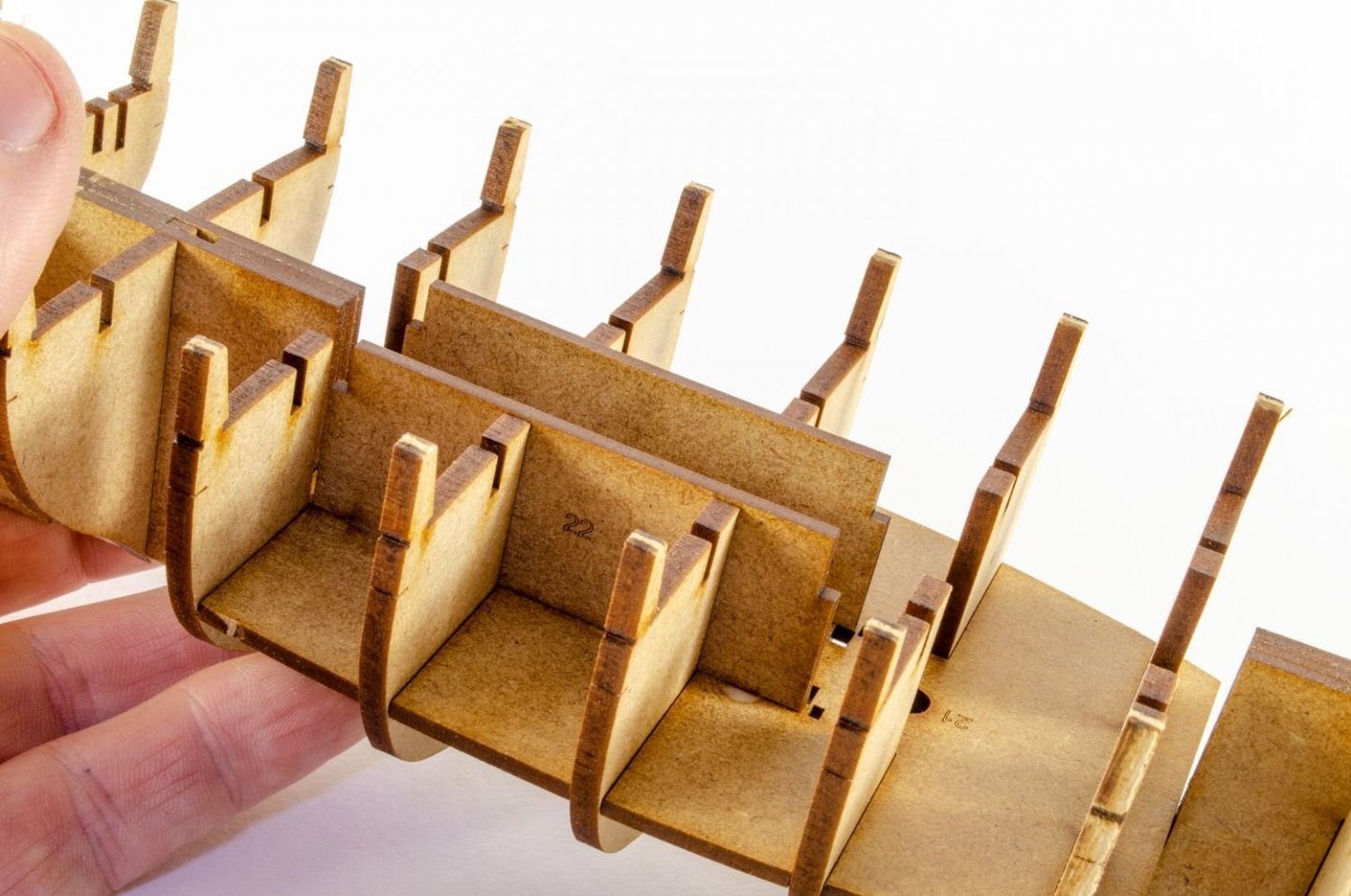

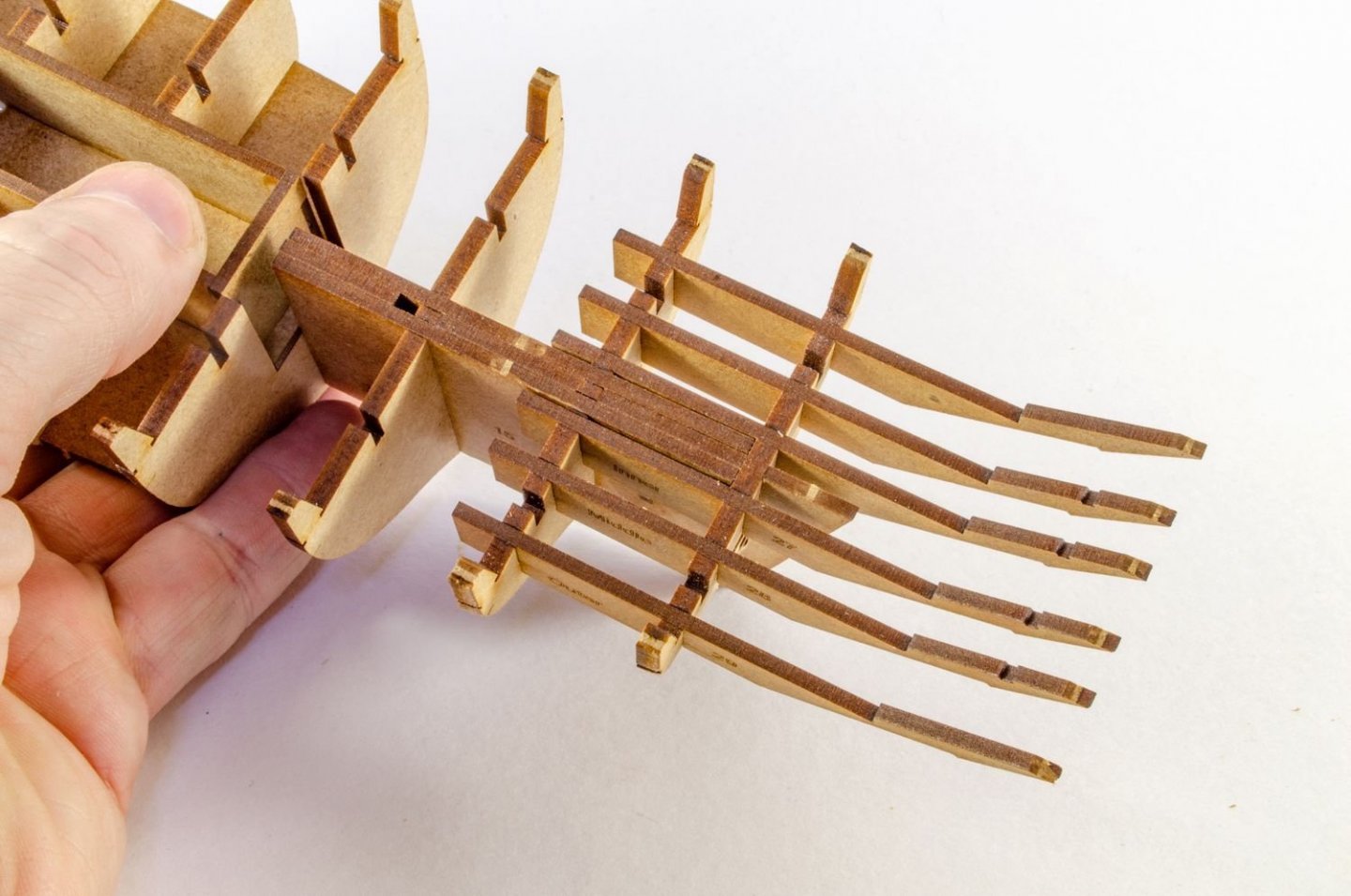
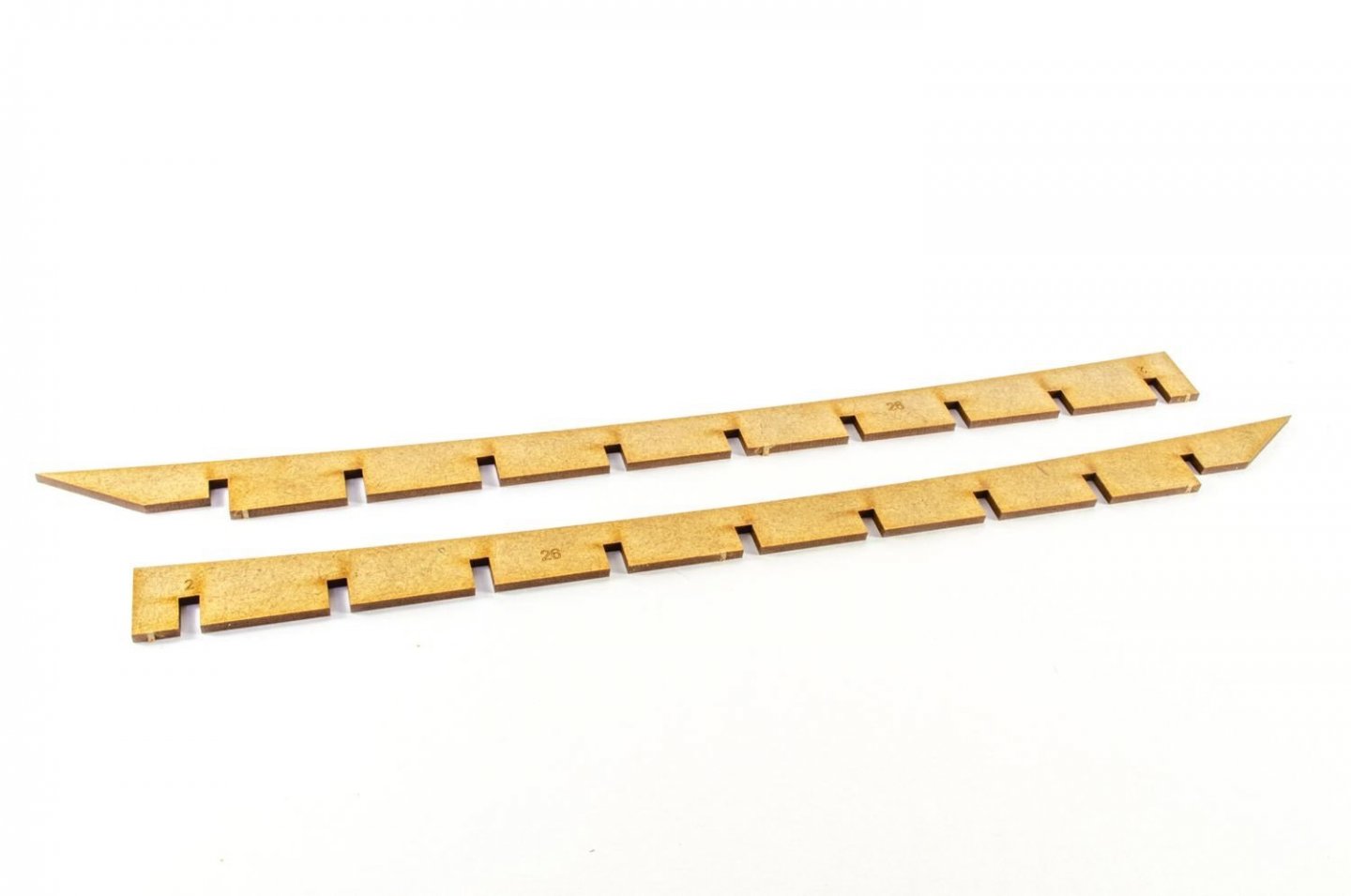
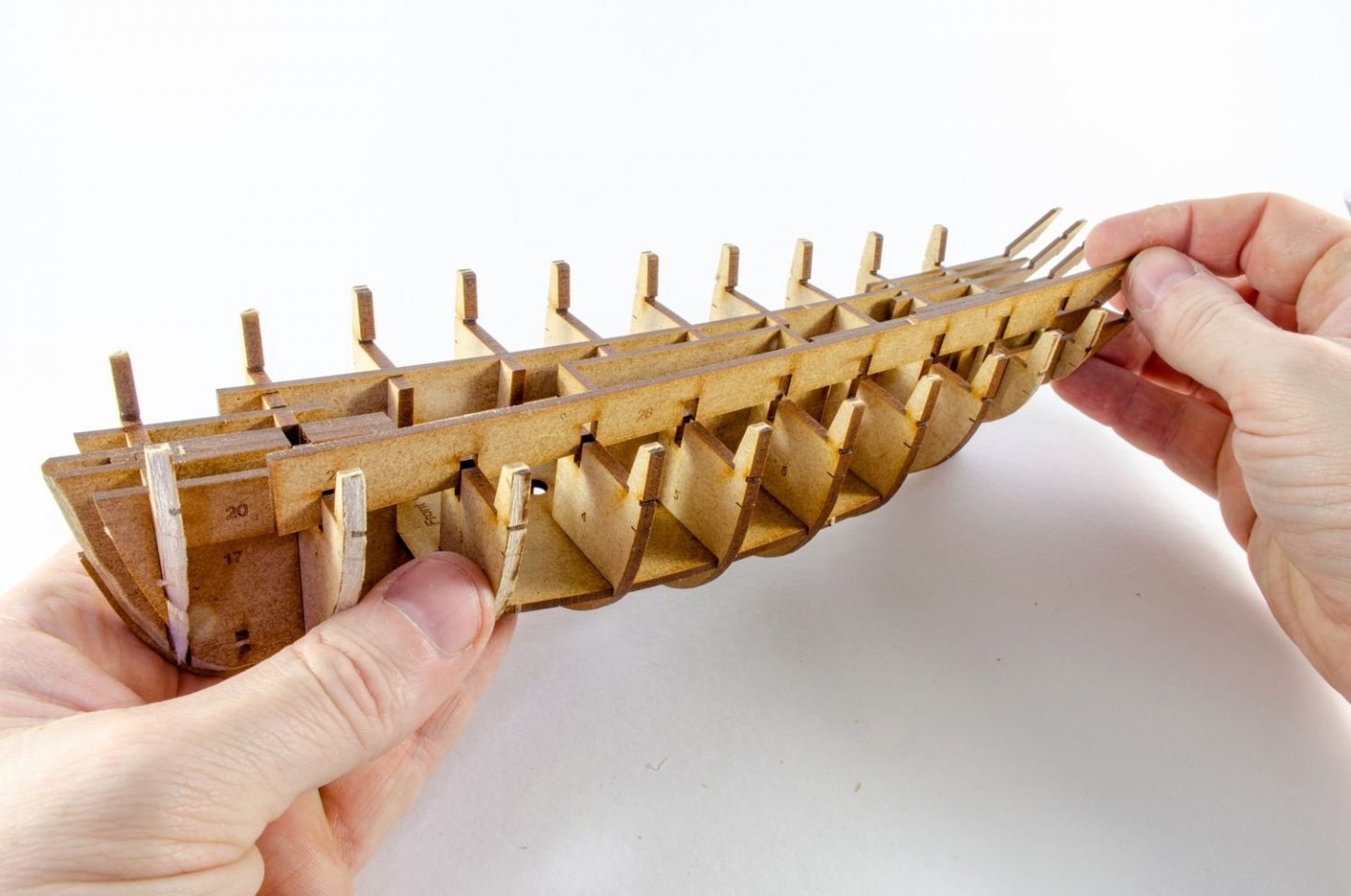

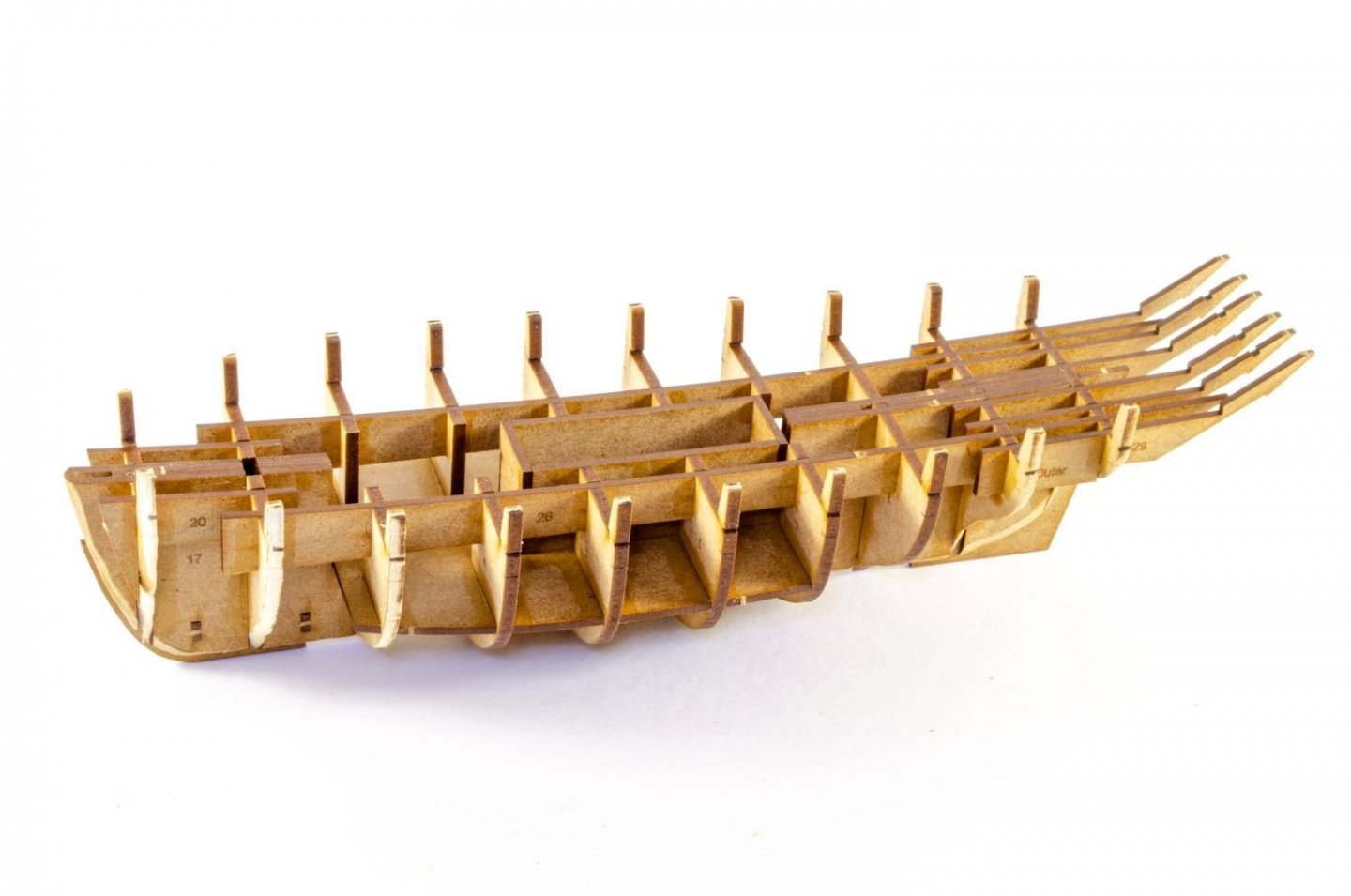
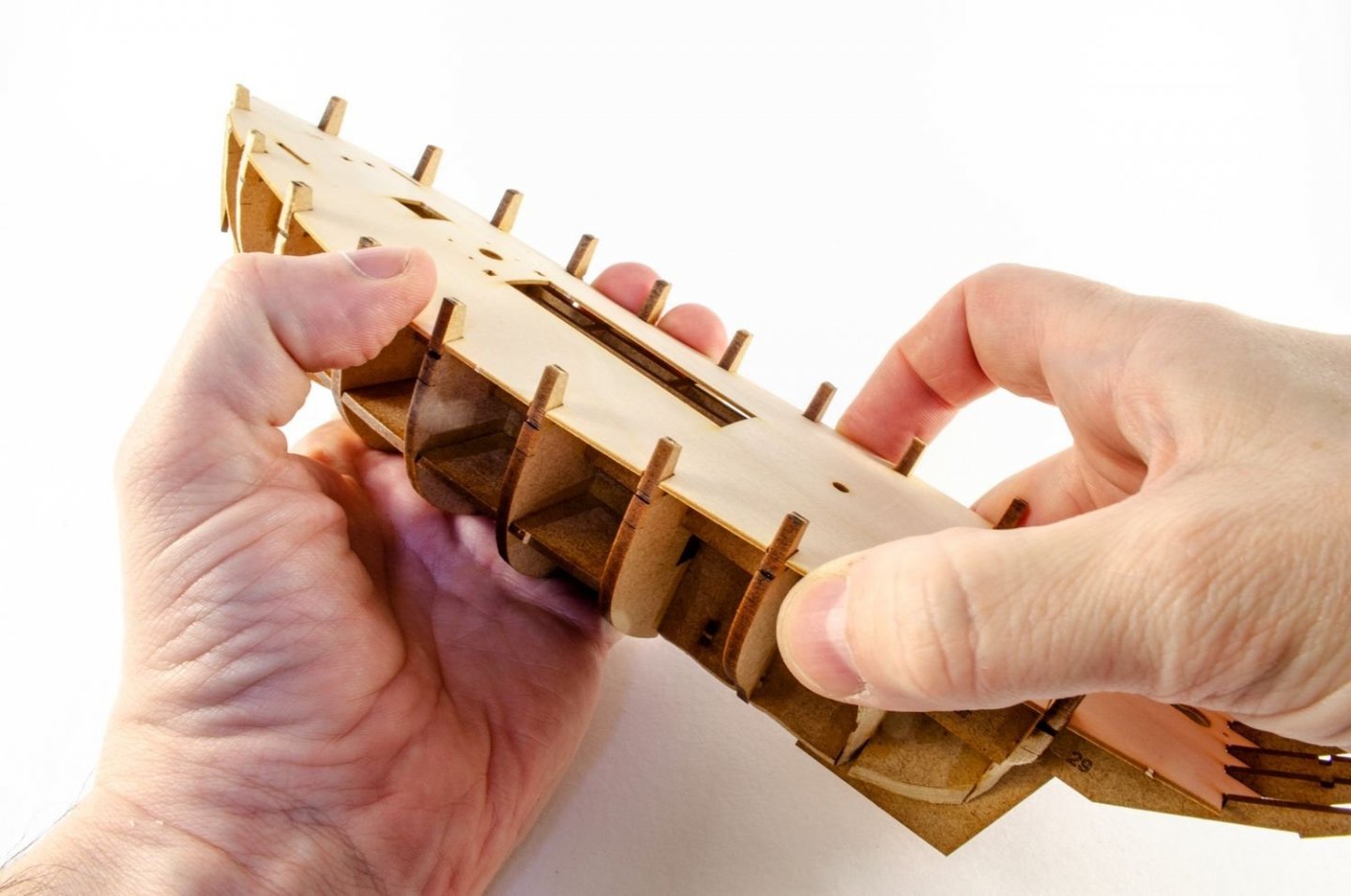
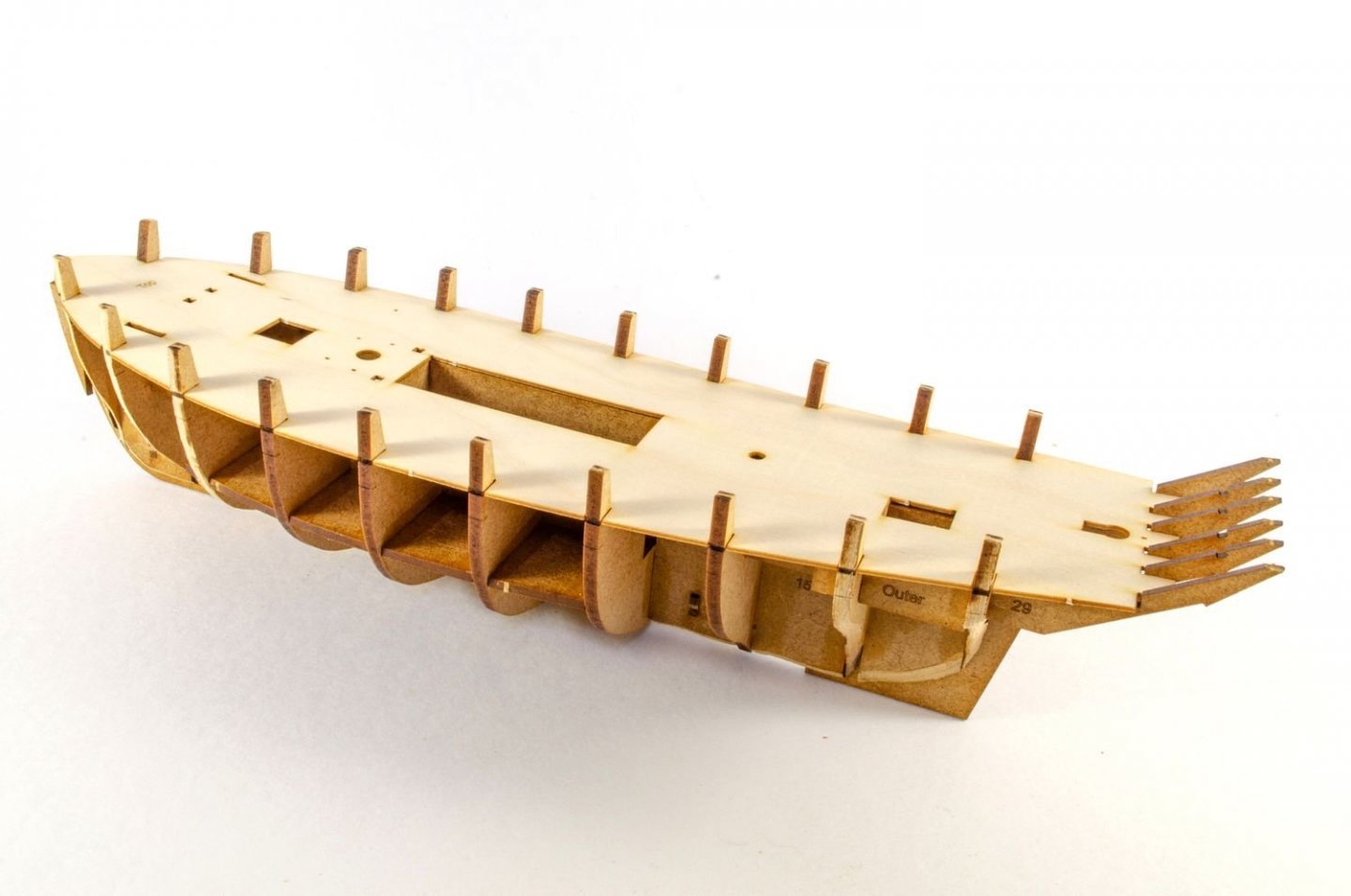

1:65 Santa Maria – 1492 - Artesania Latina
in REVIEWS: Model kits
Posted
The Endeavour will be online within the next week too